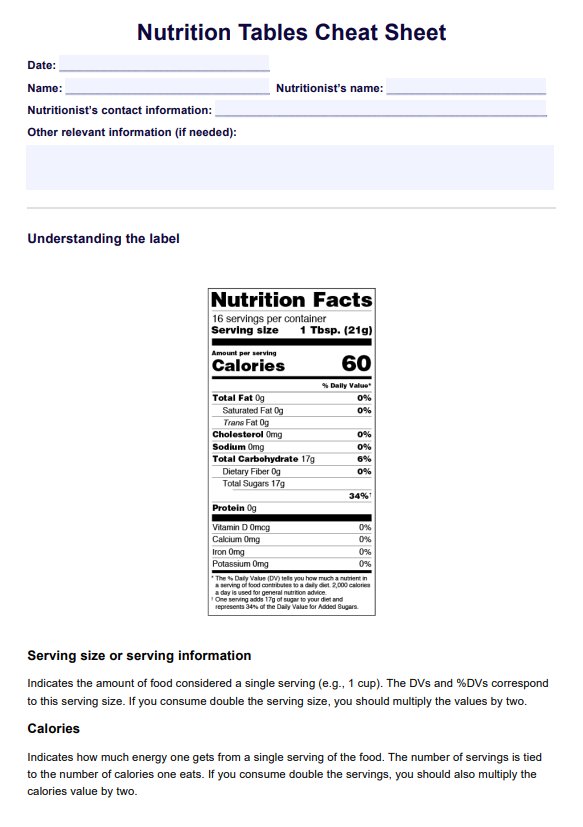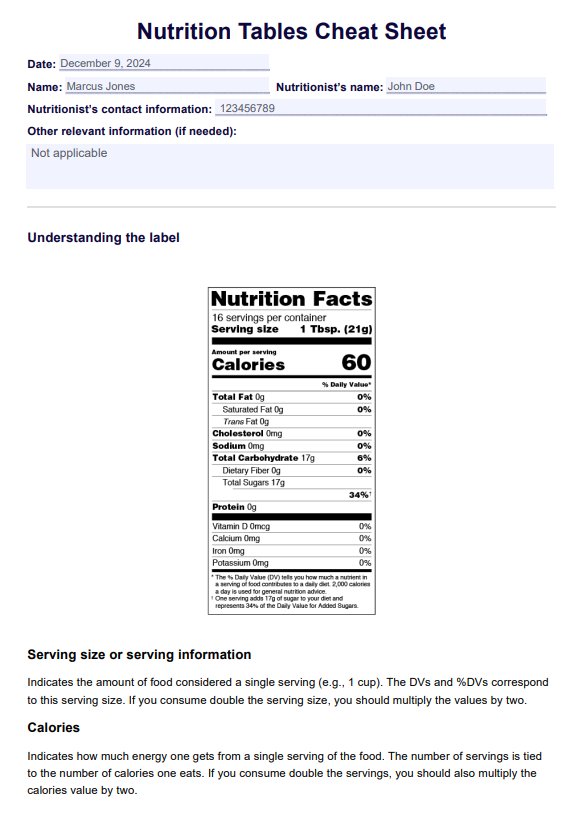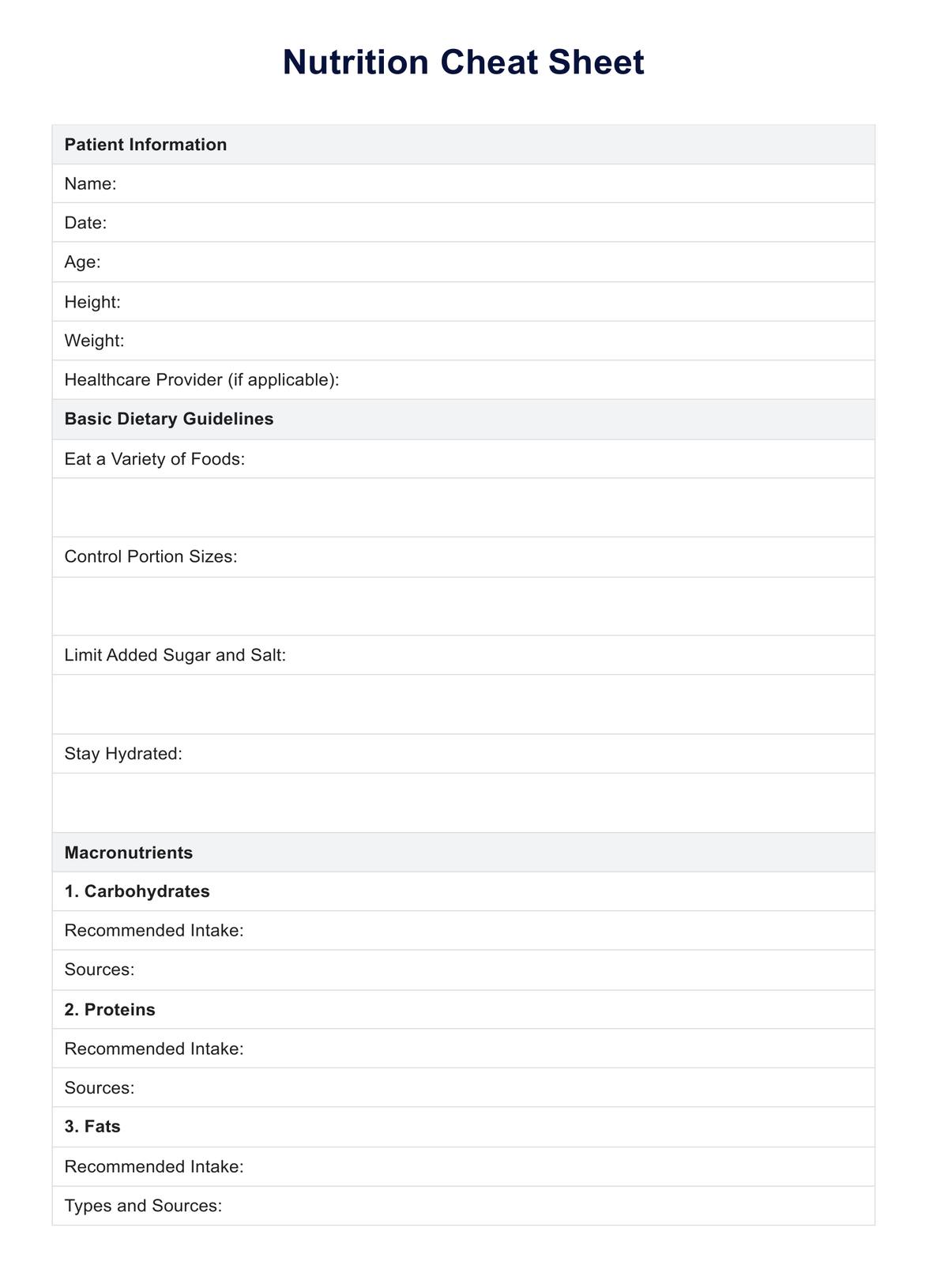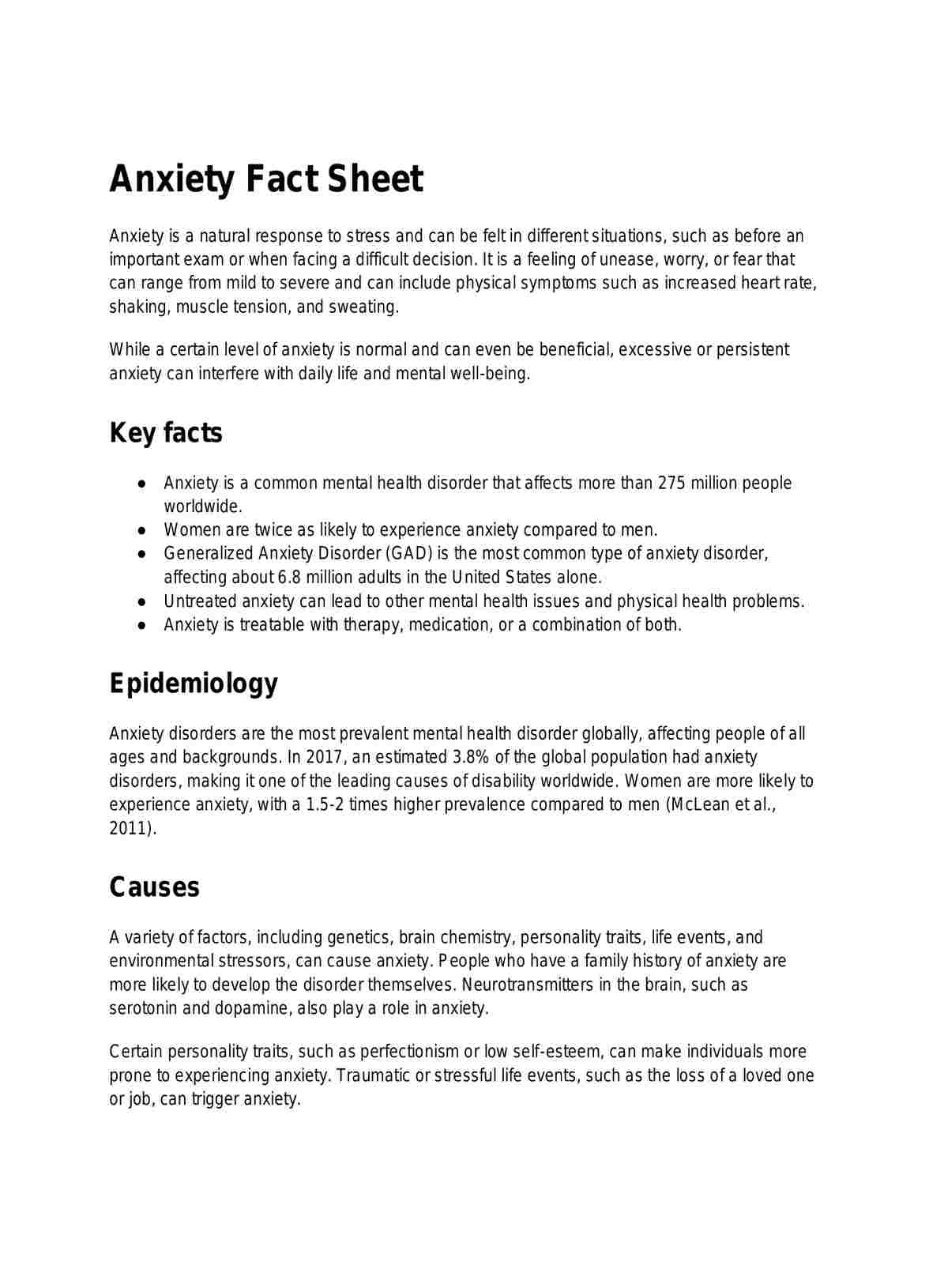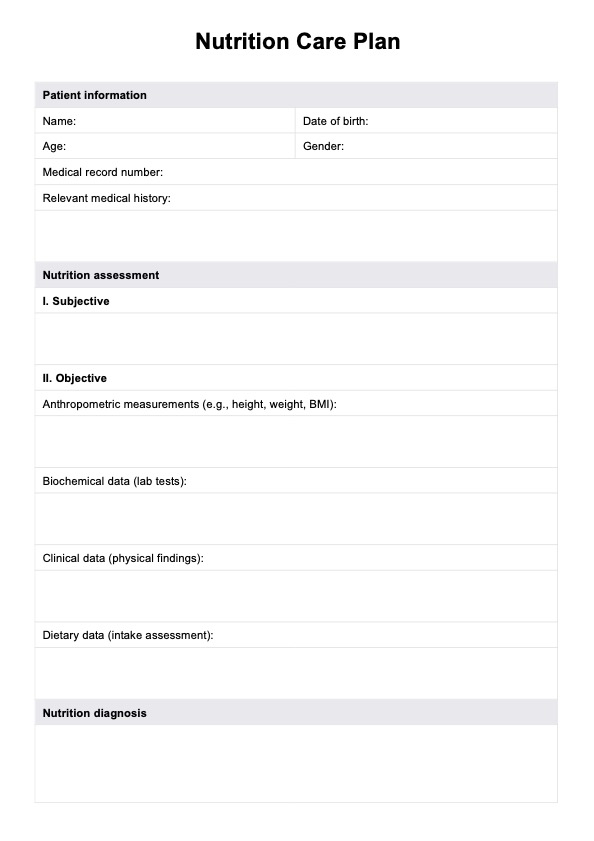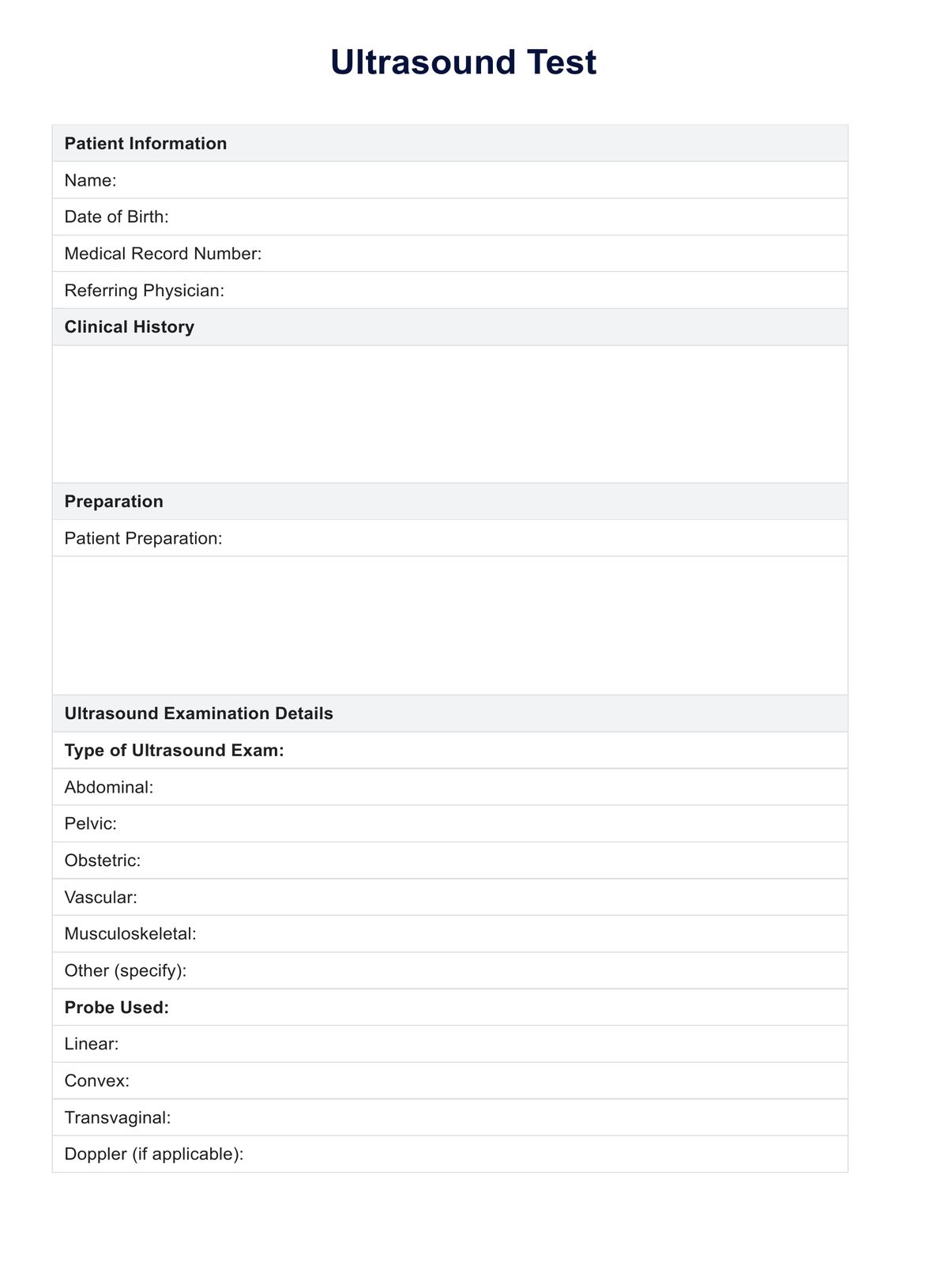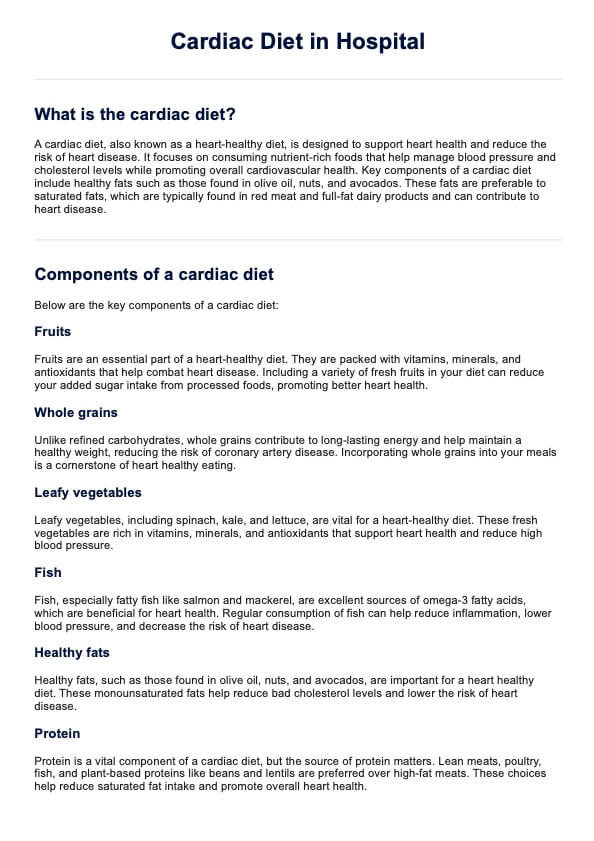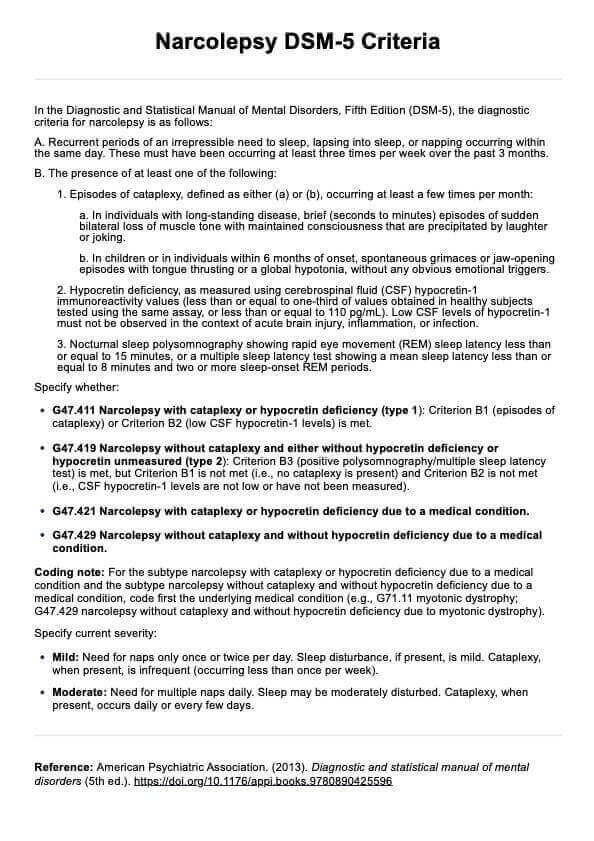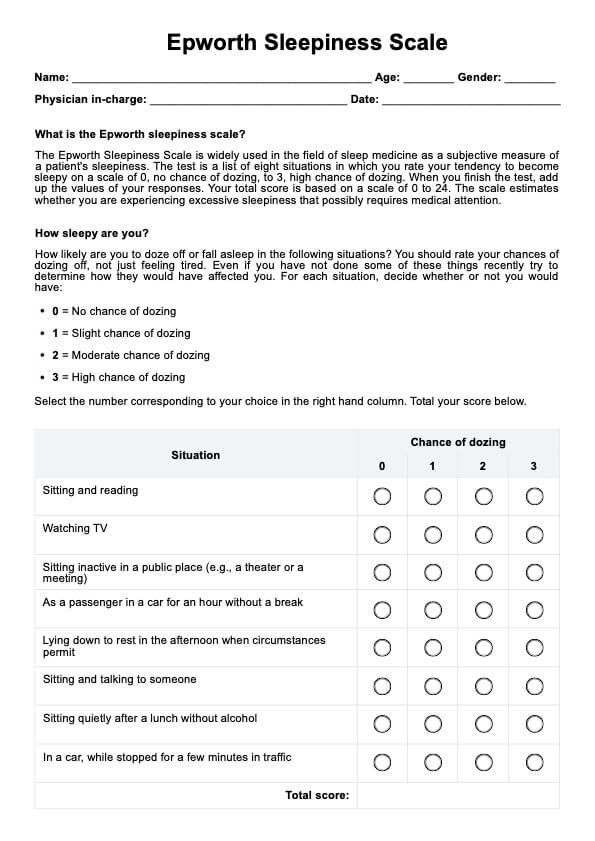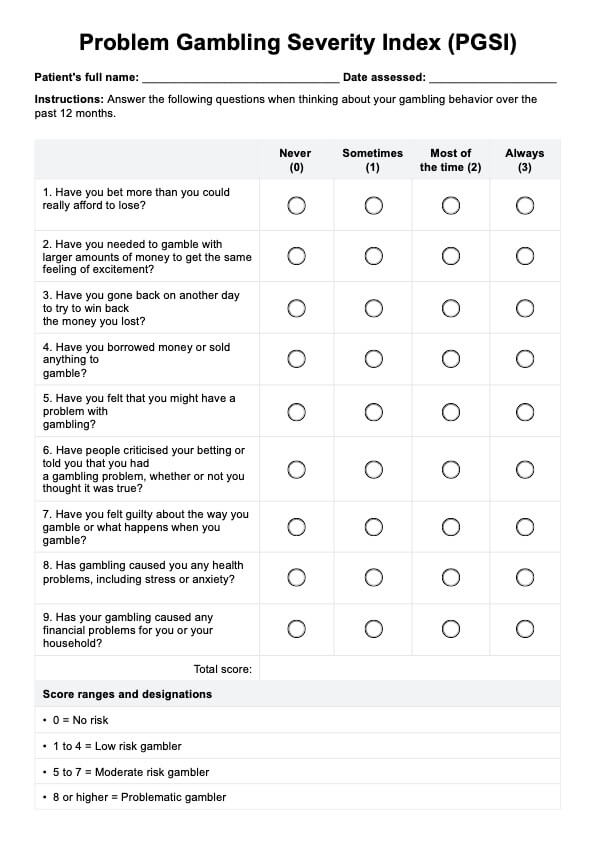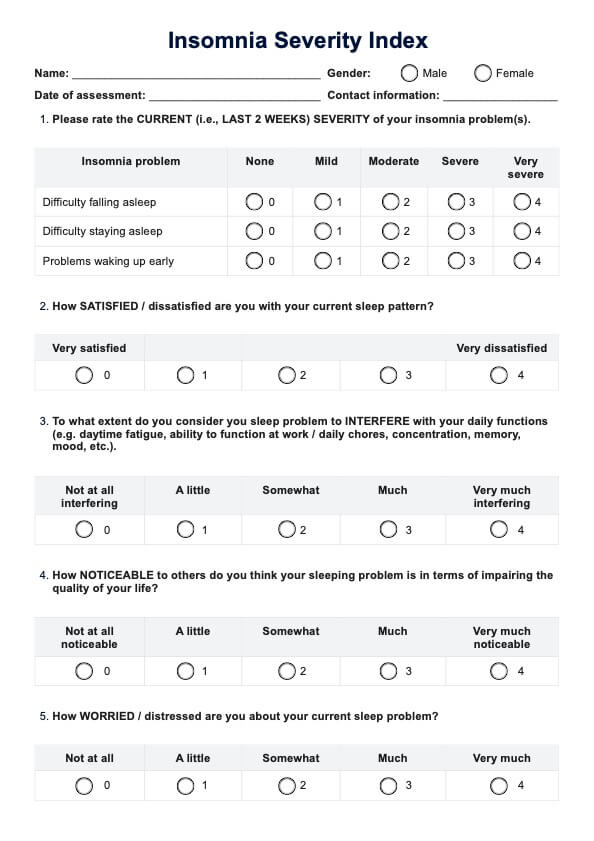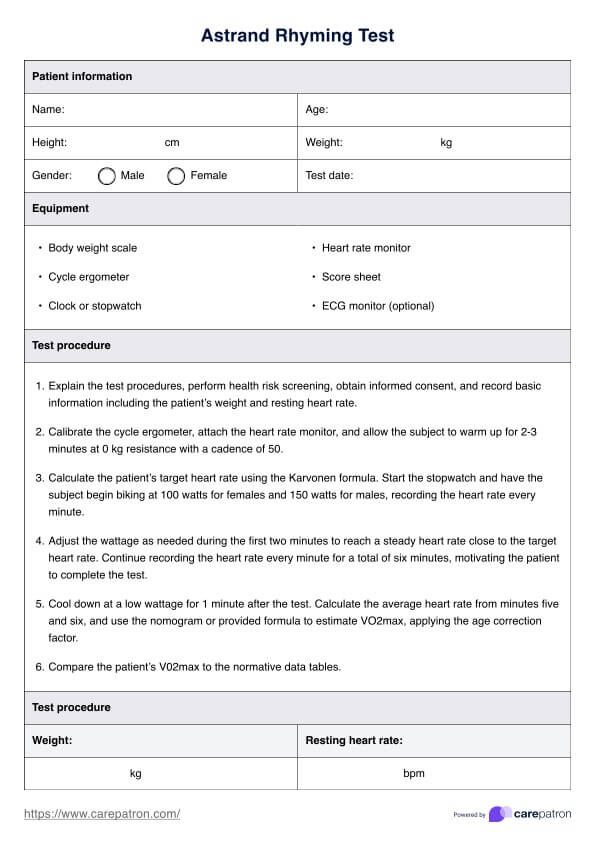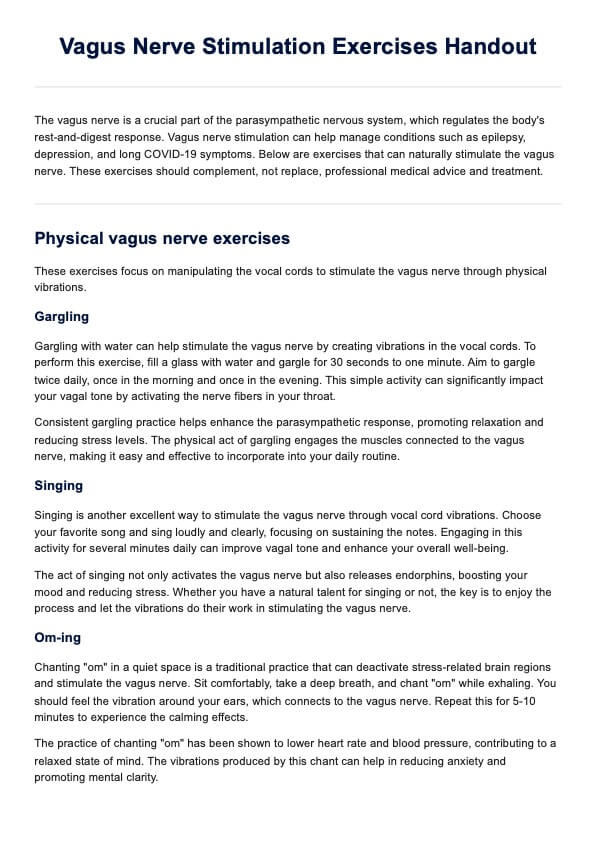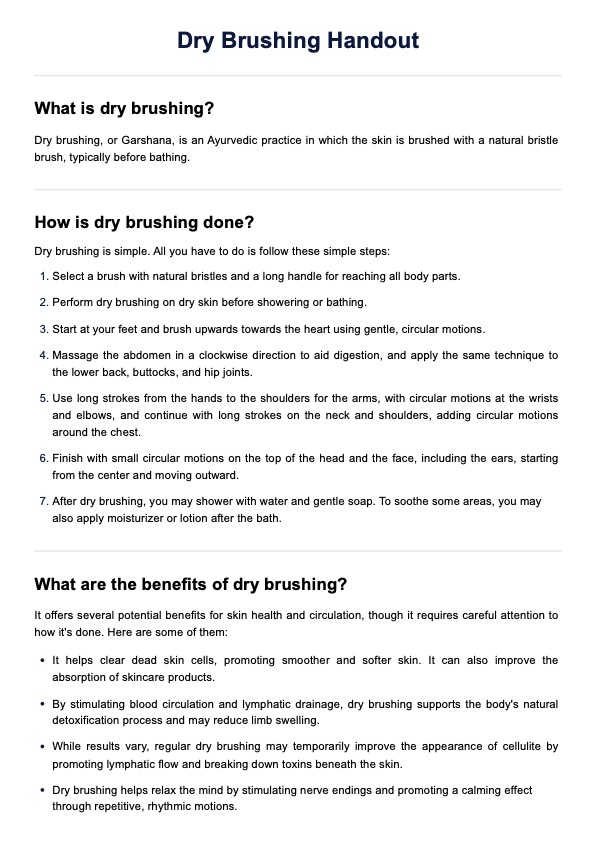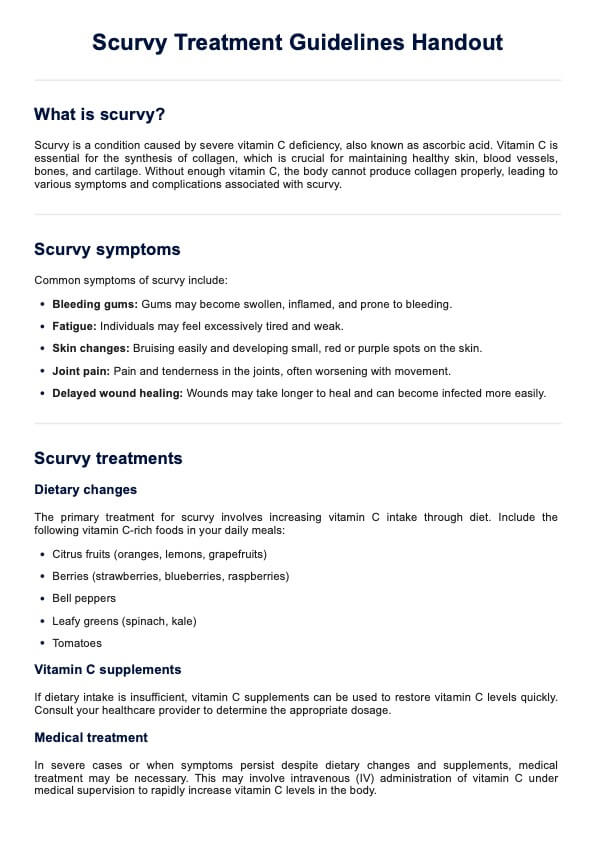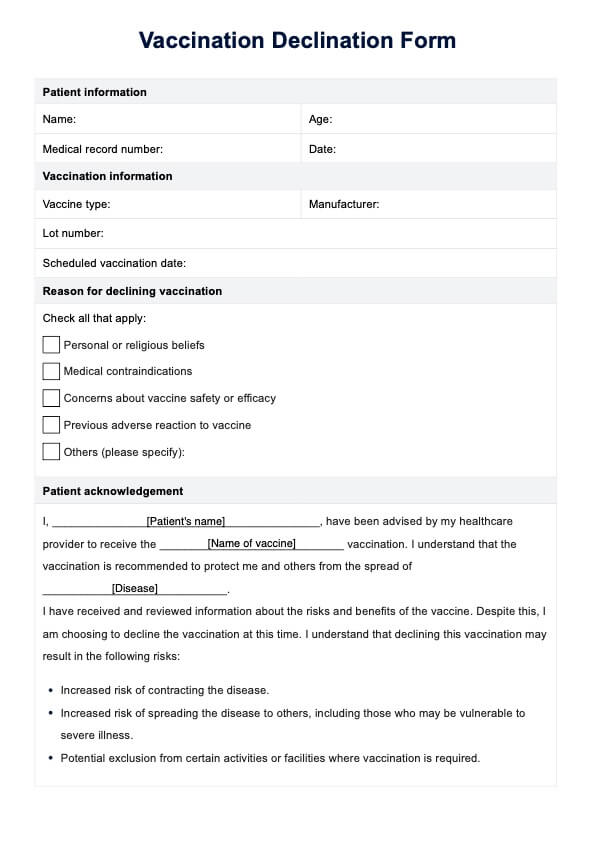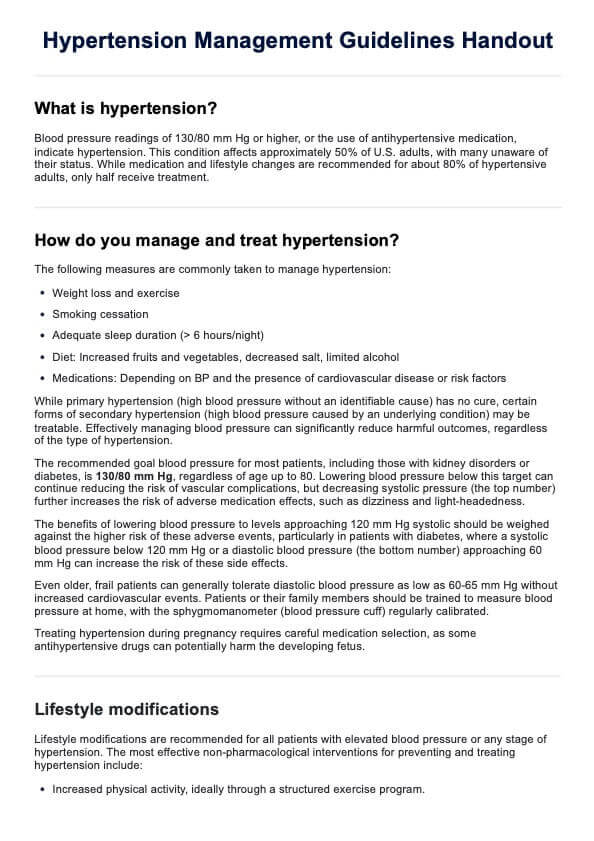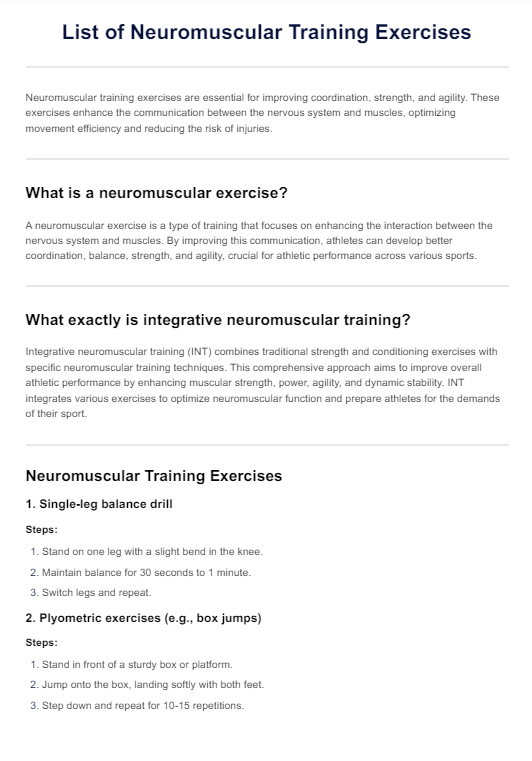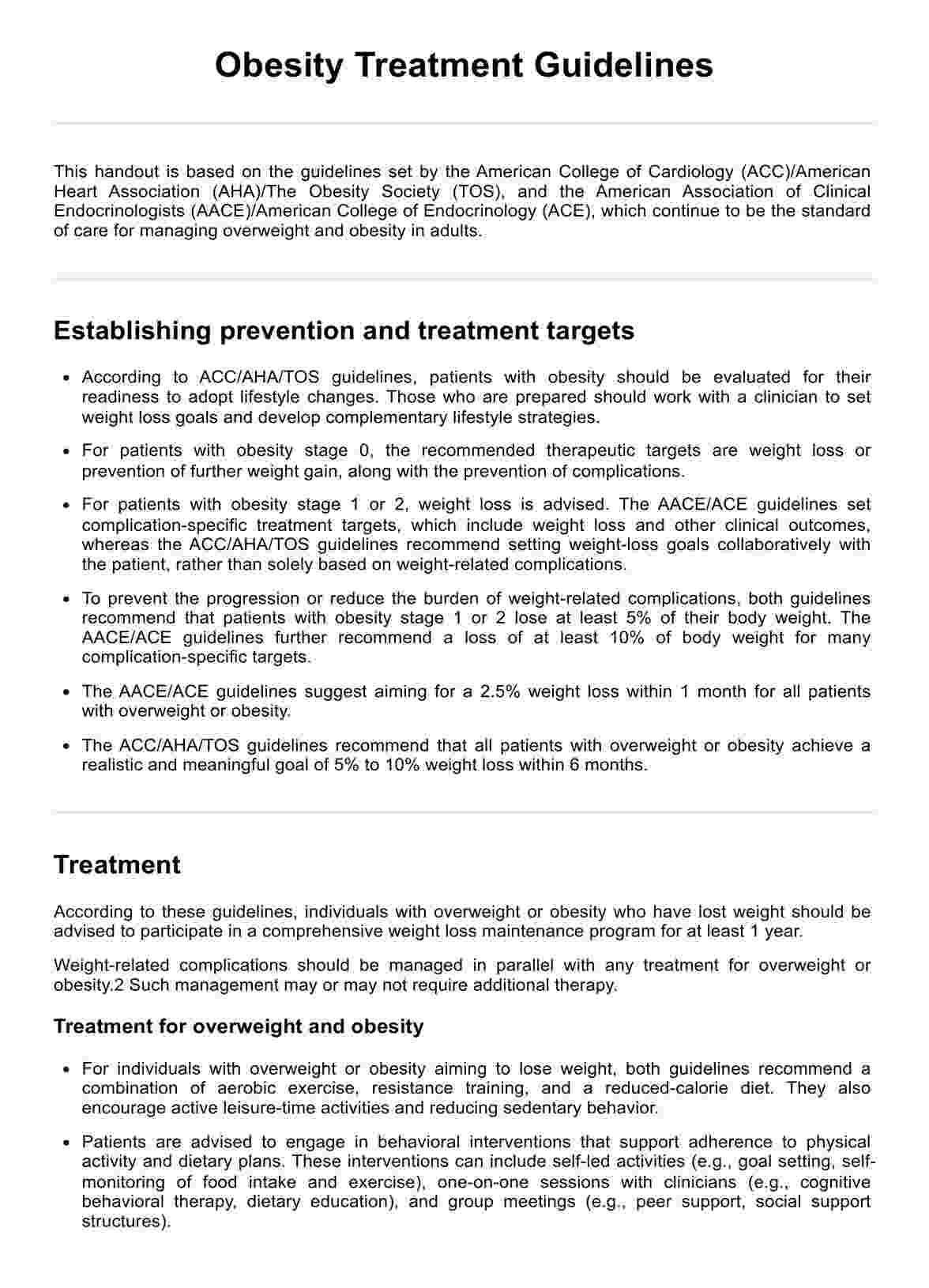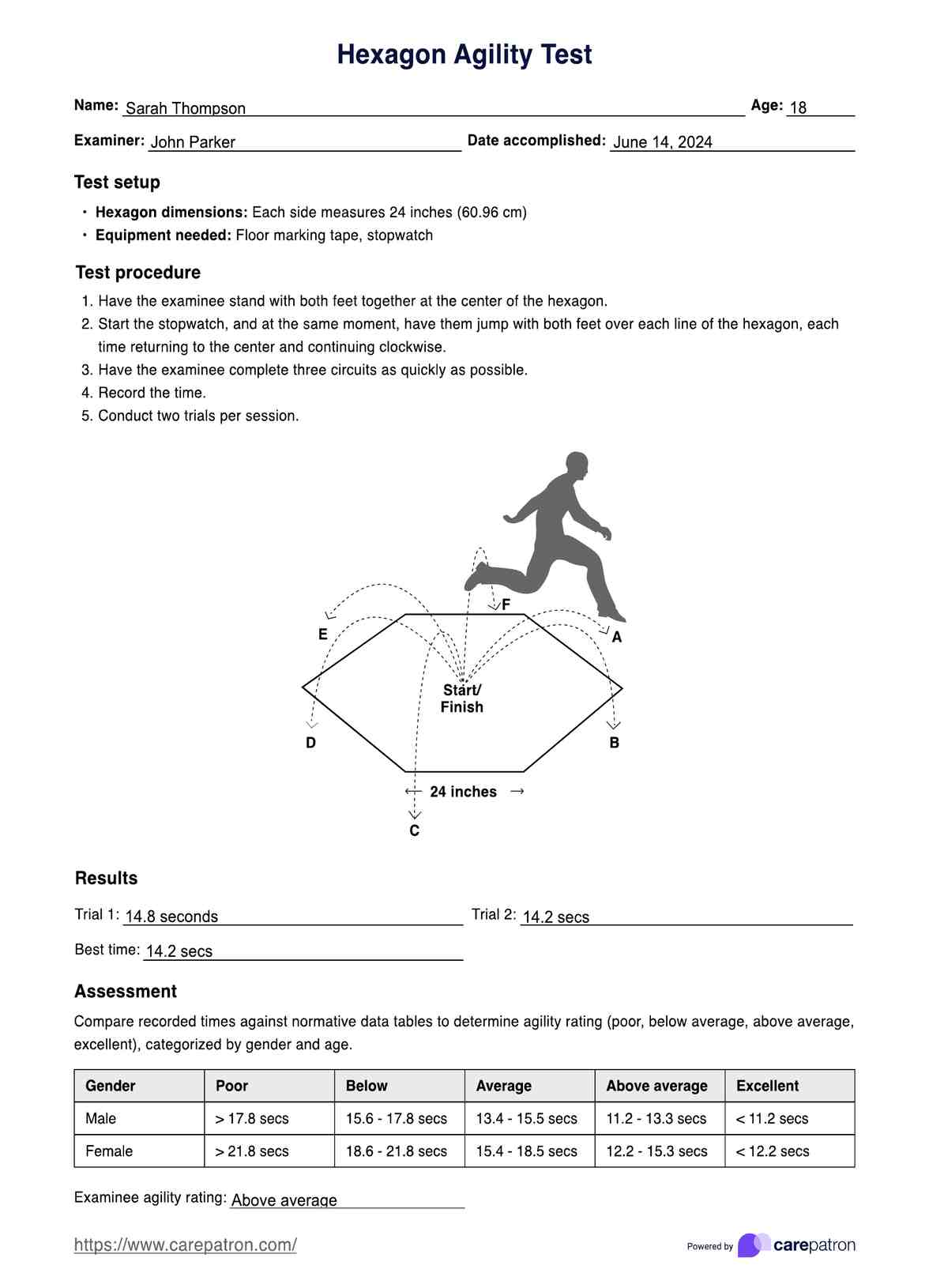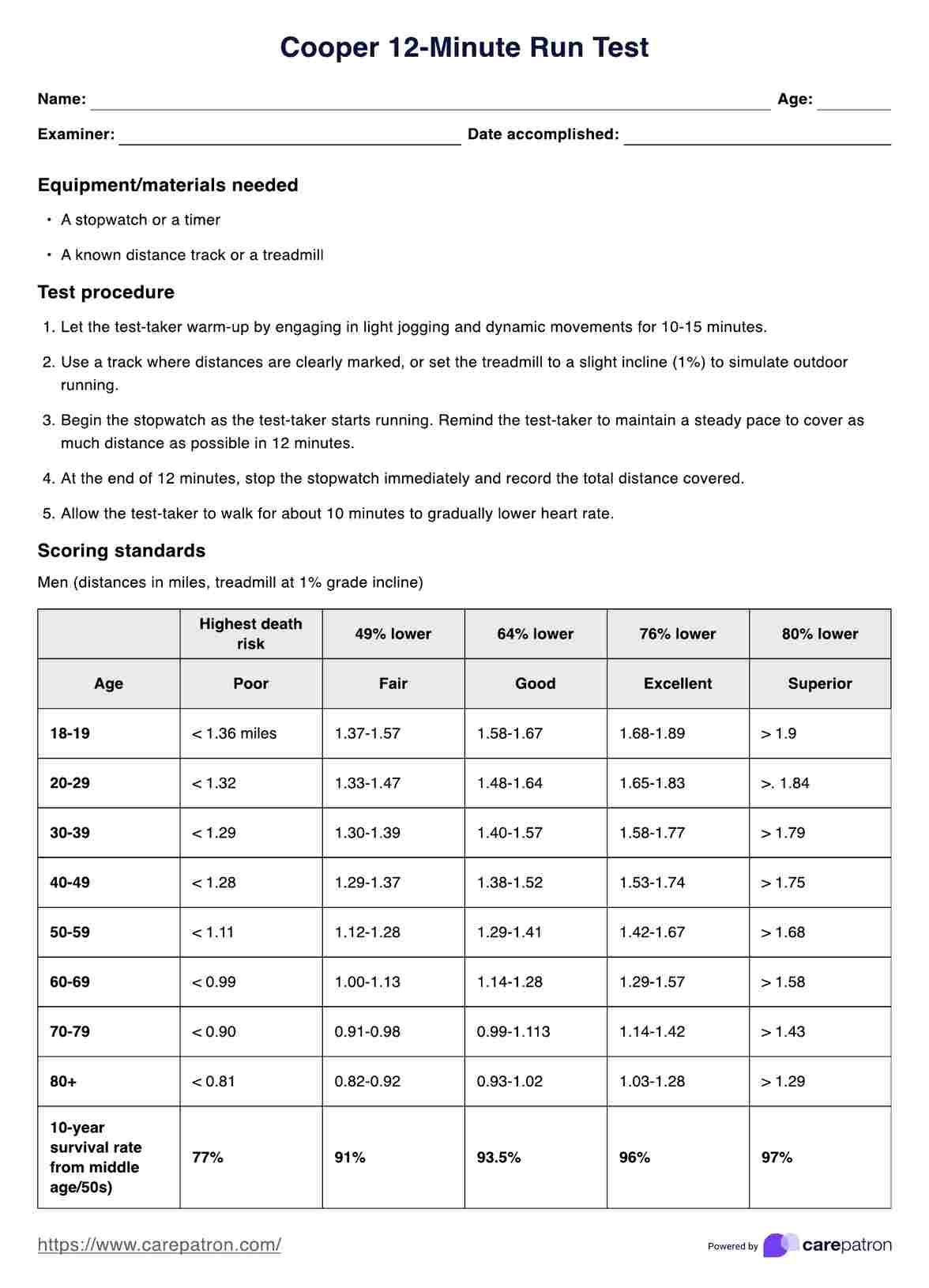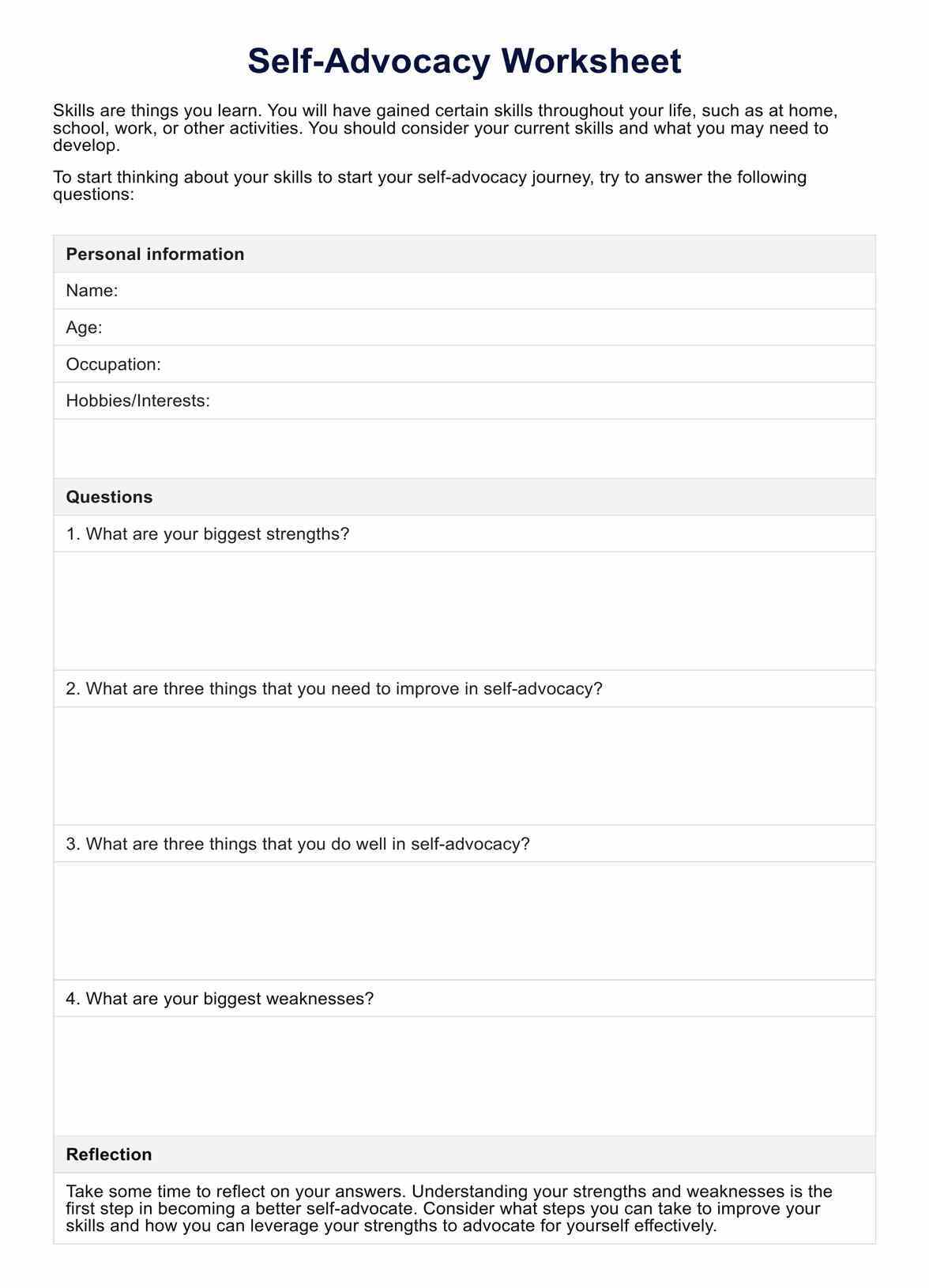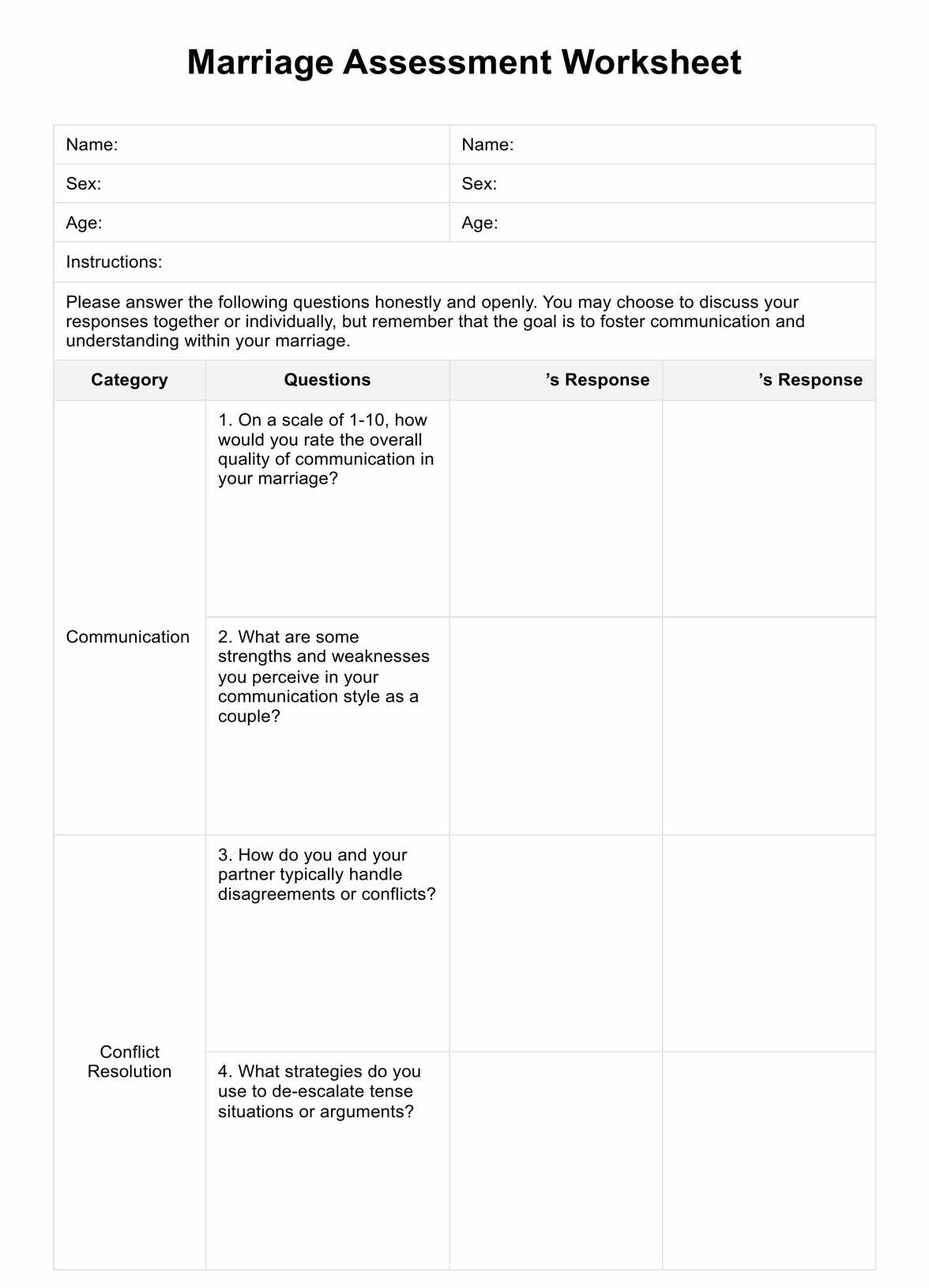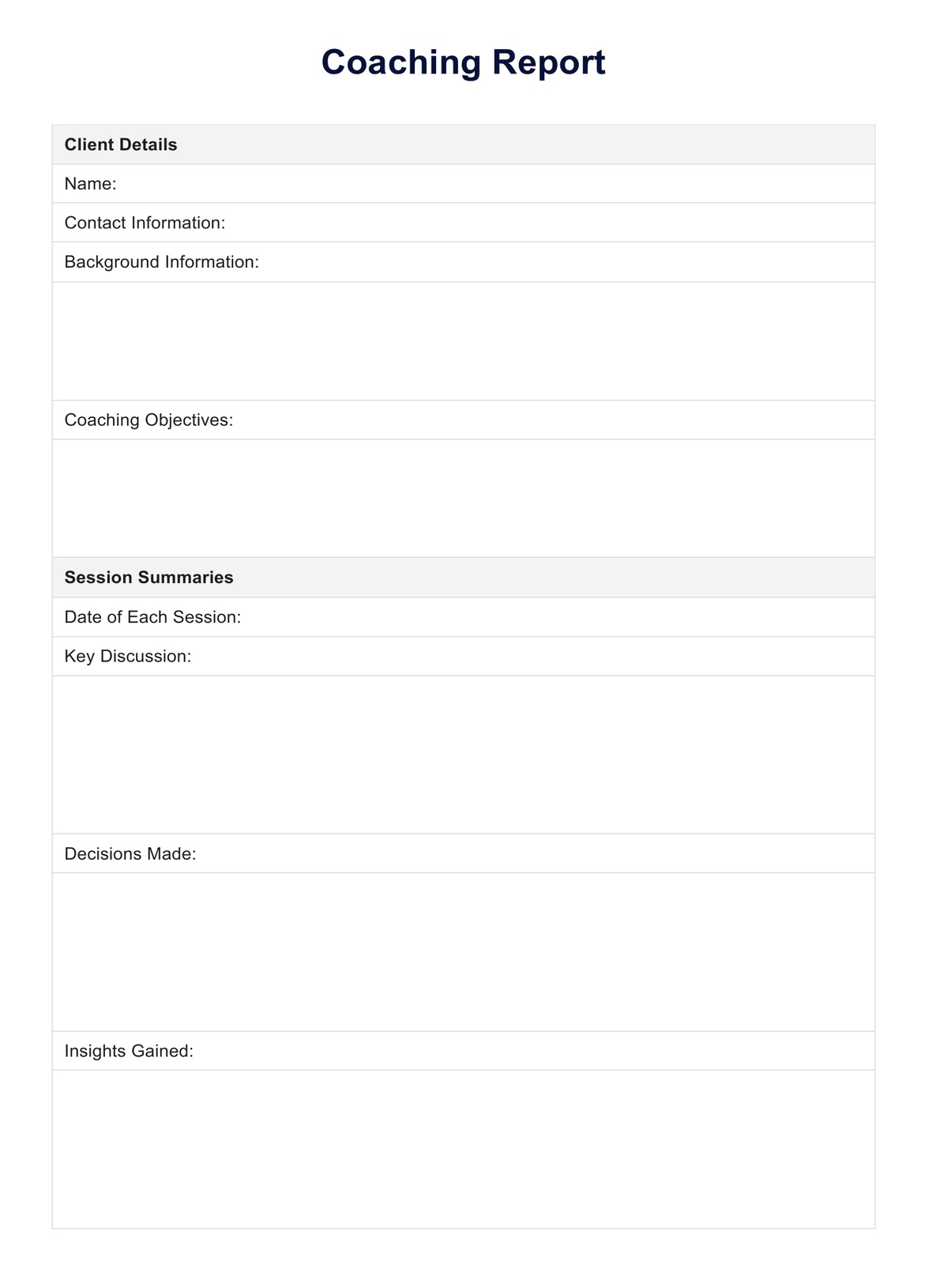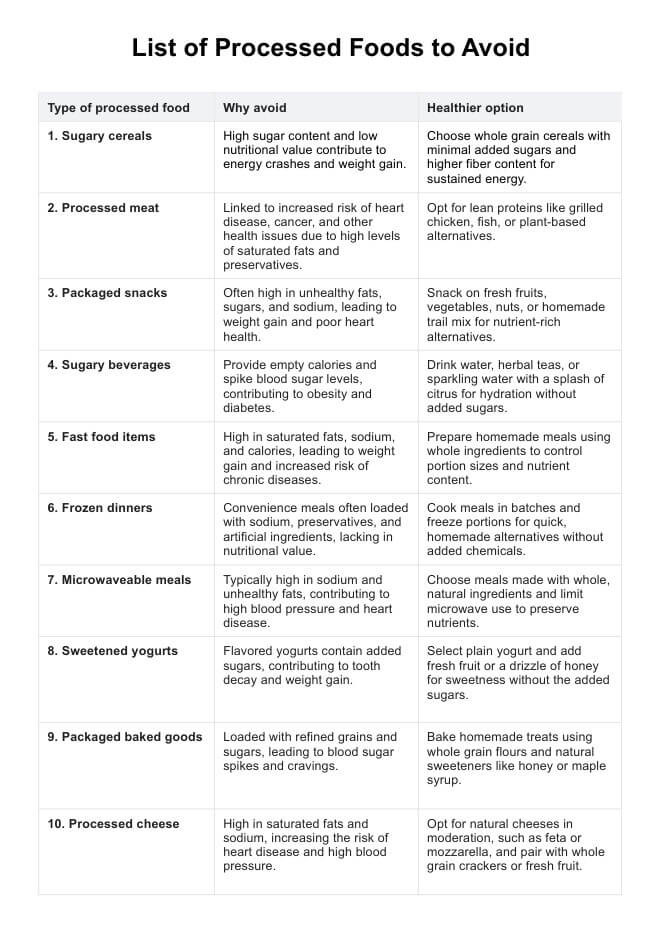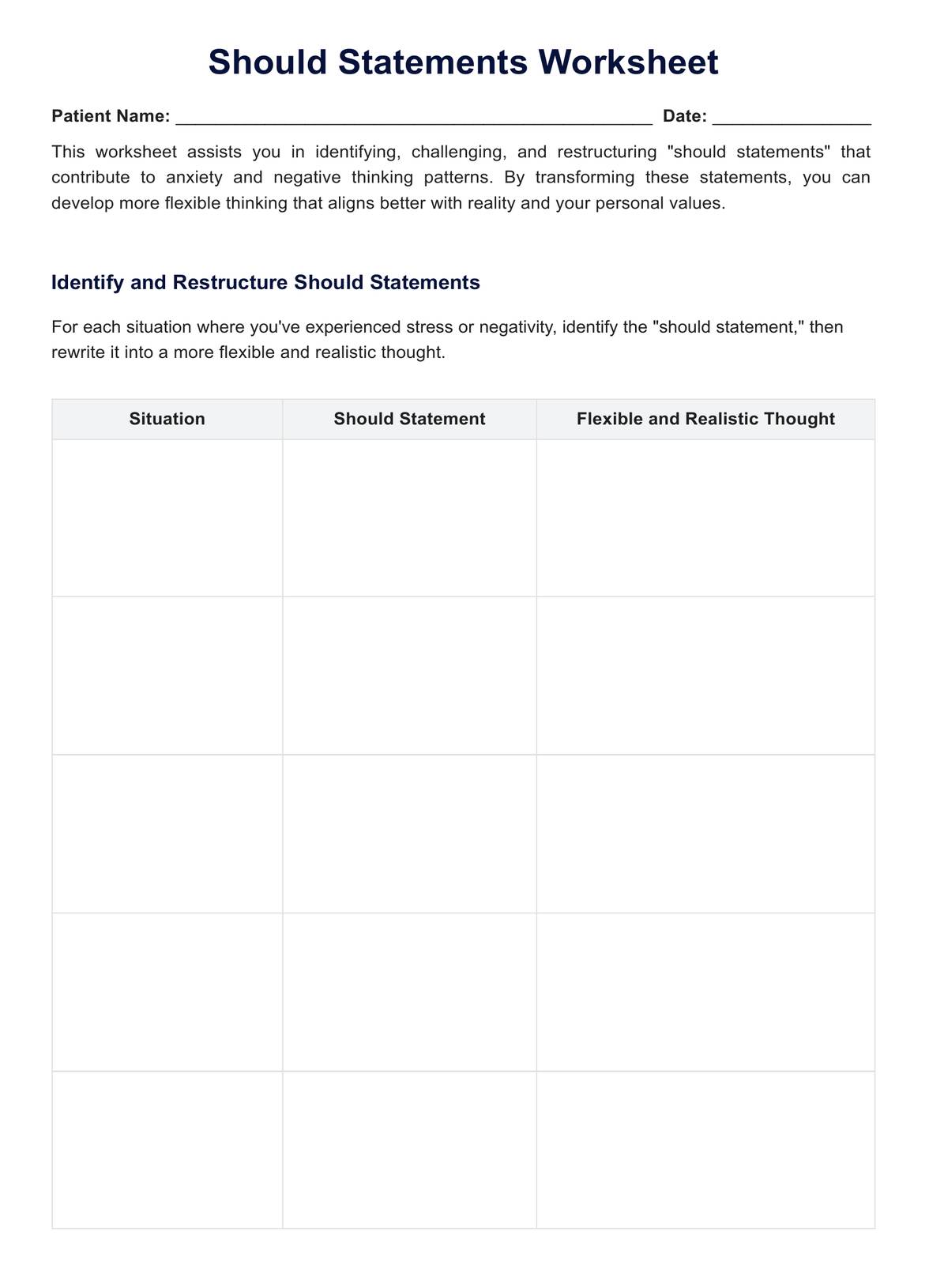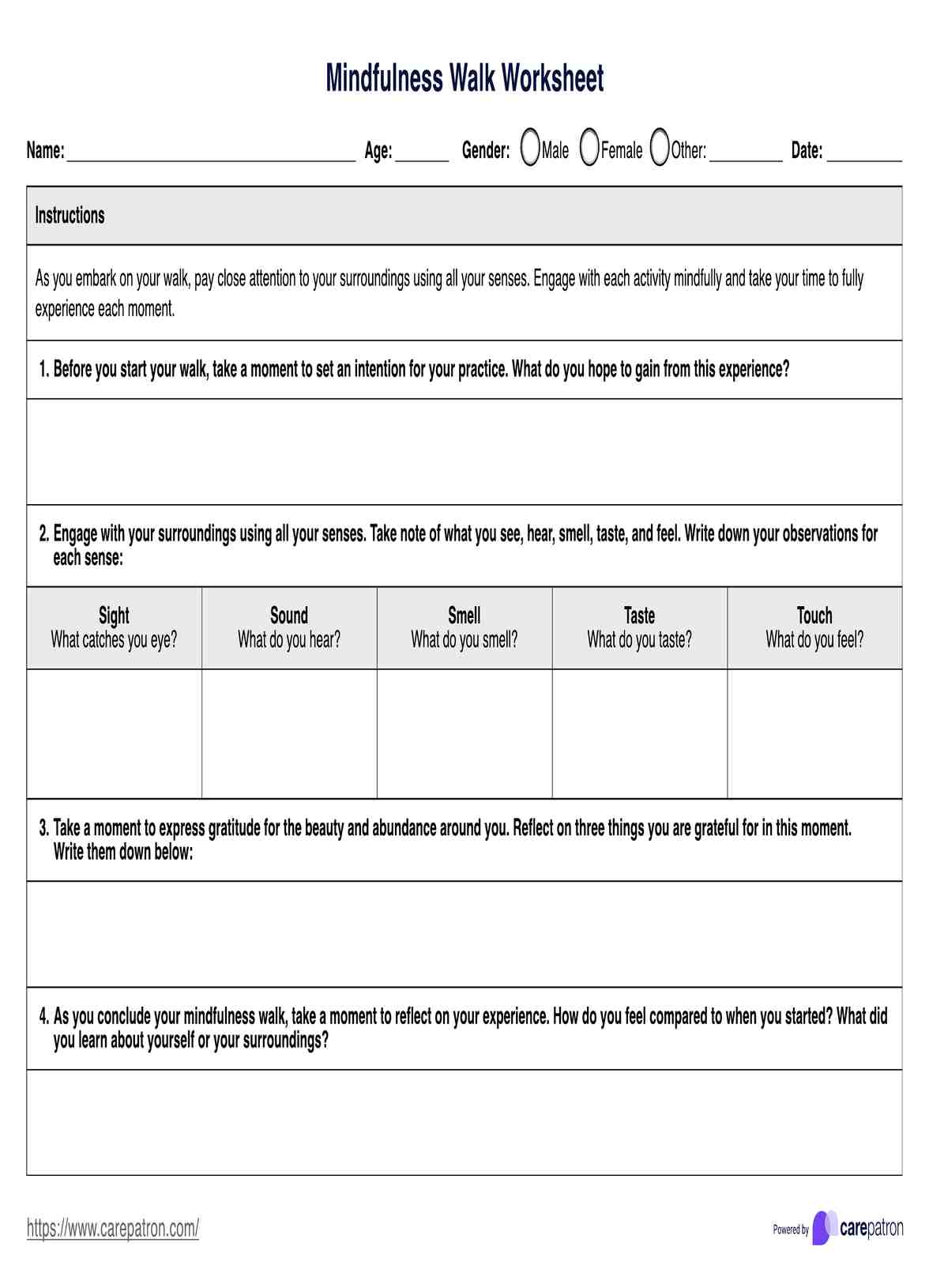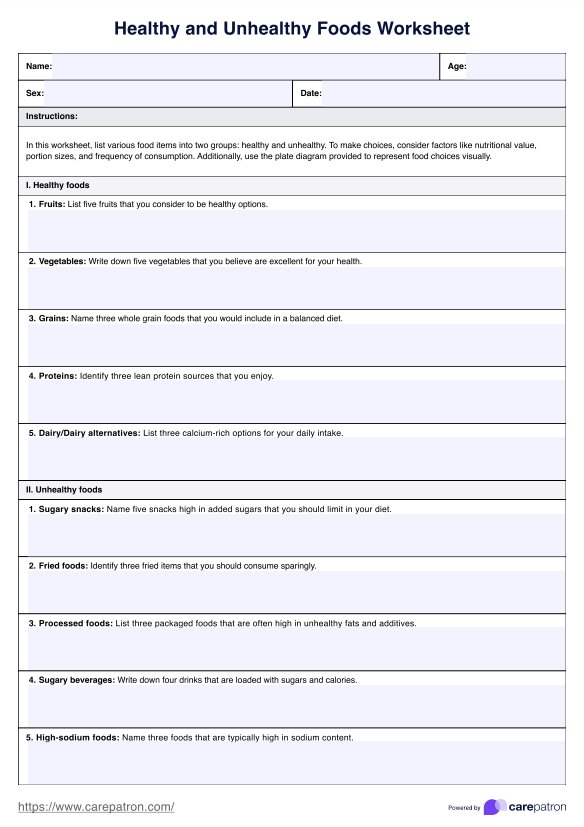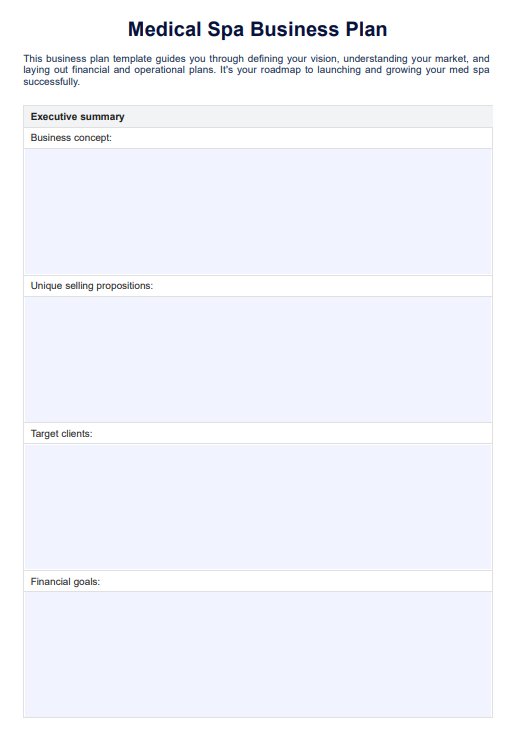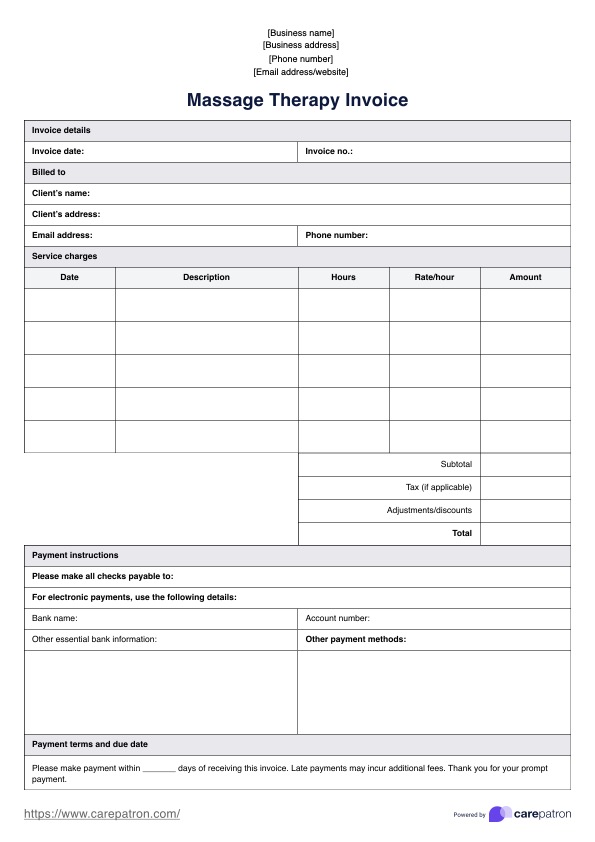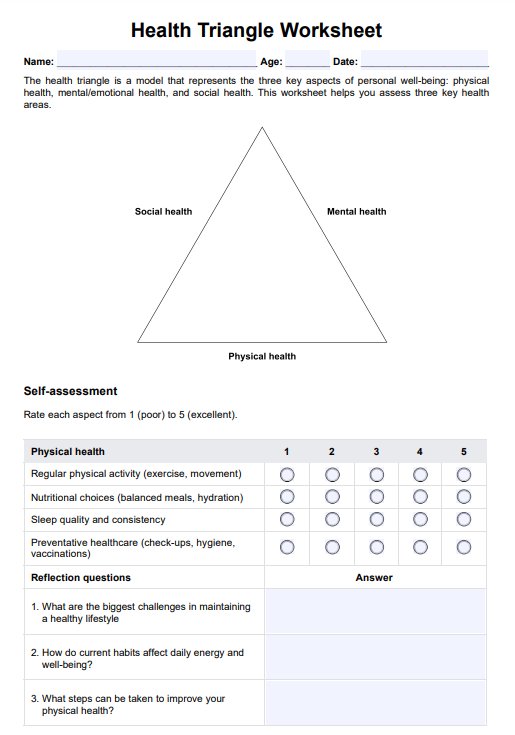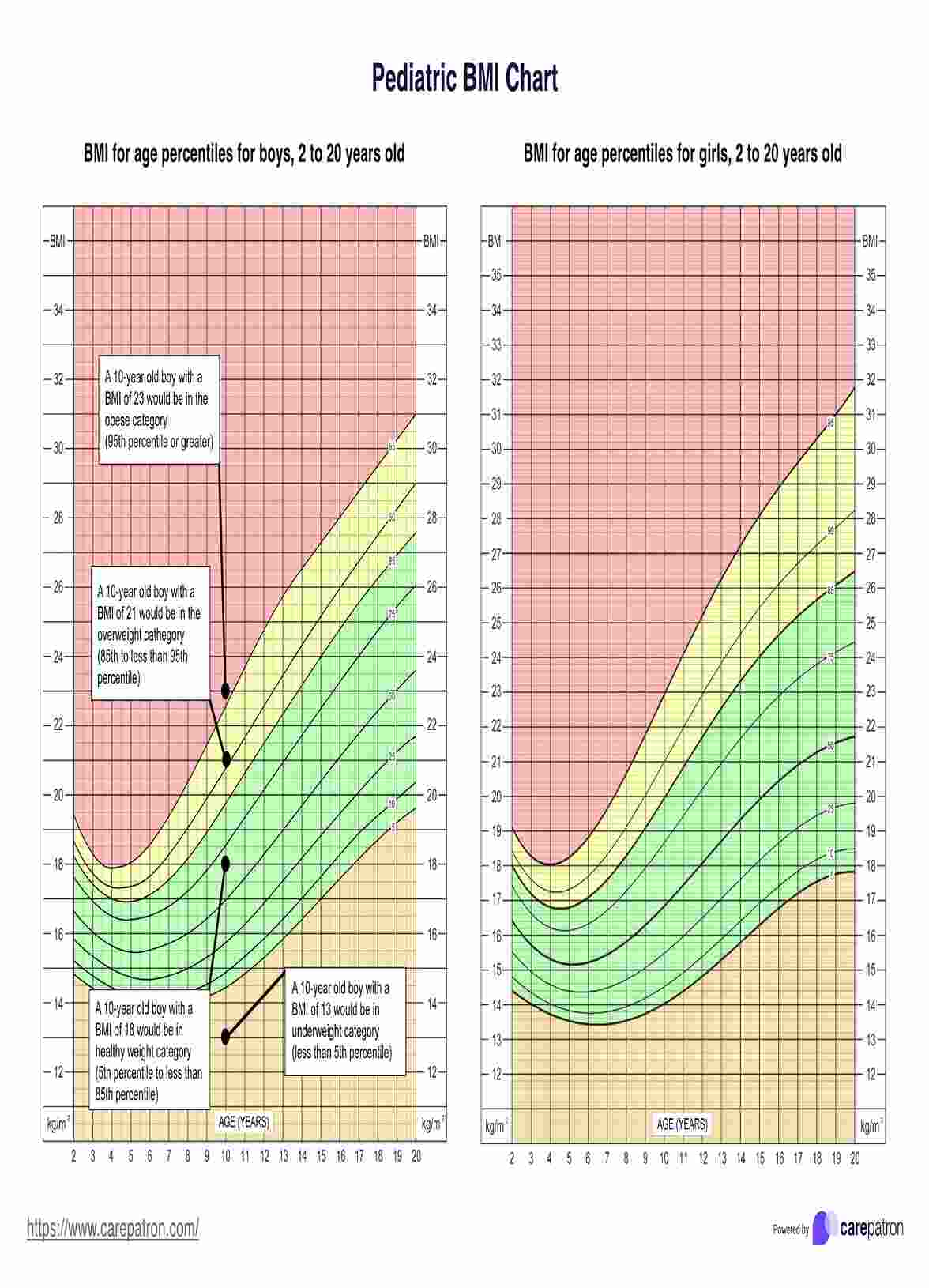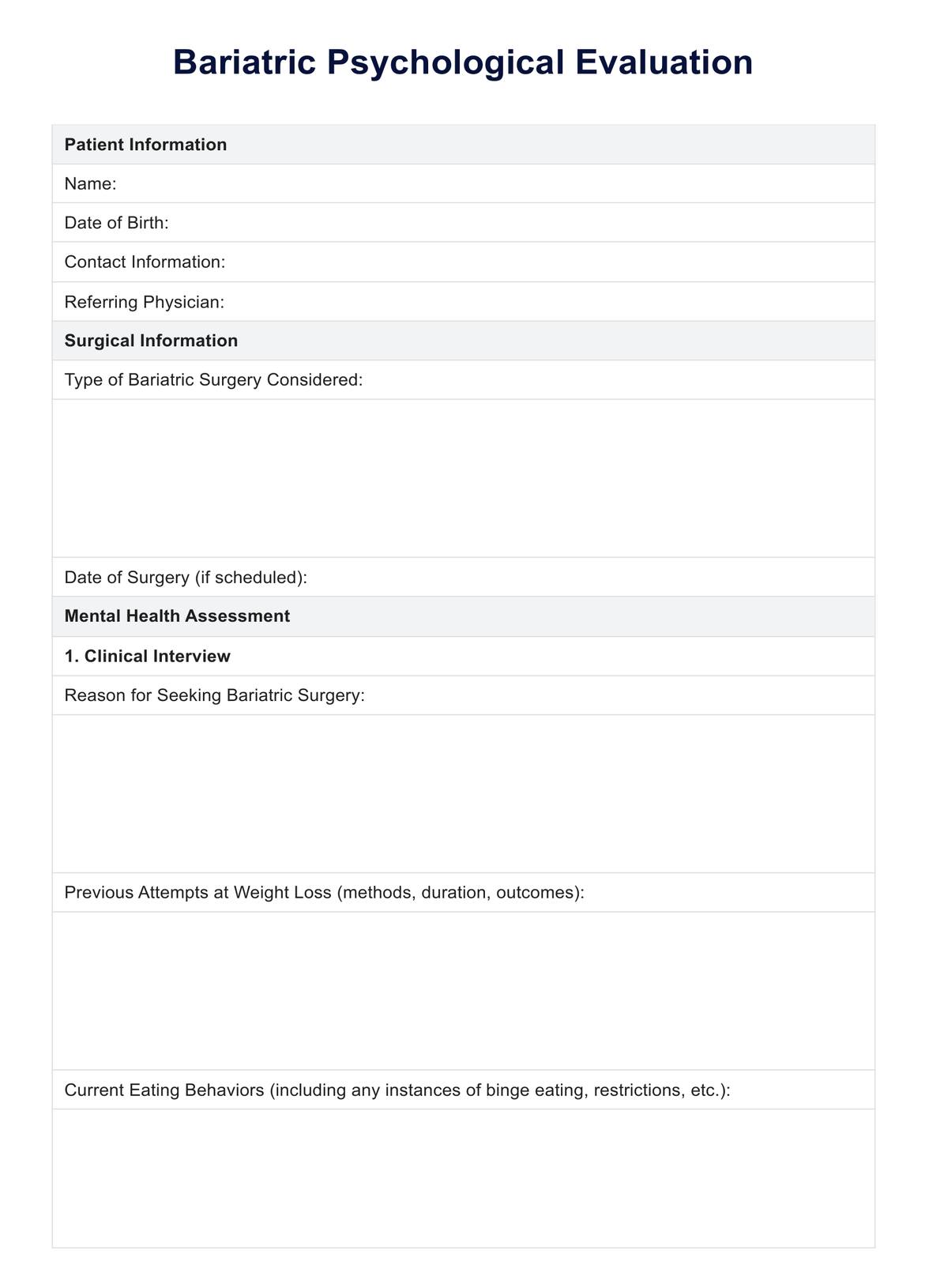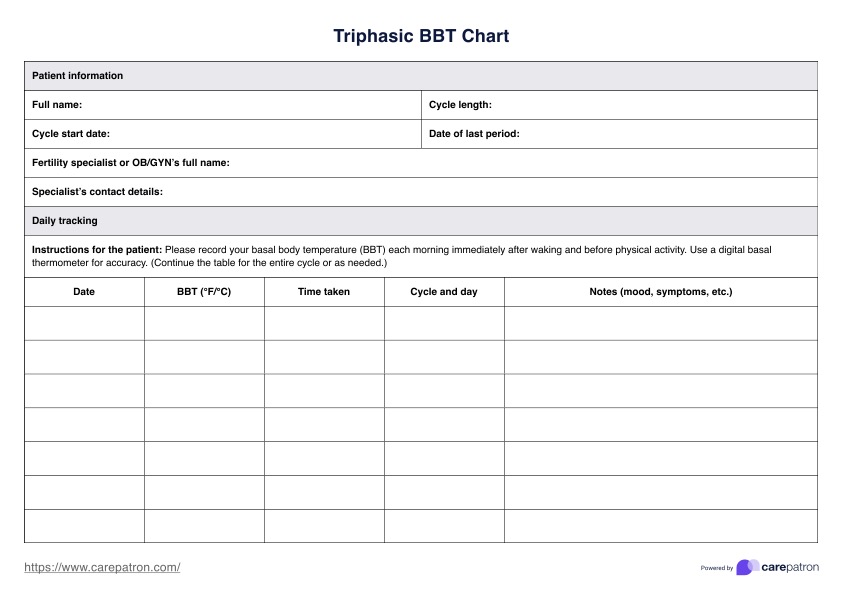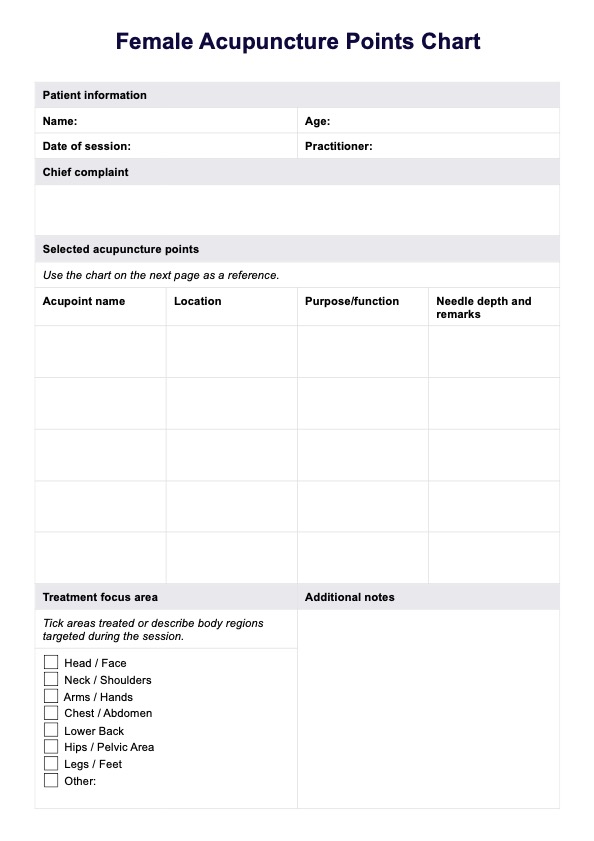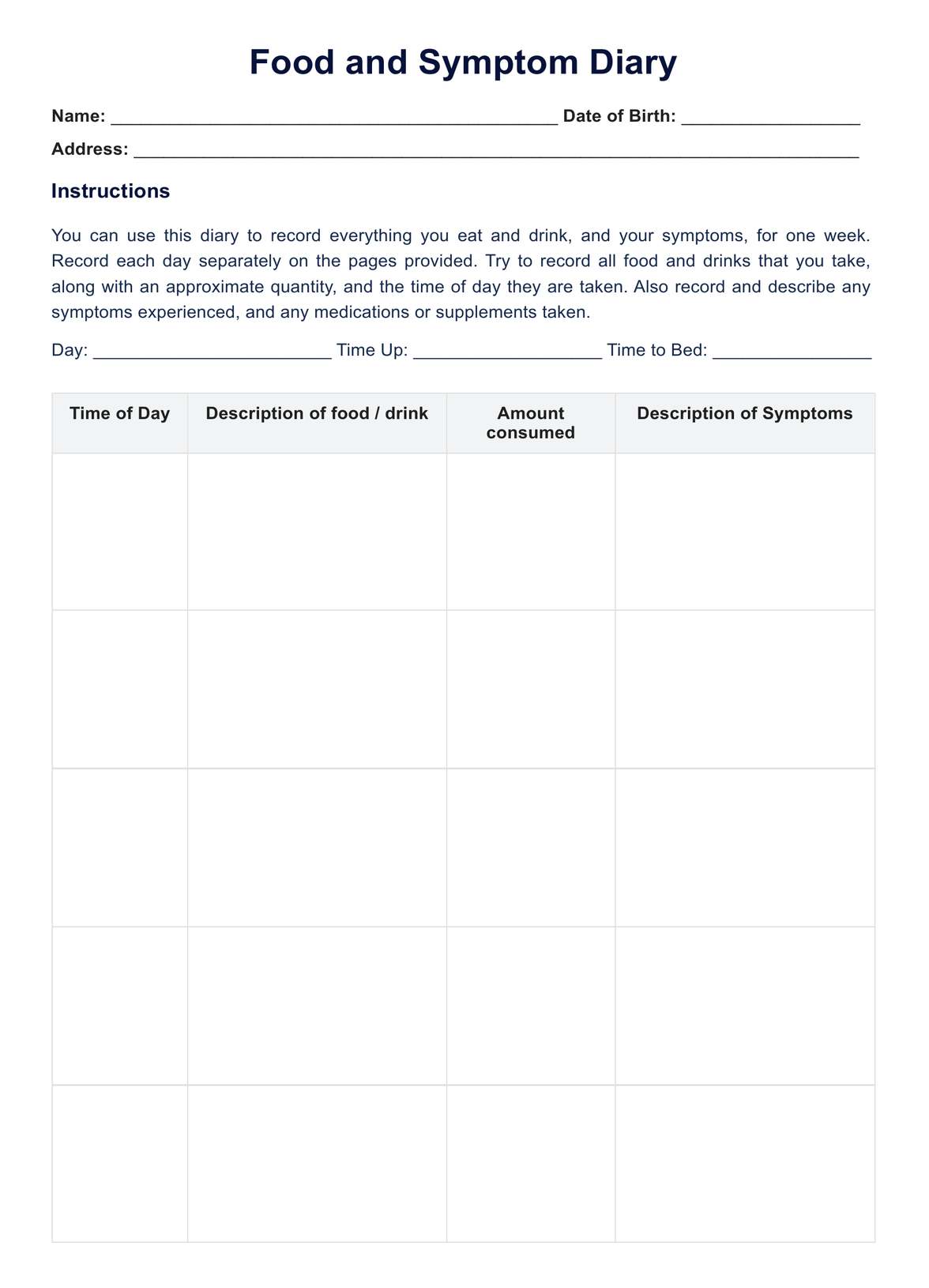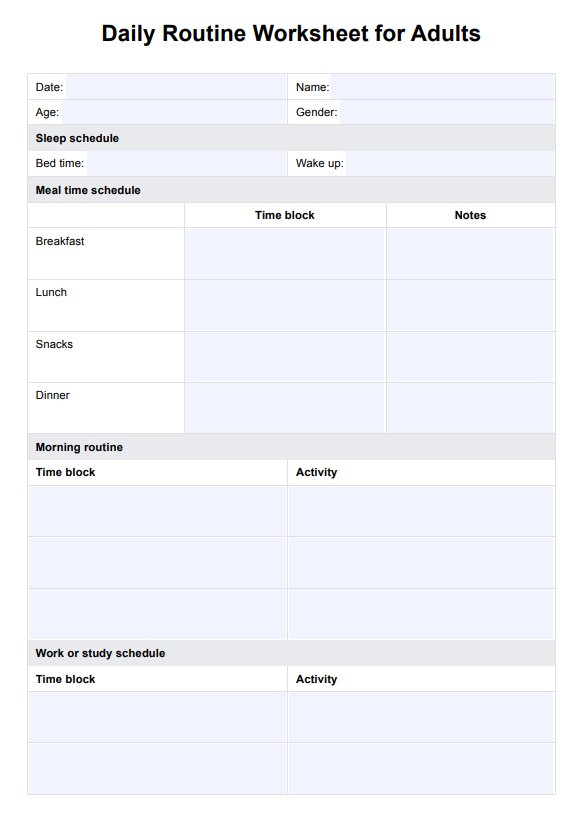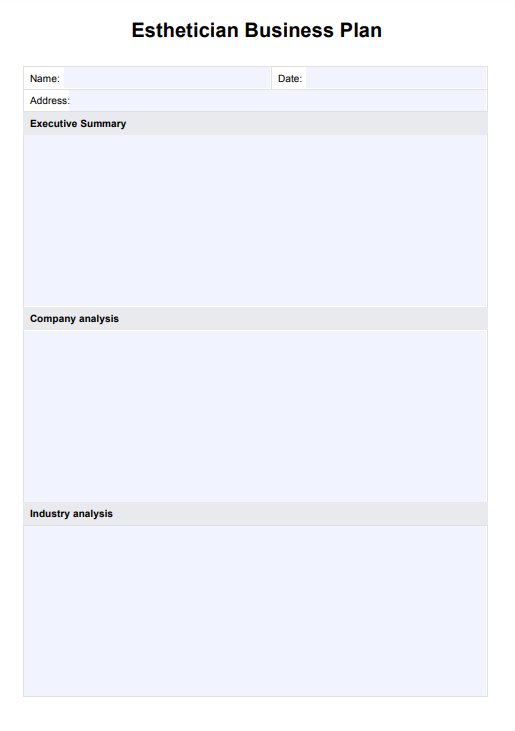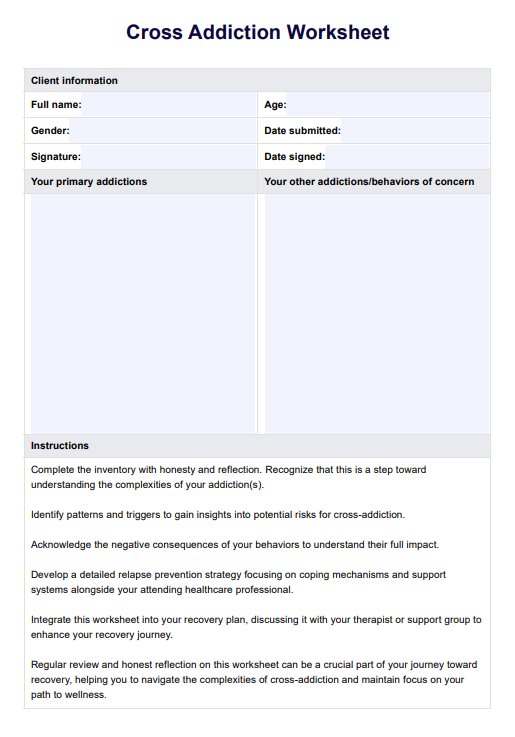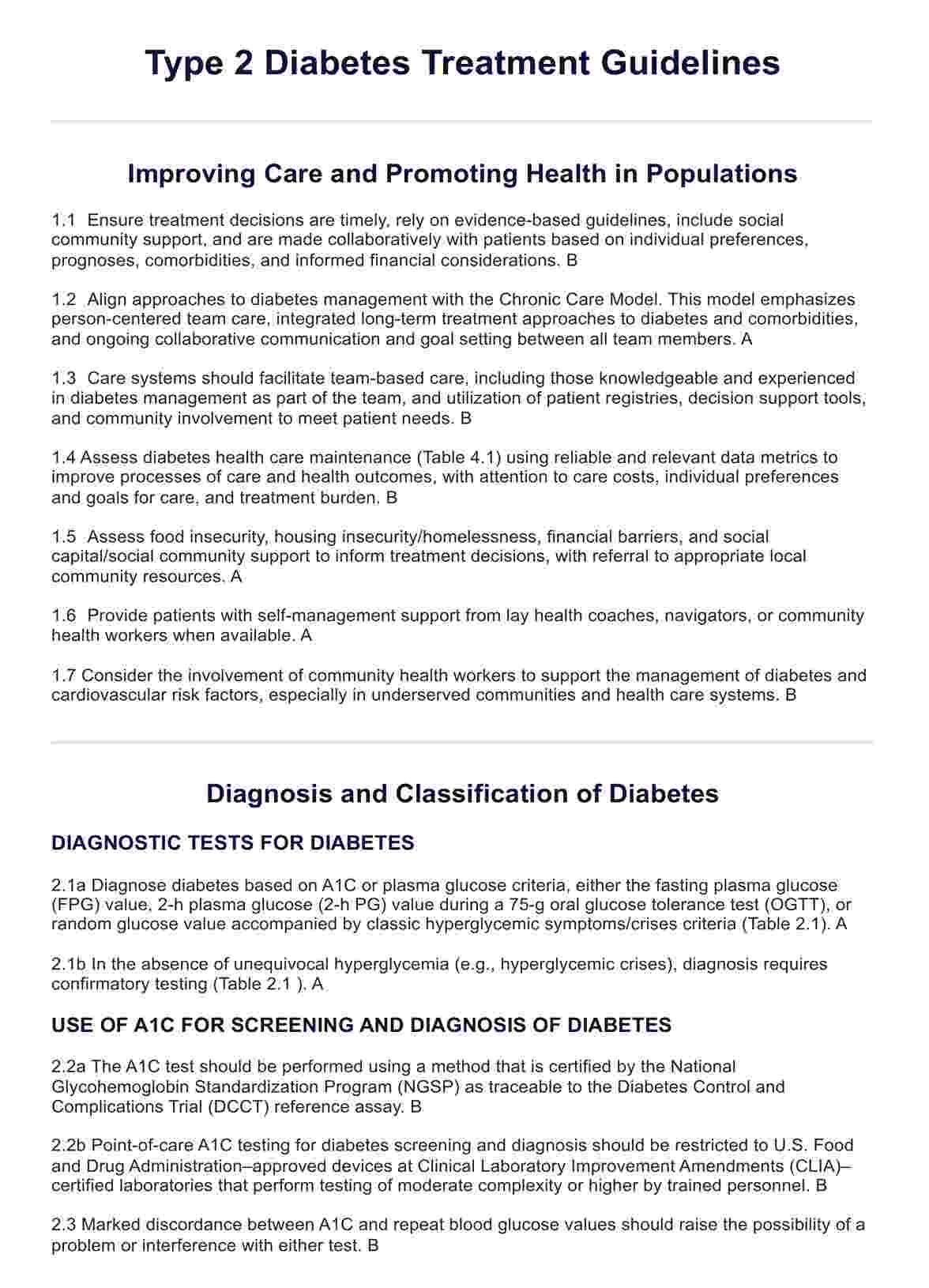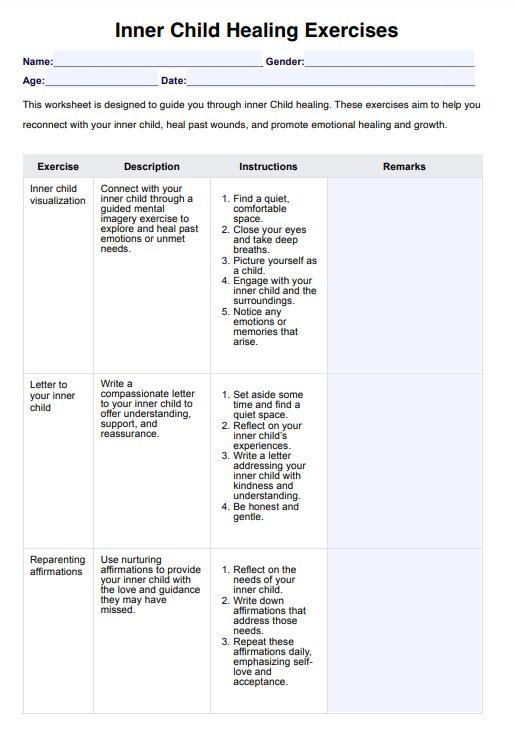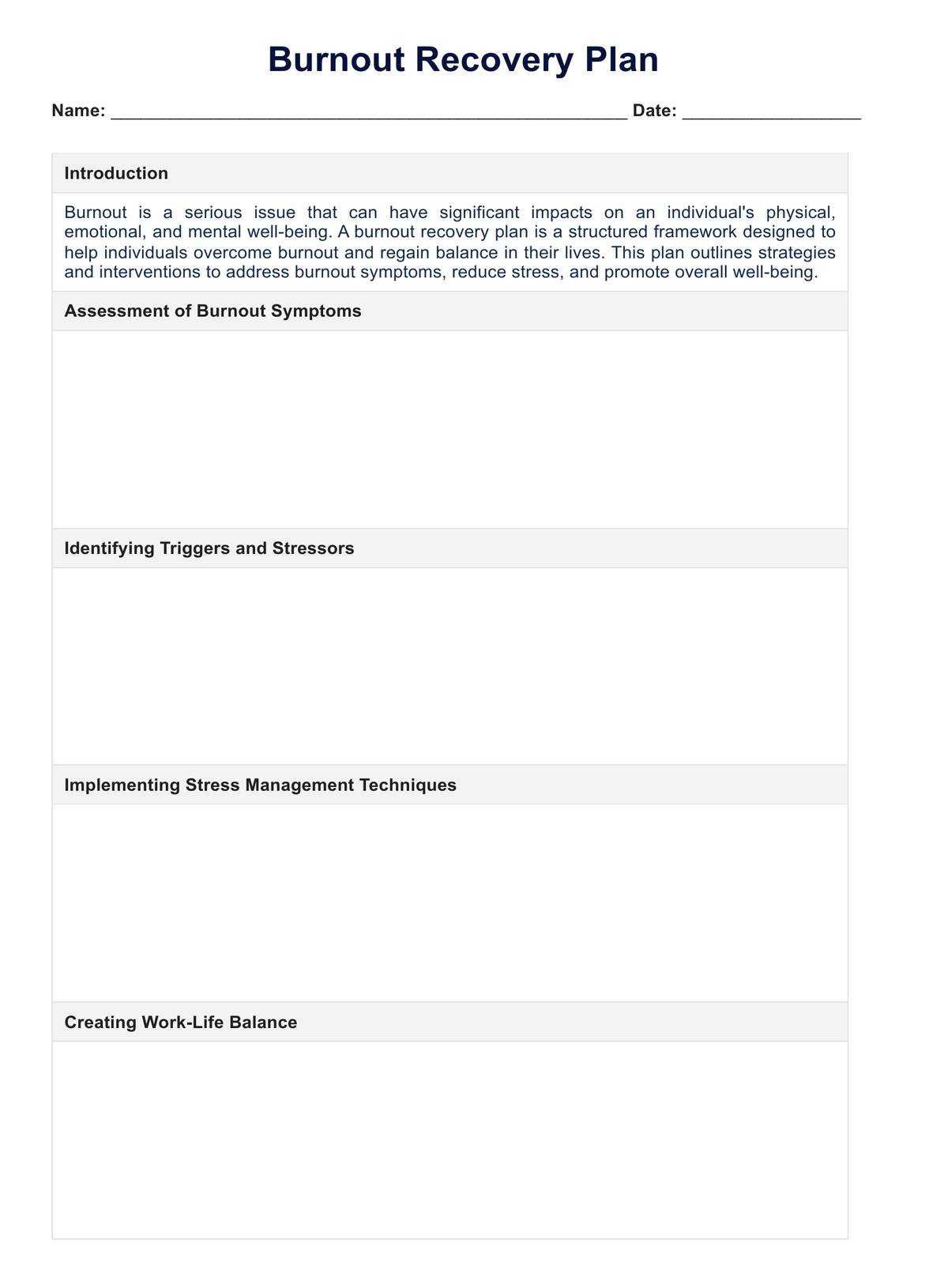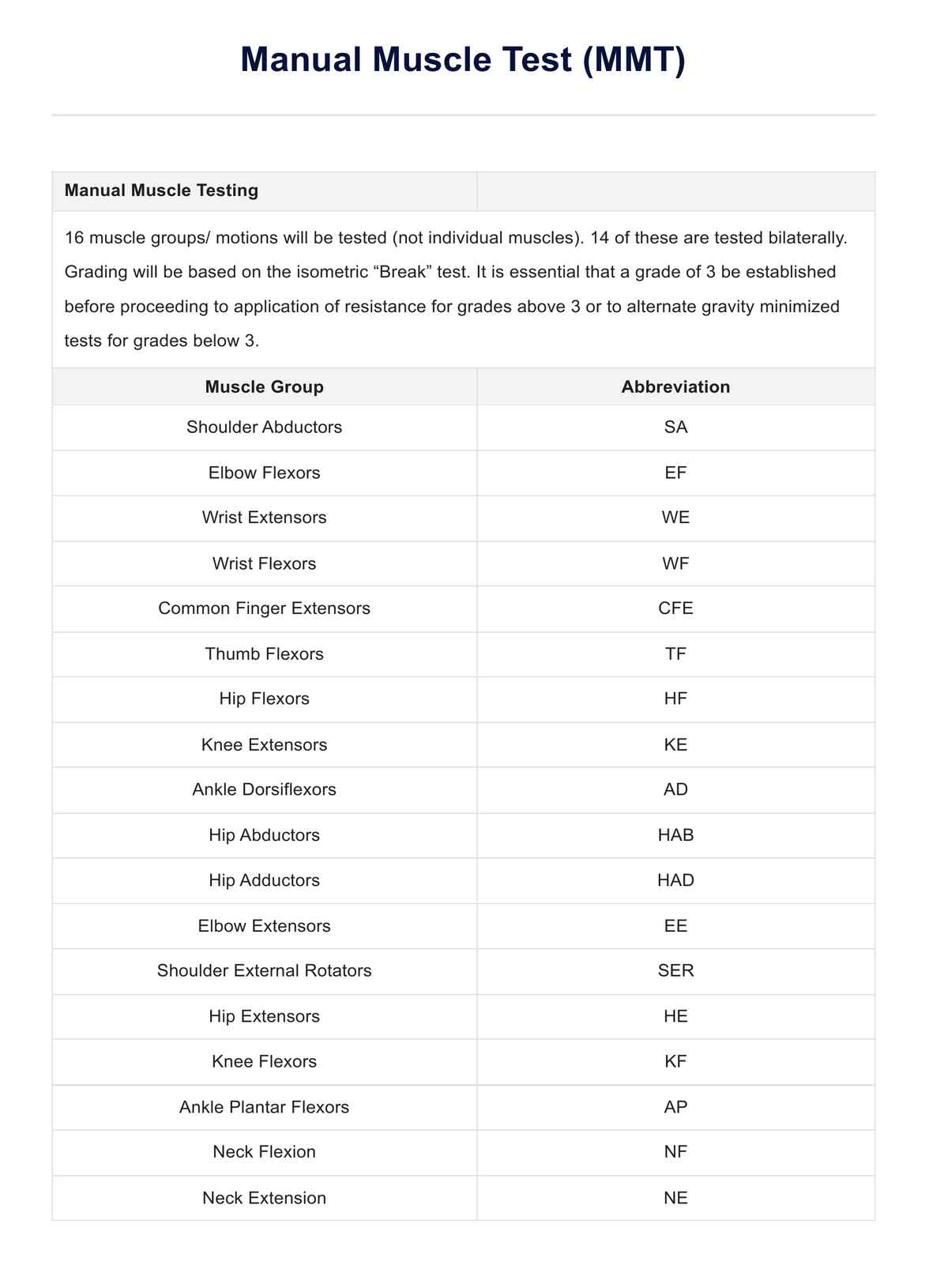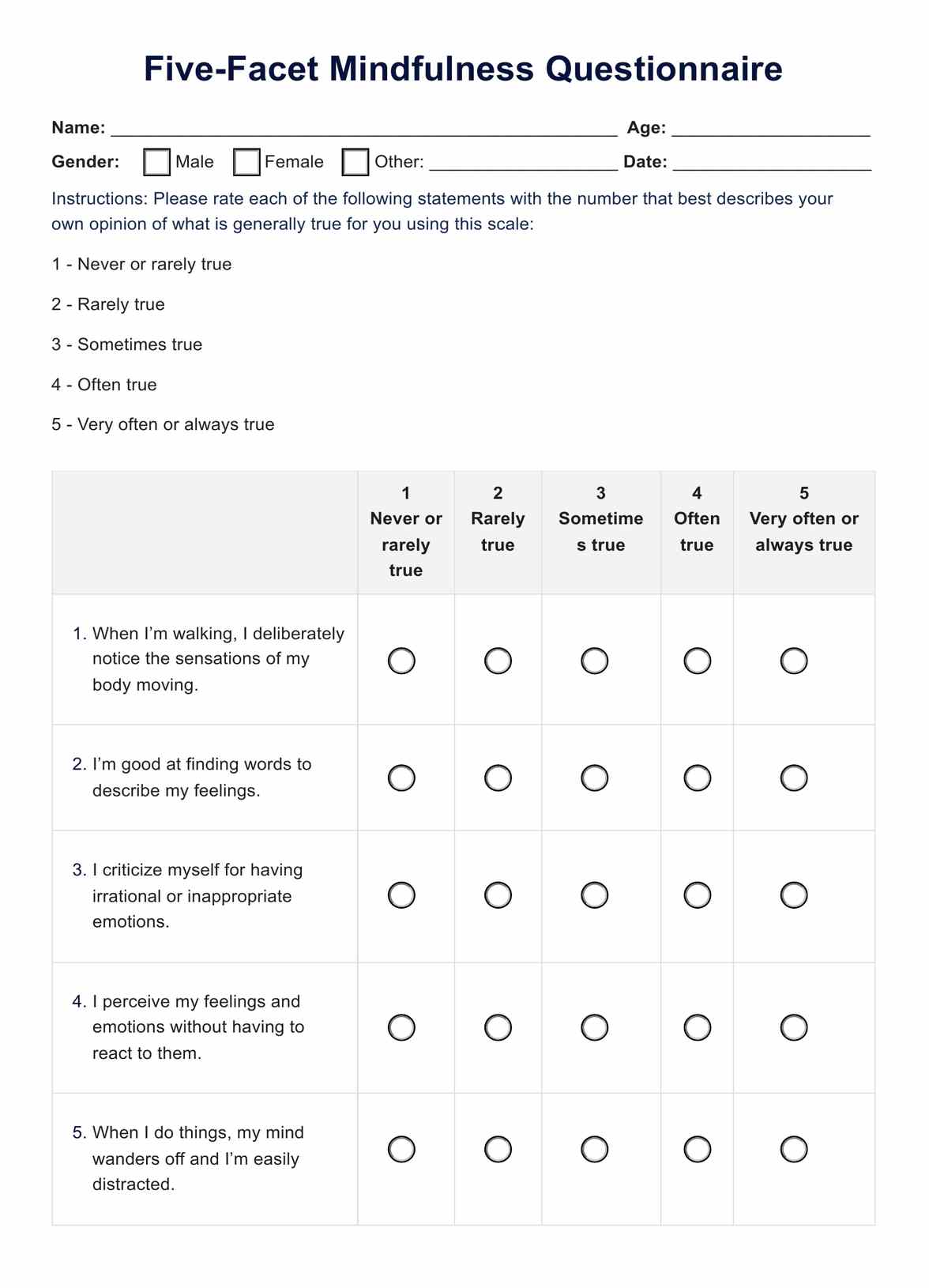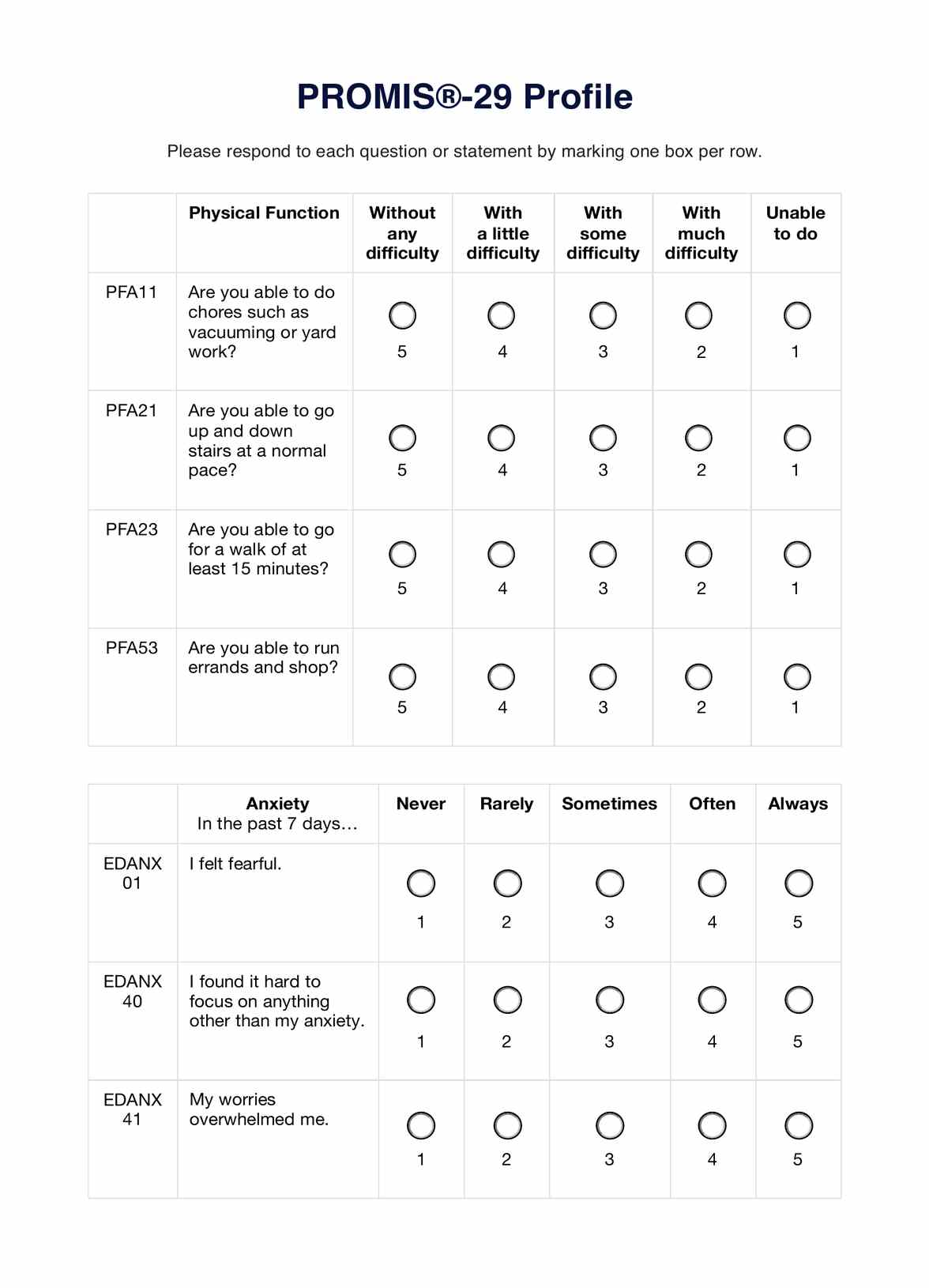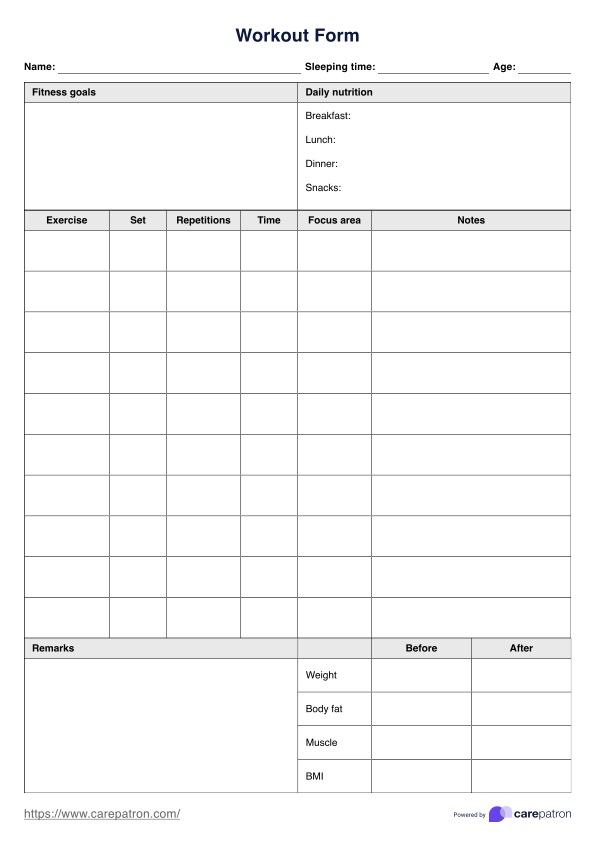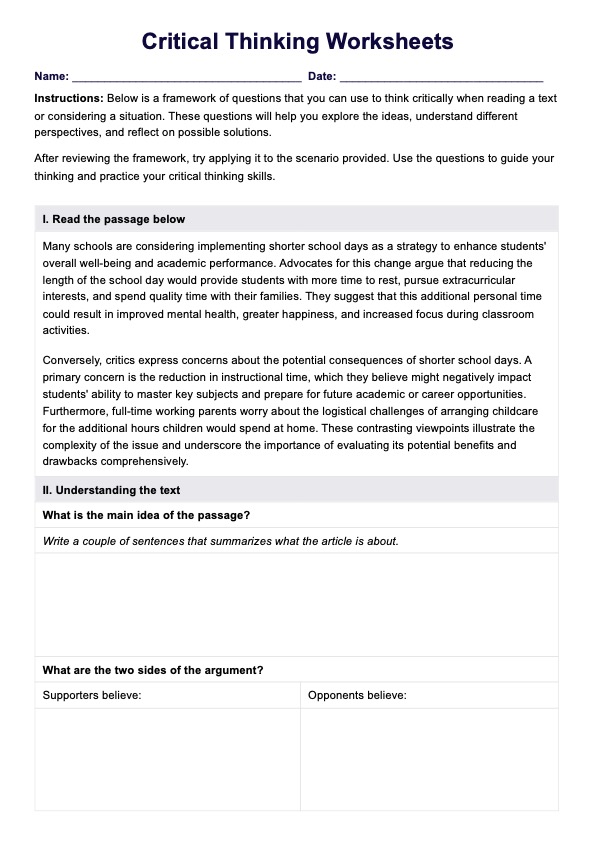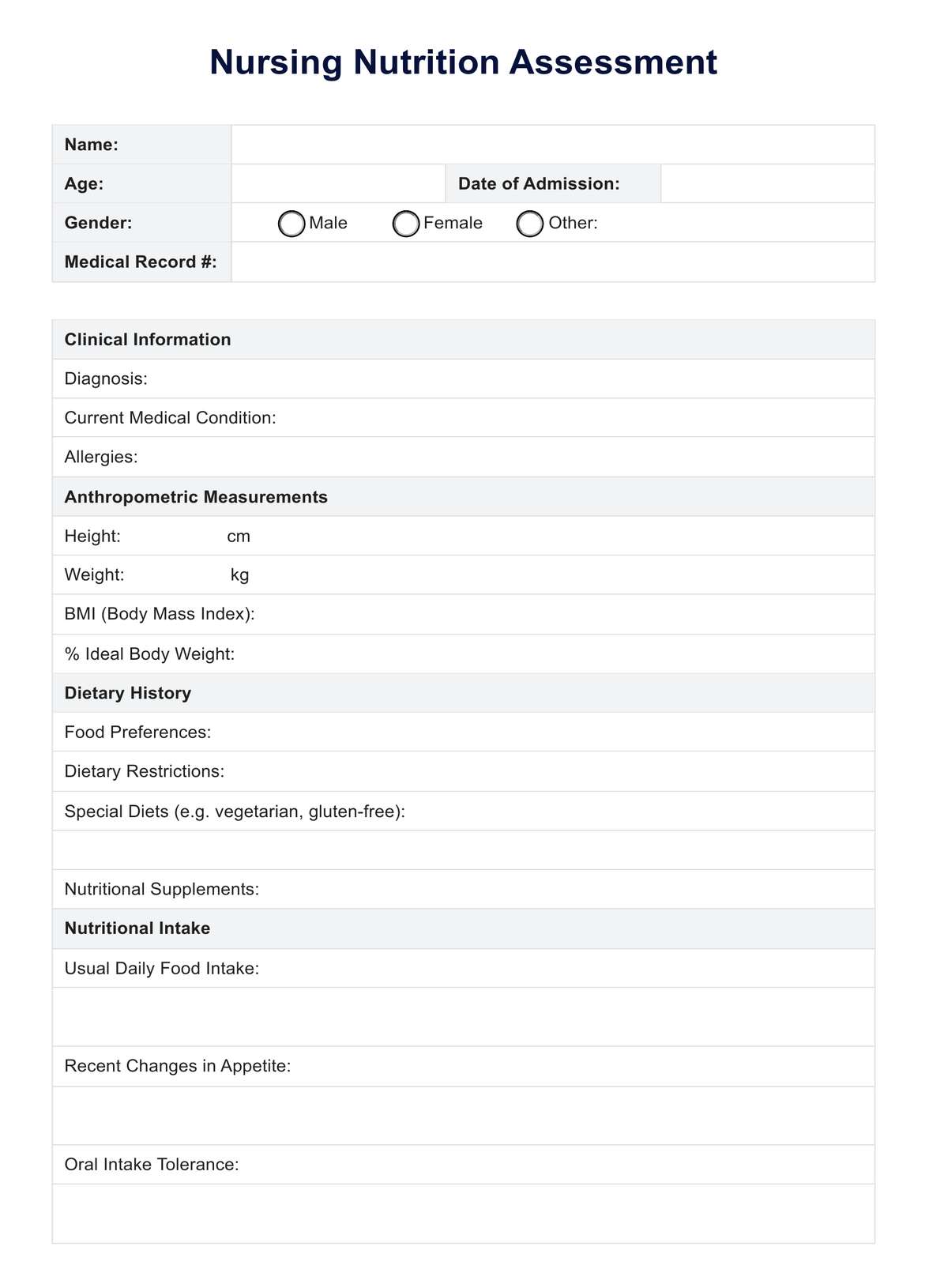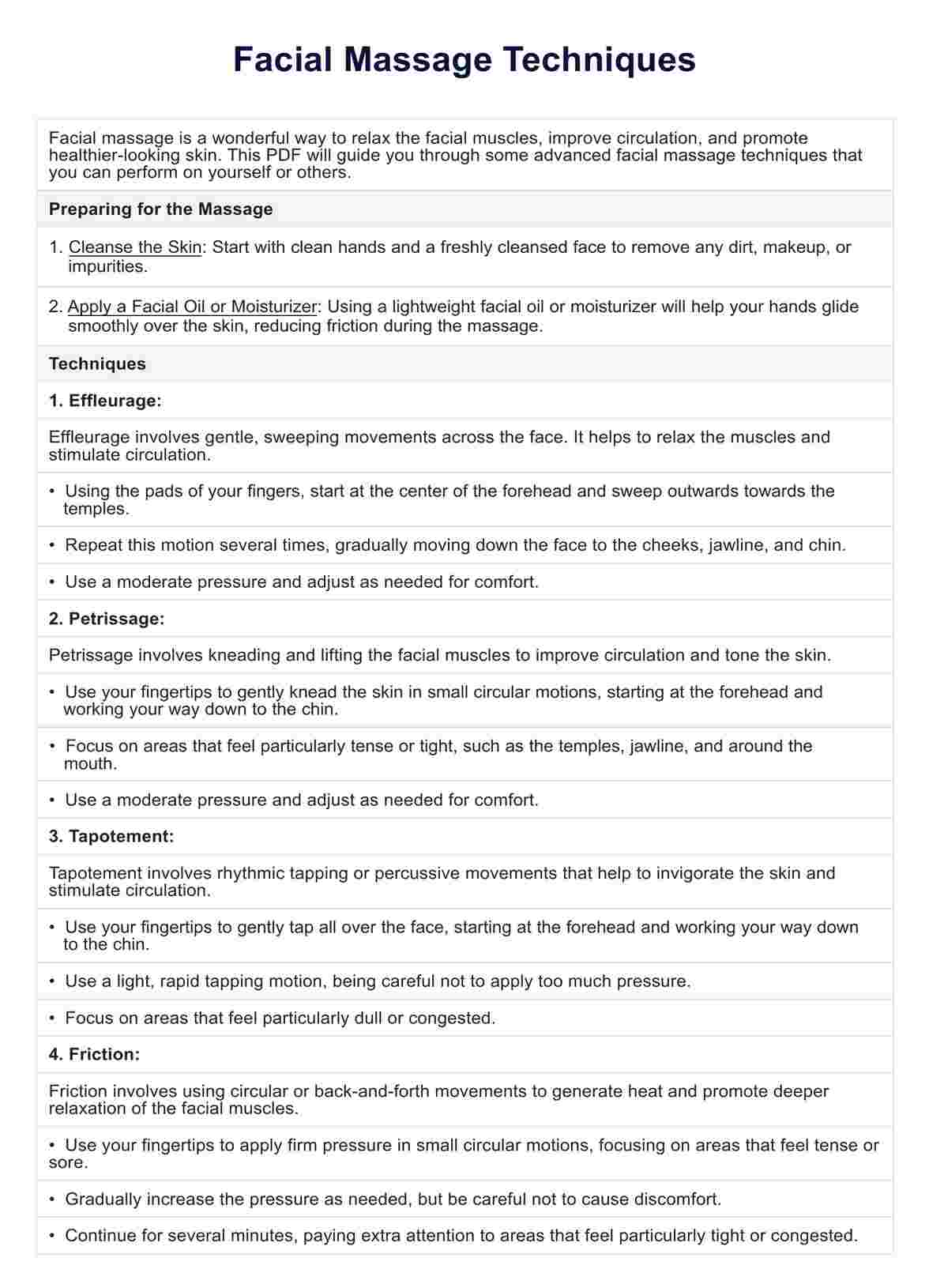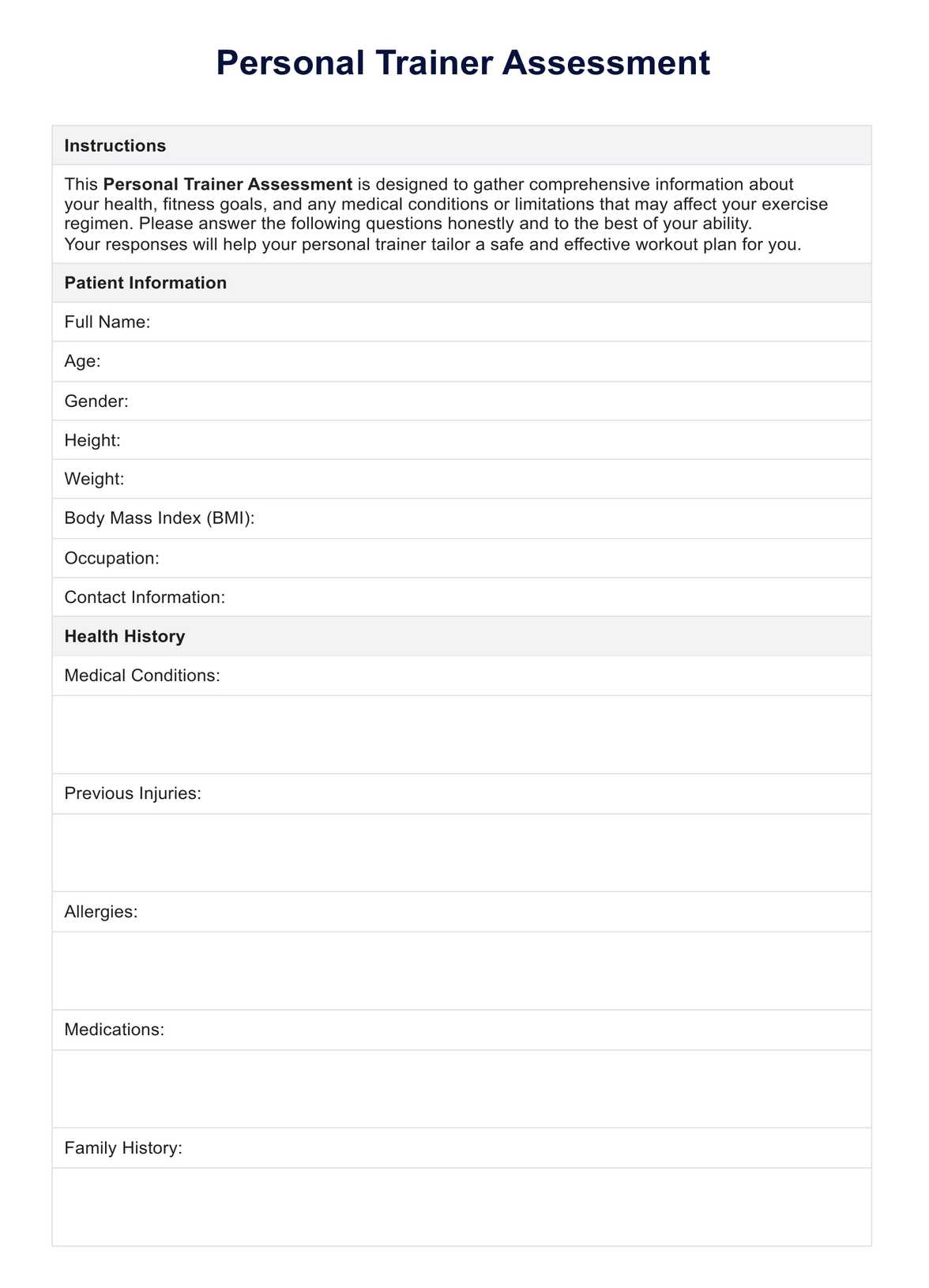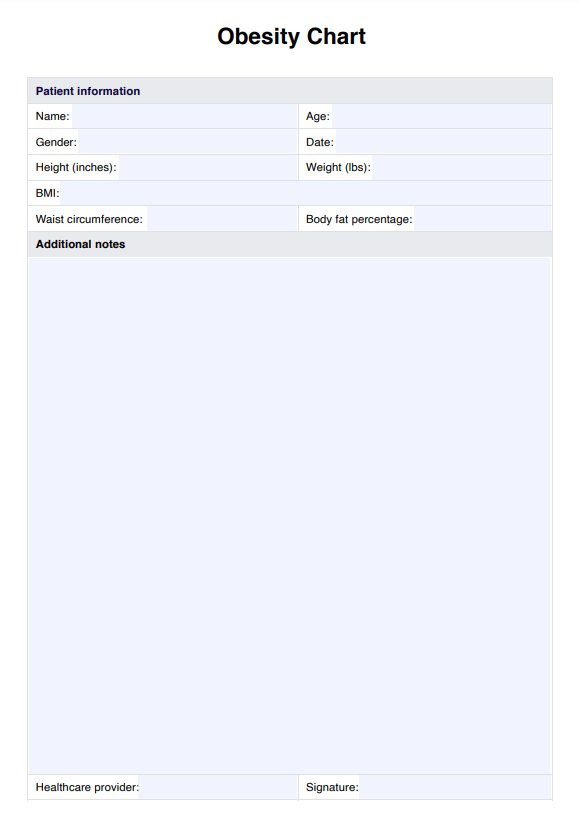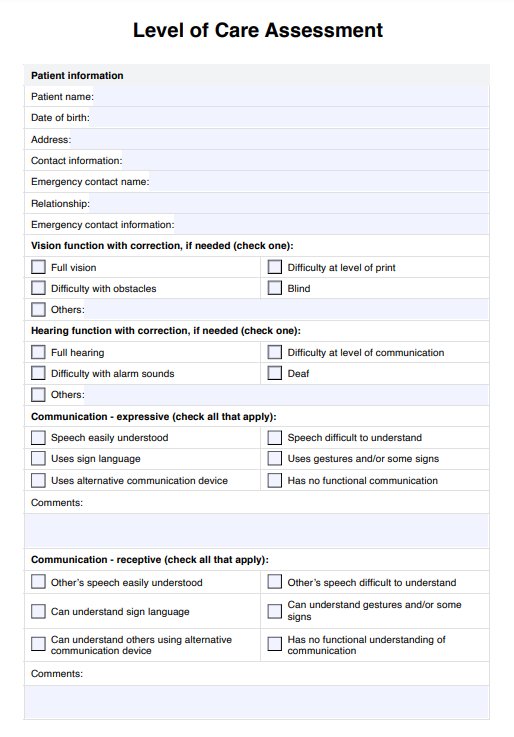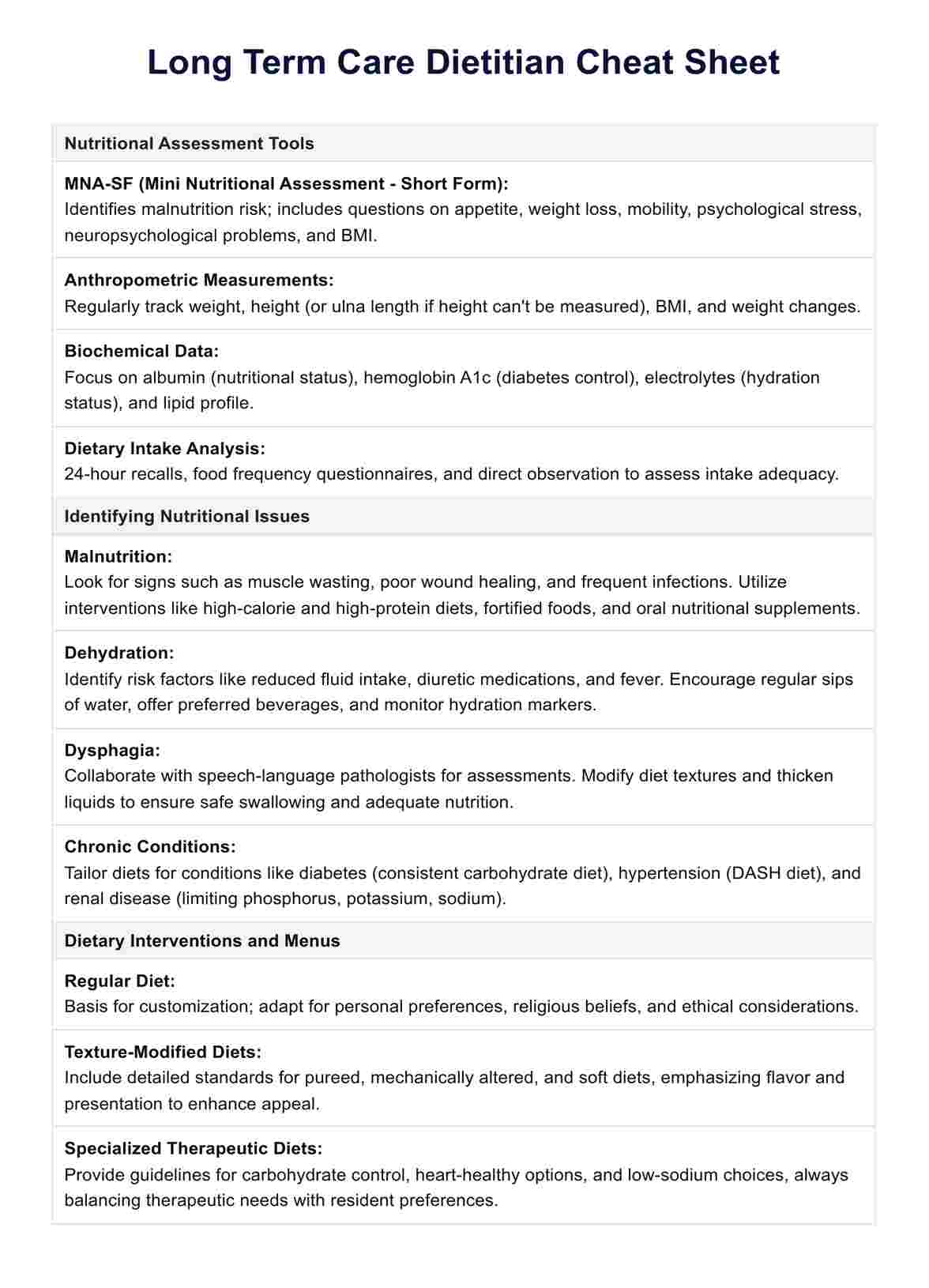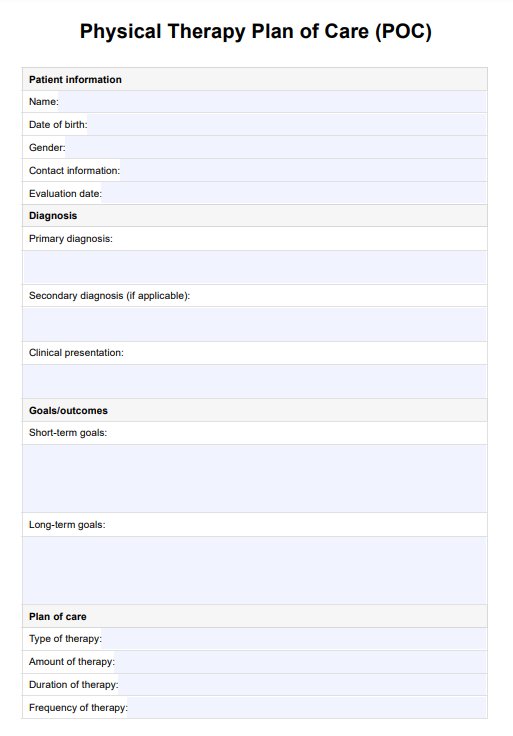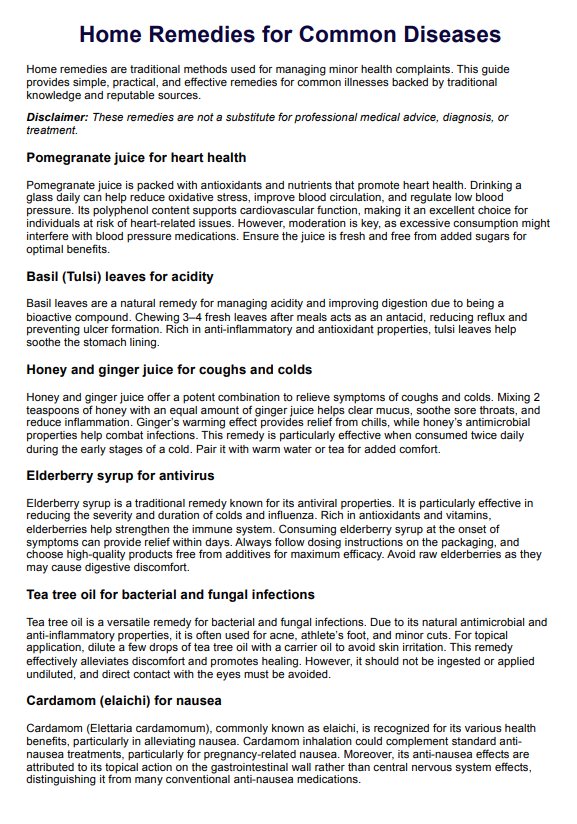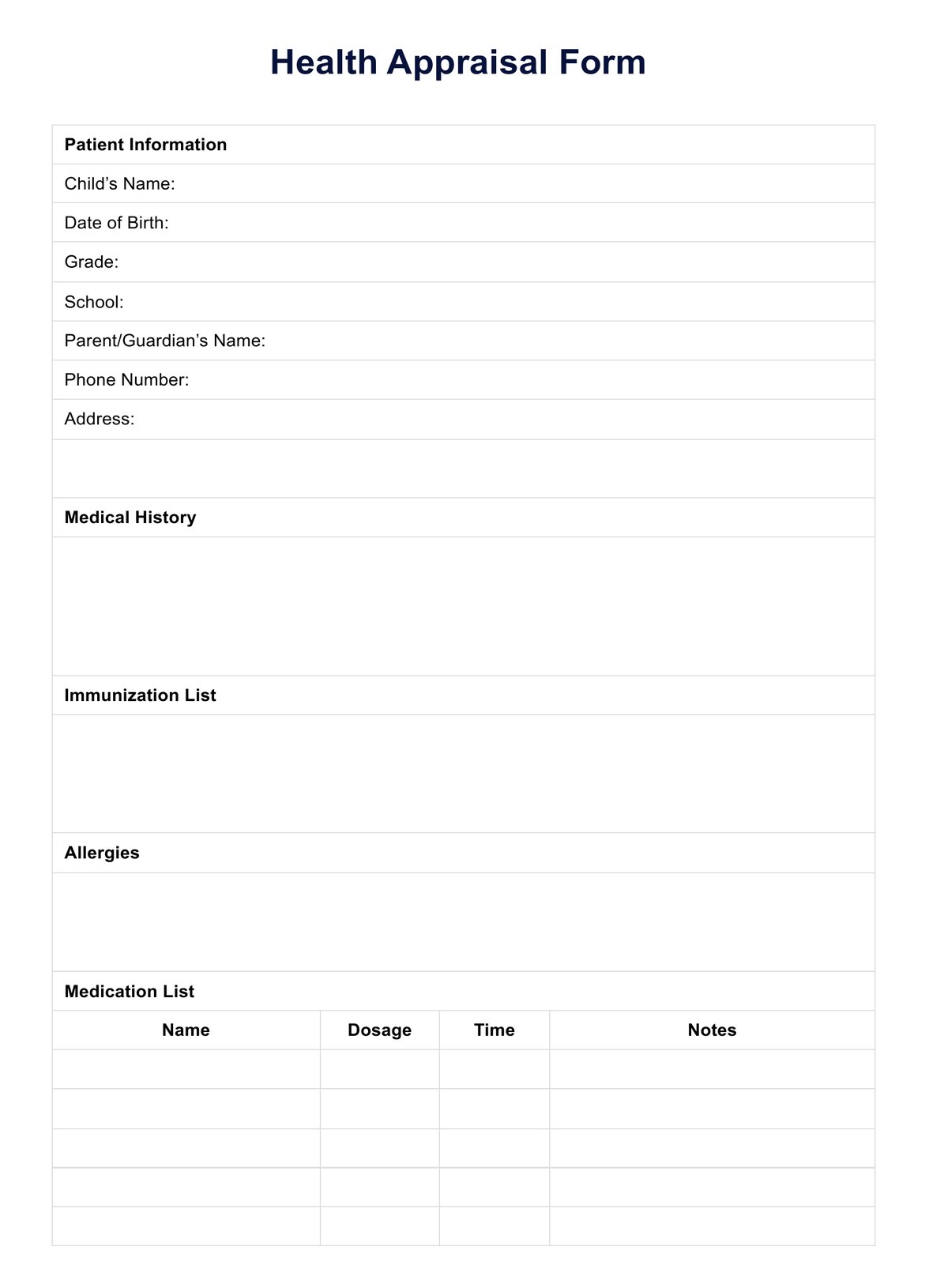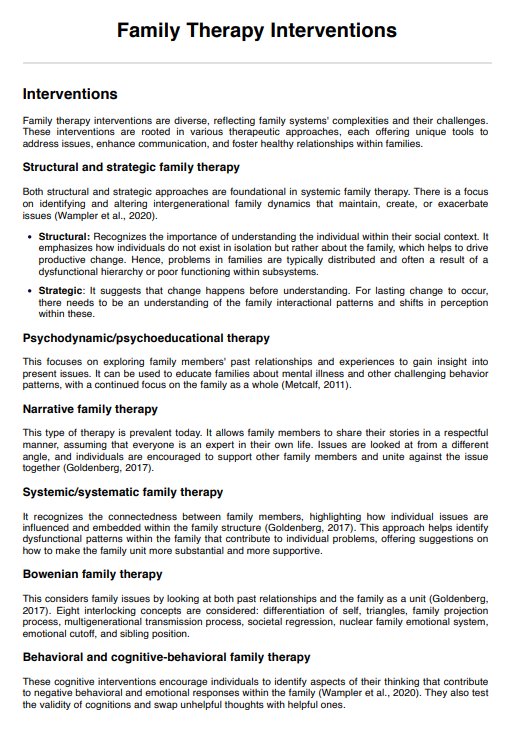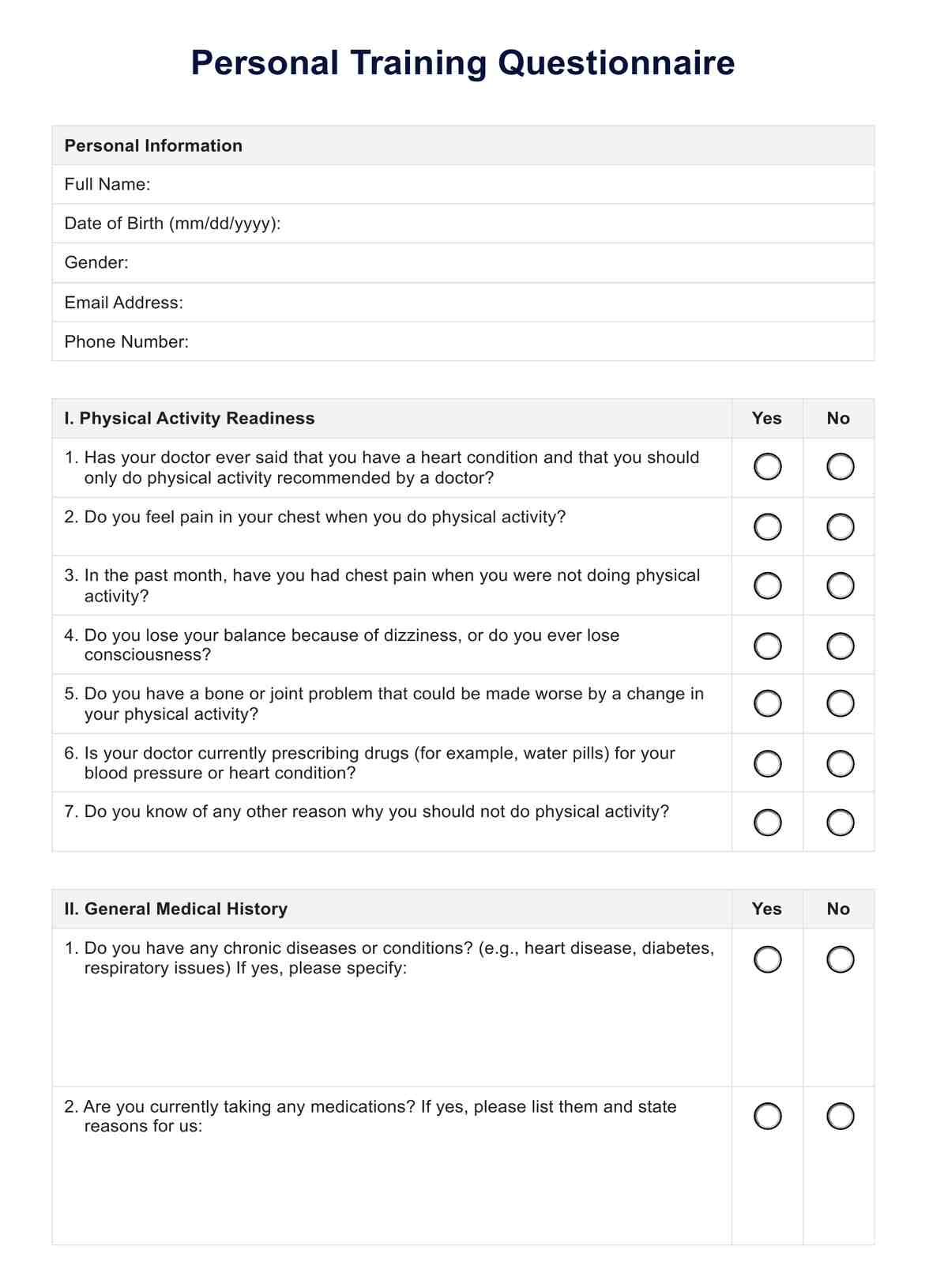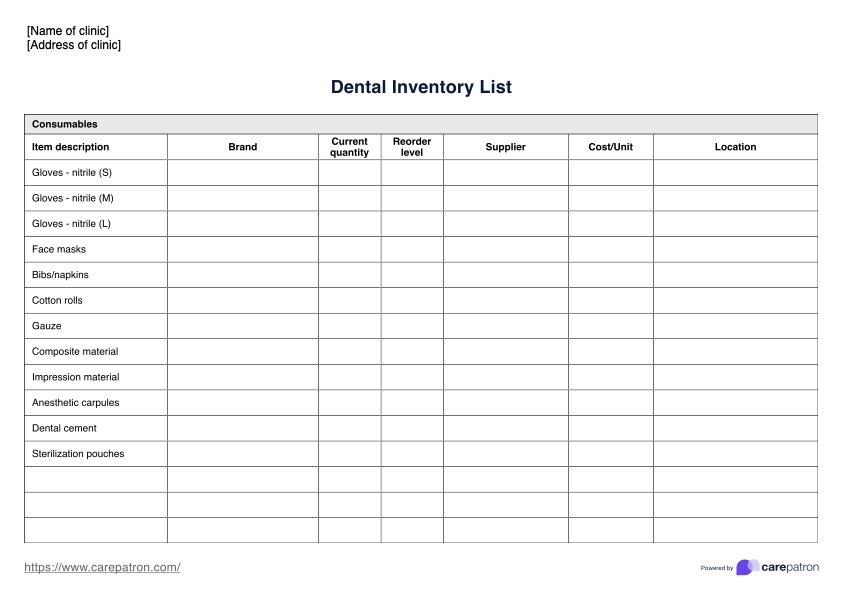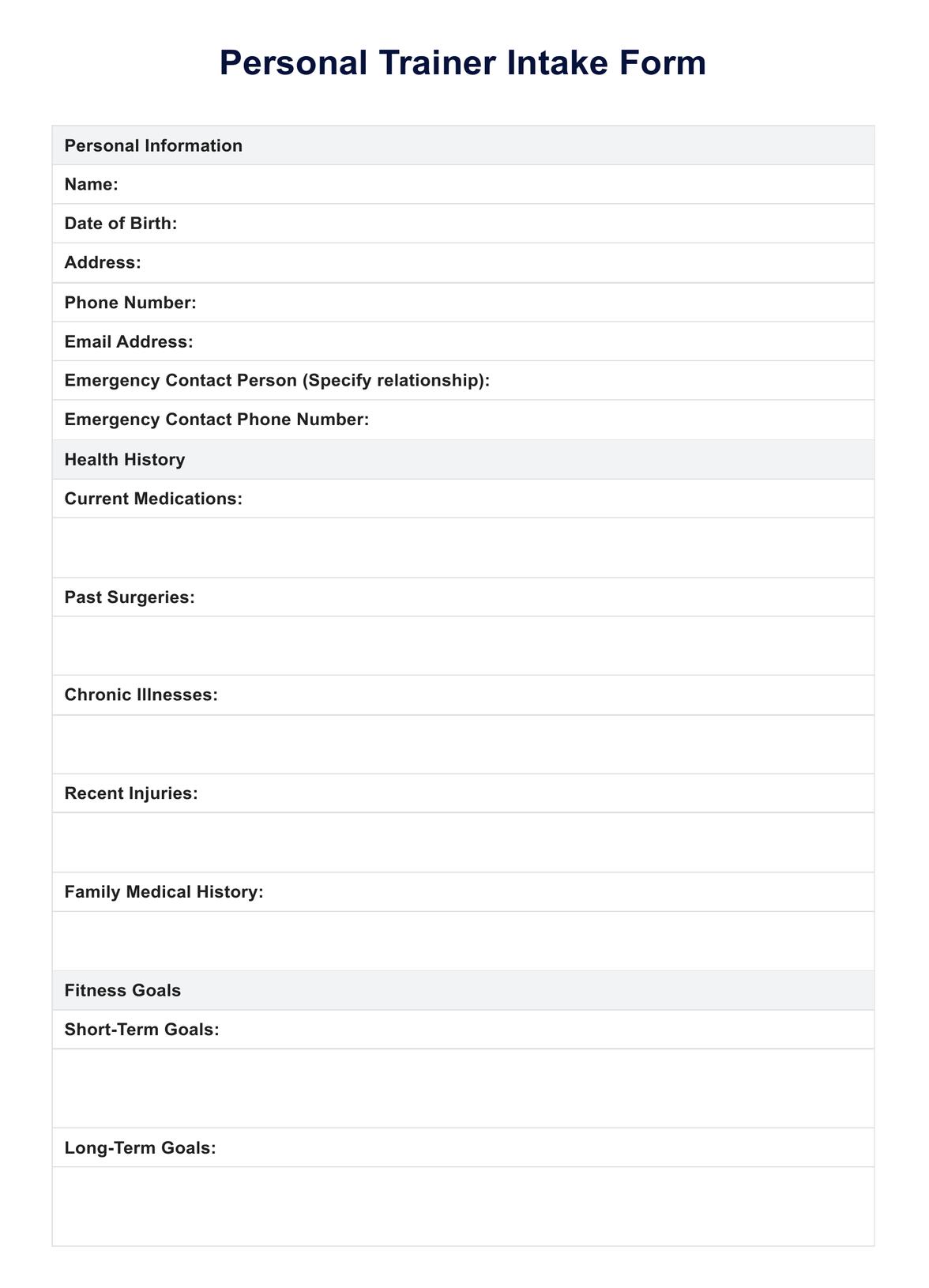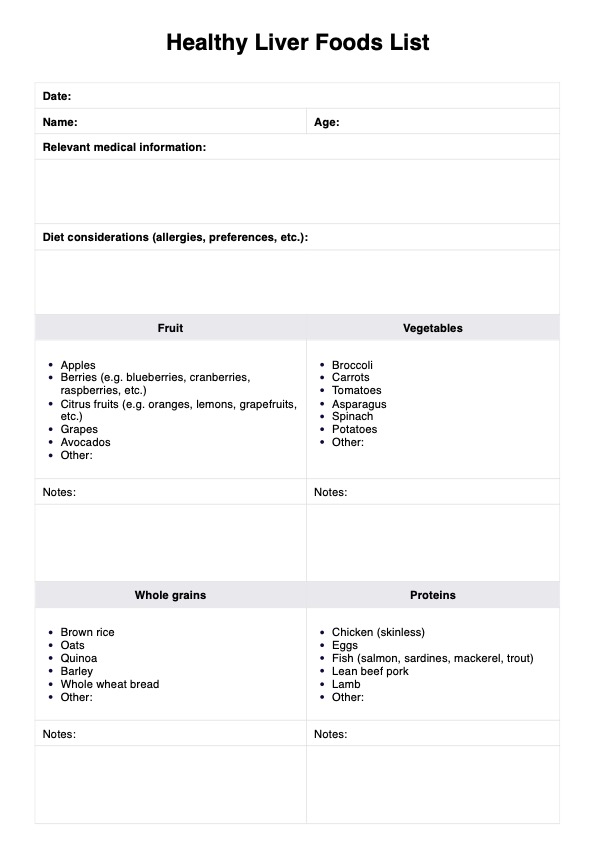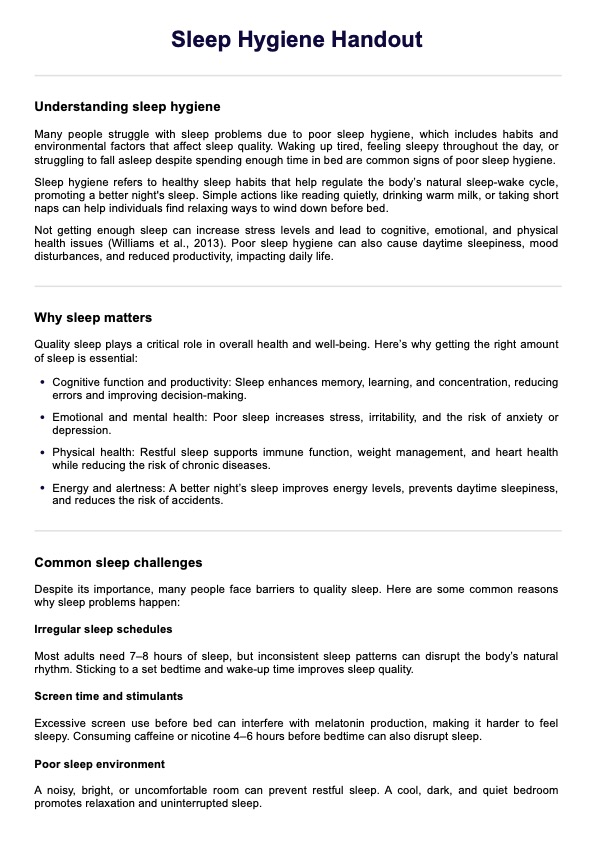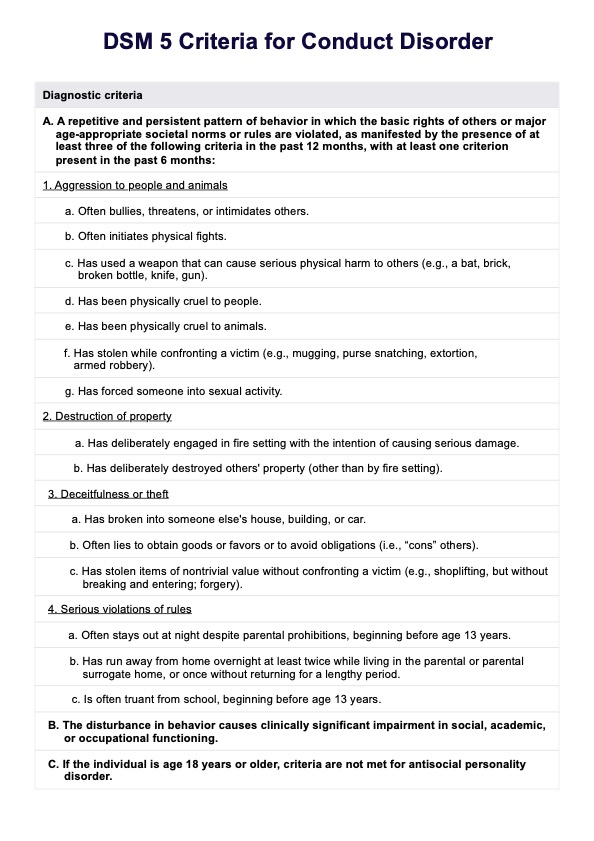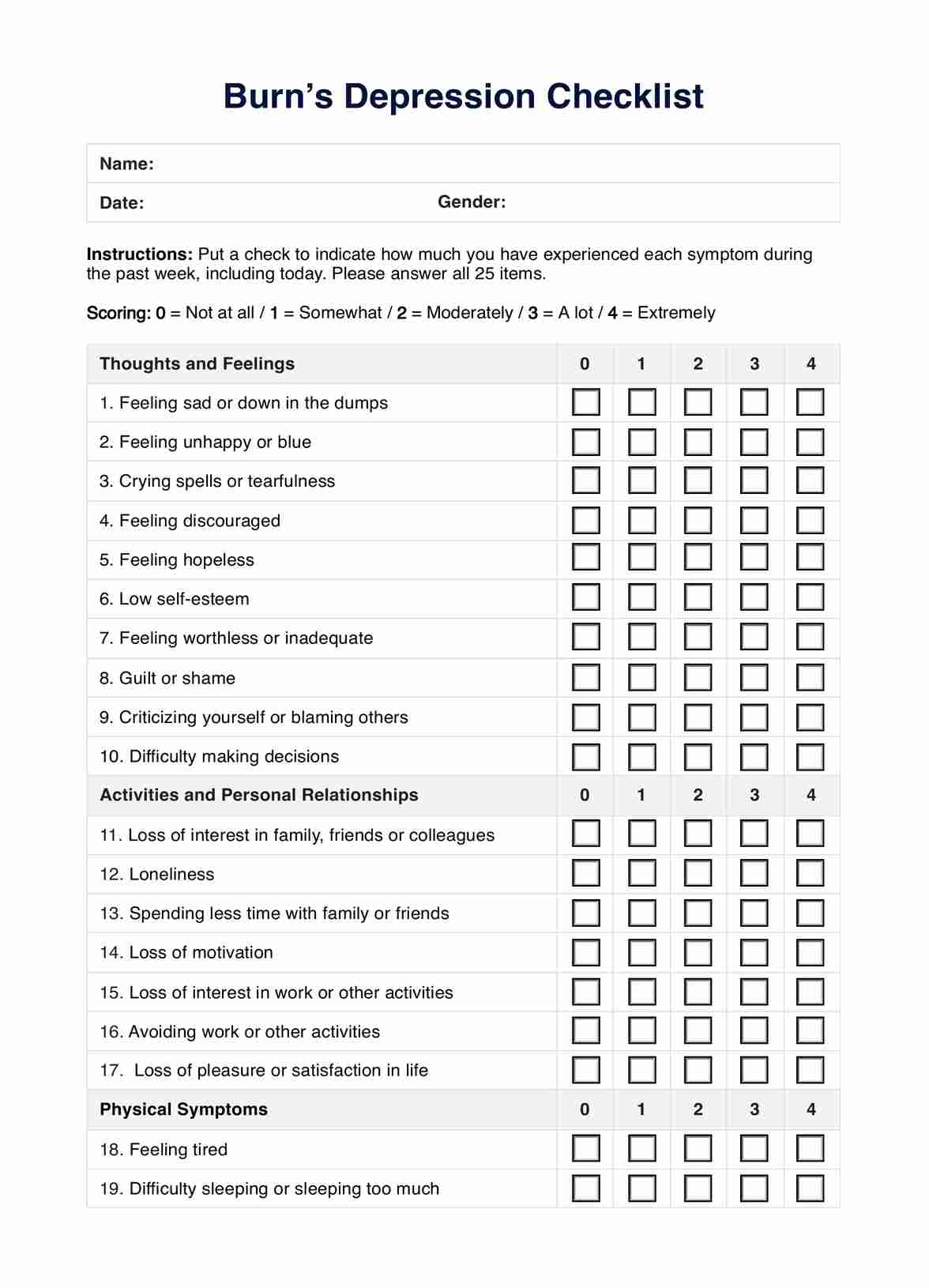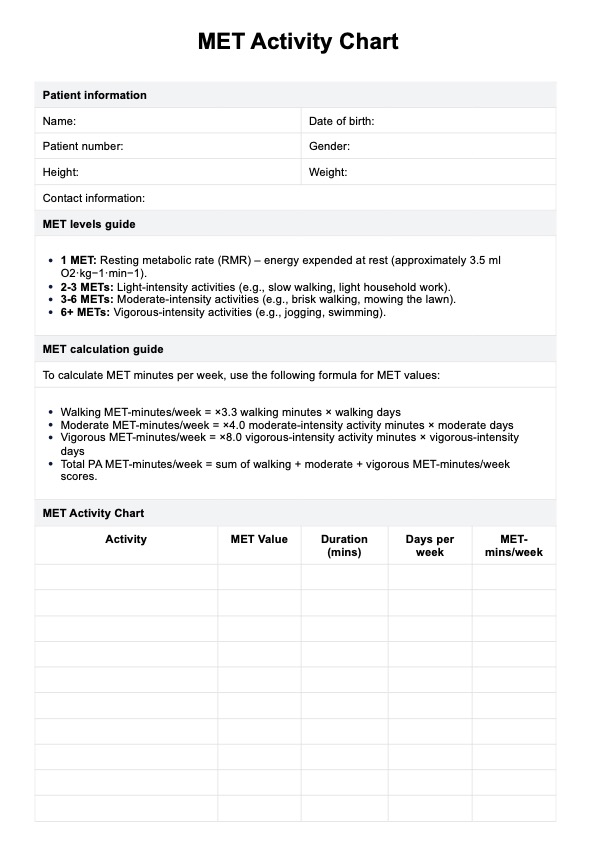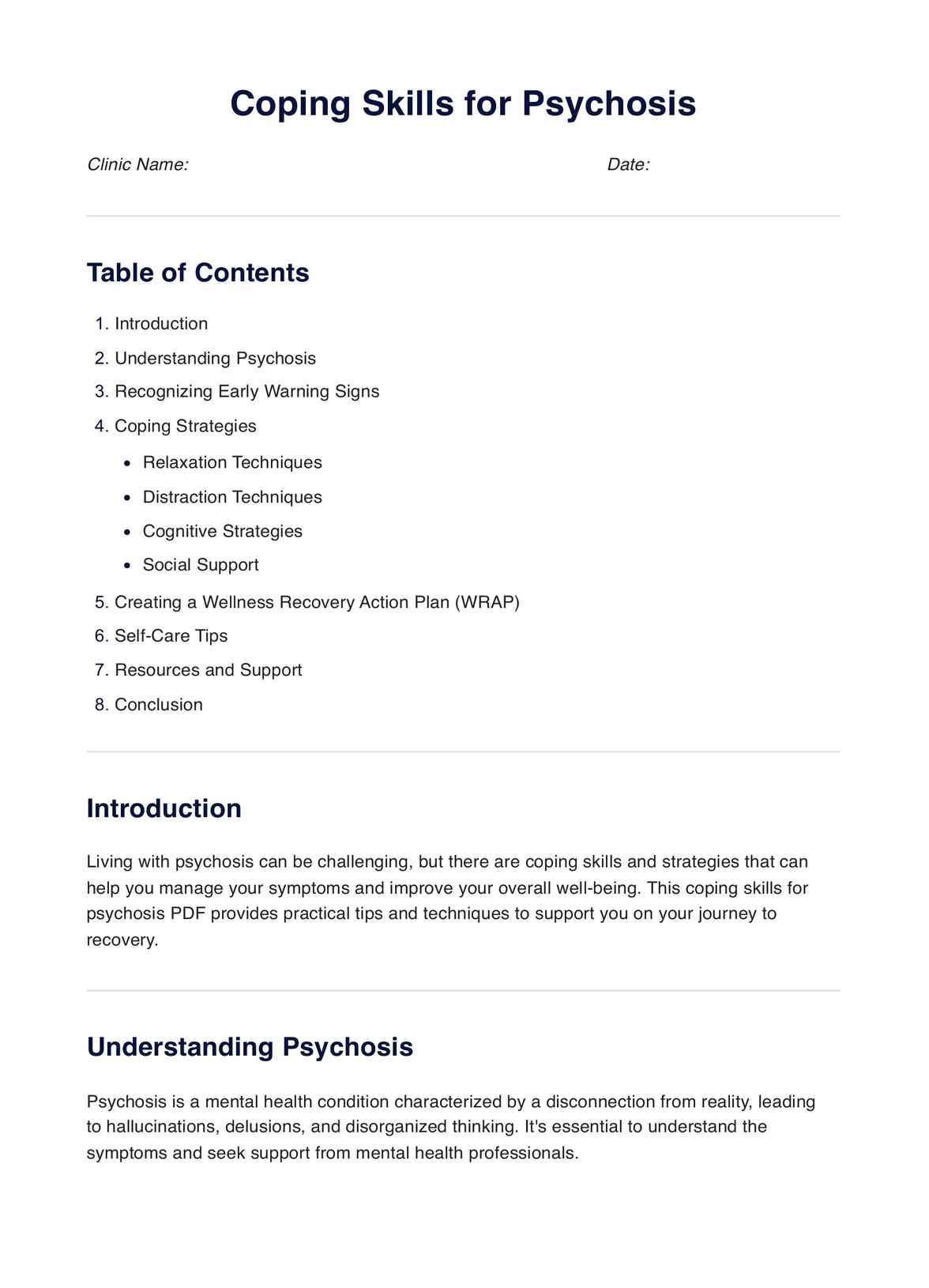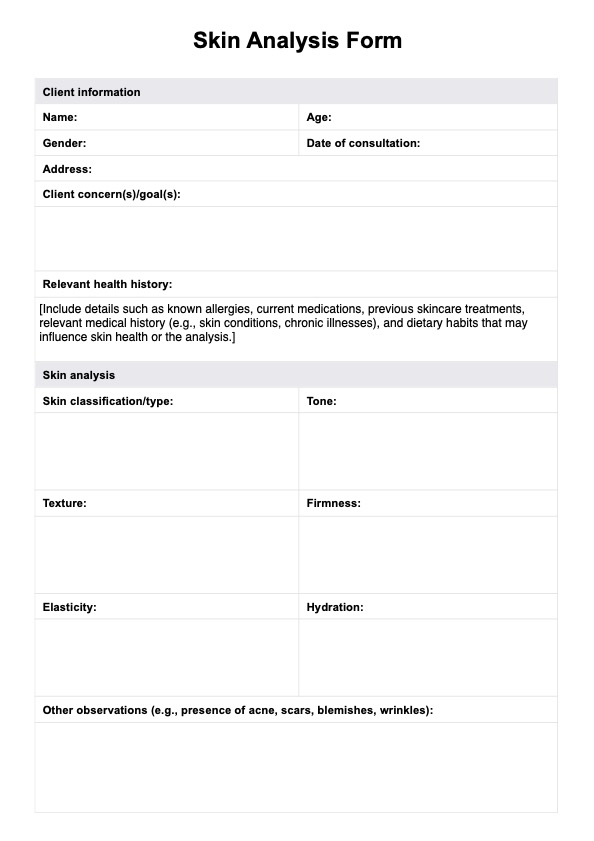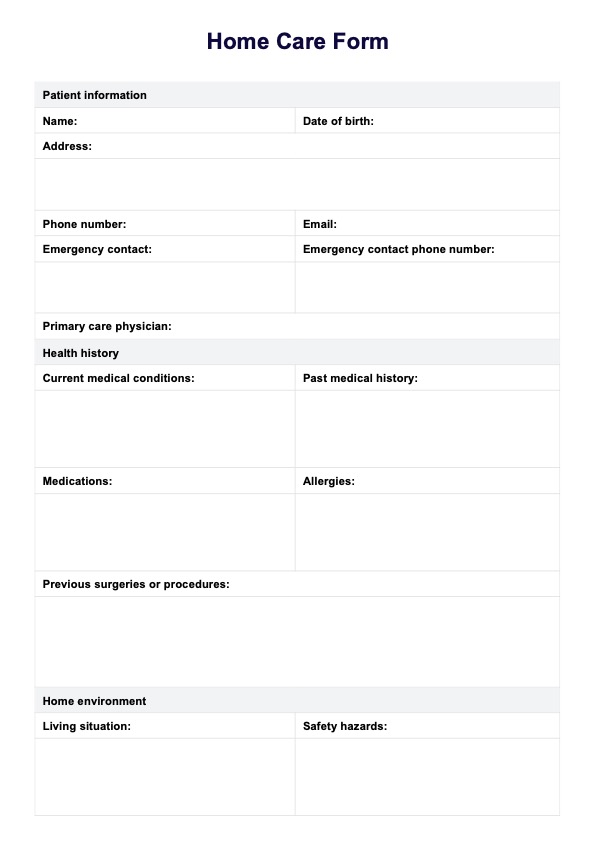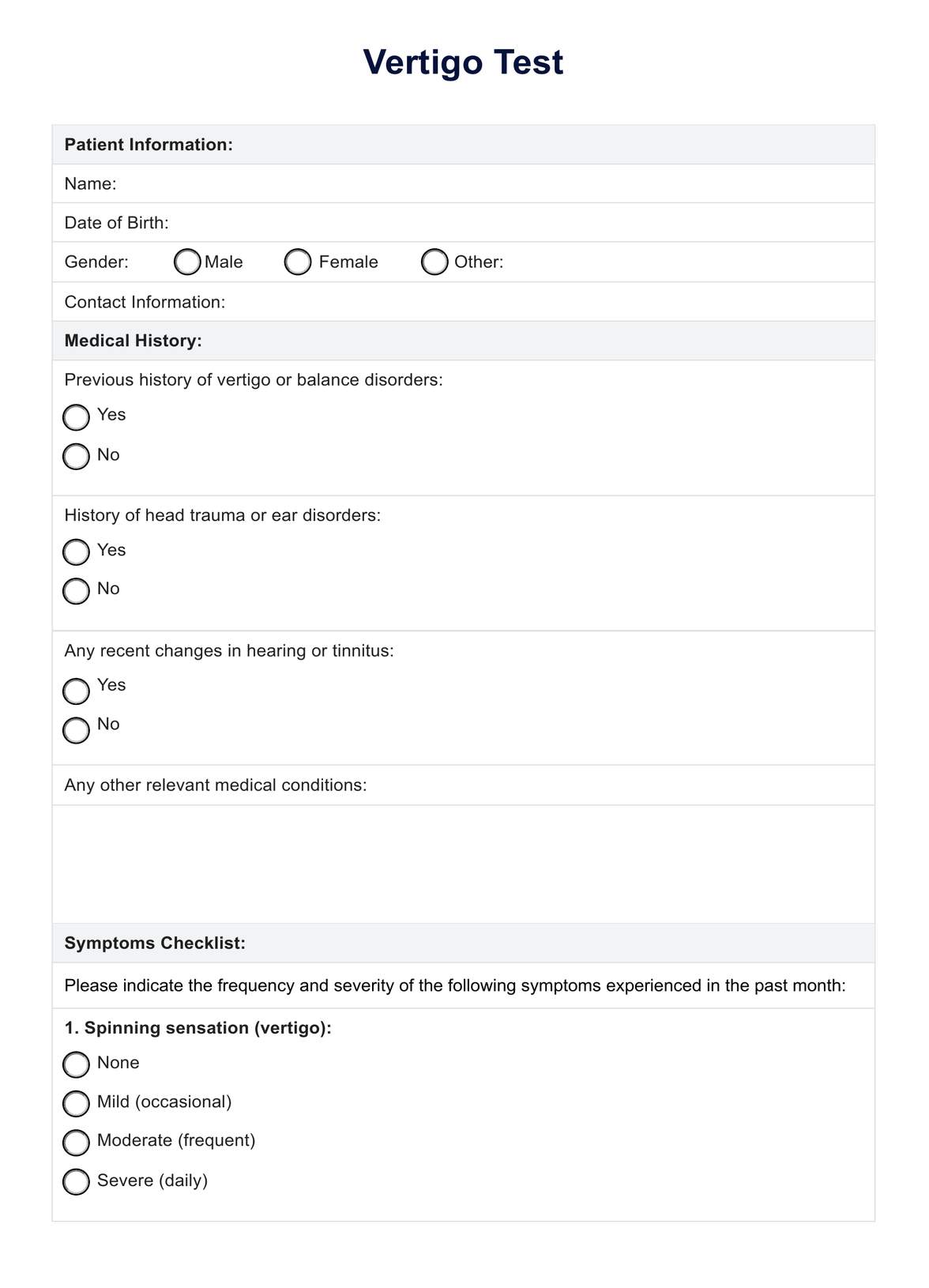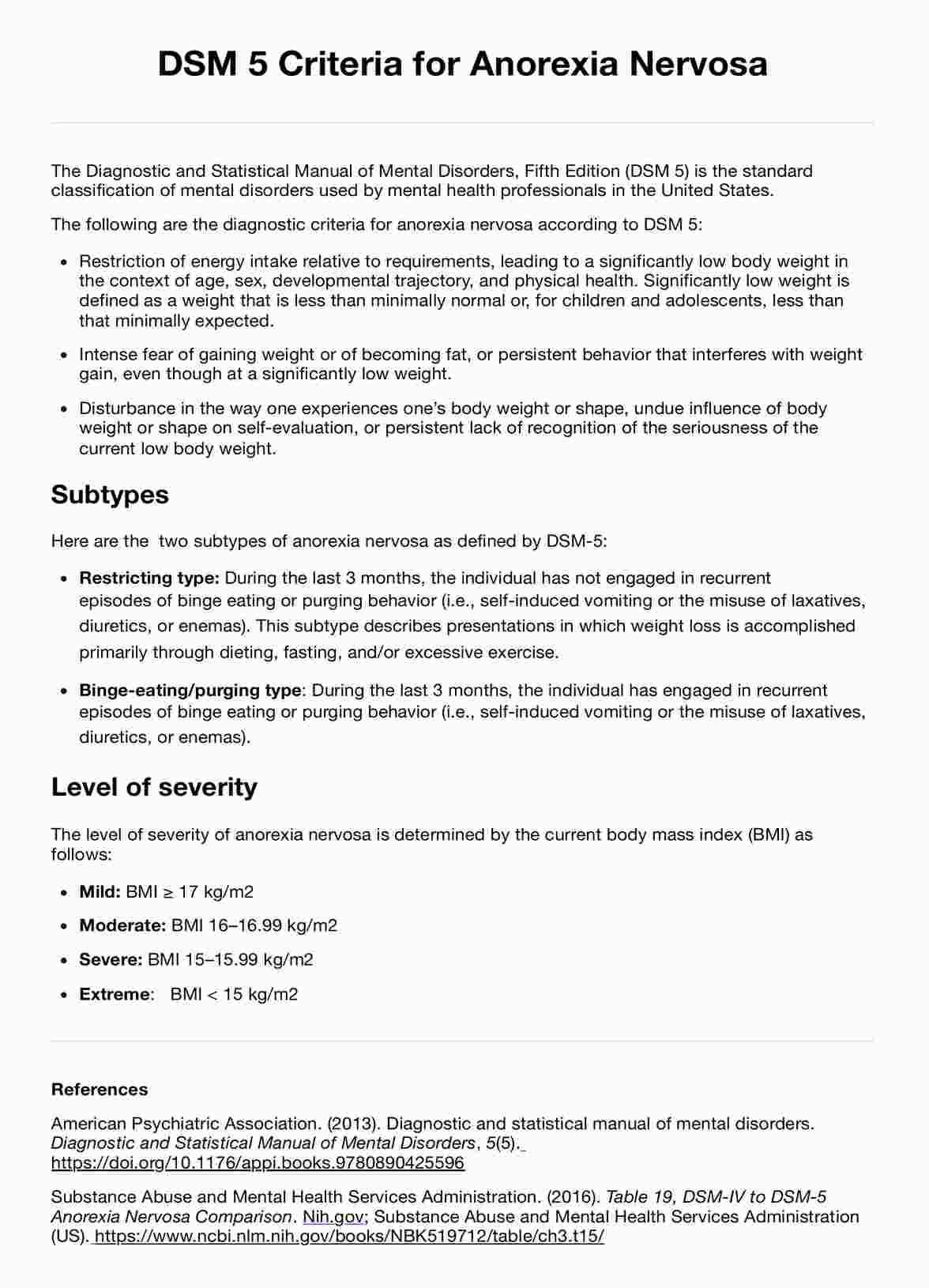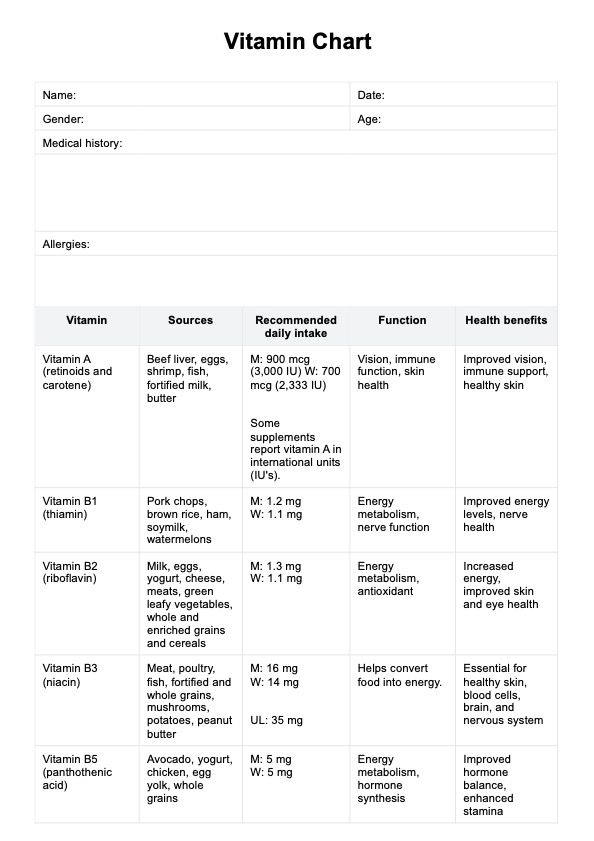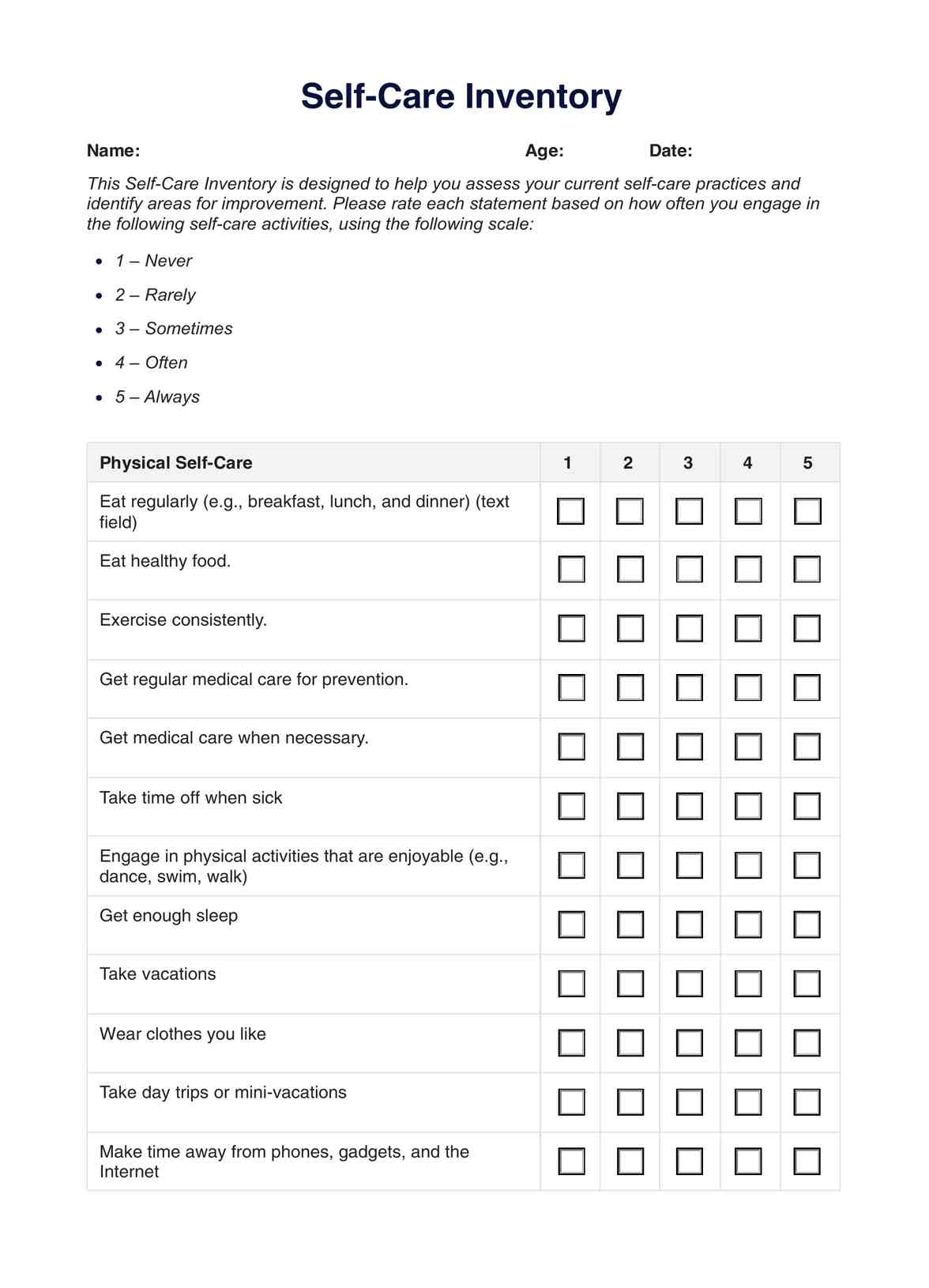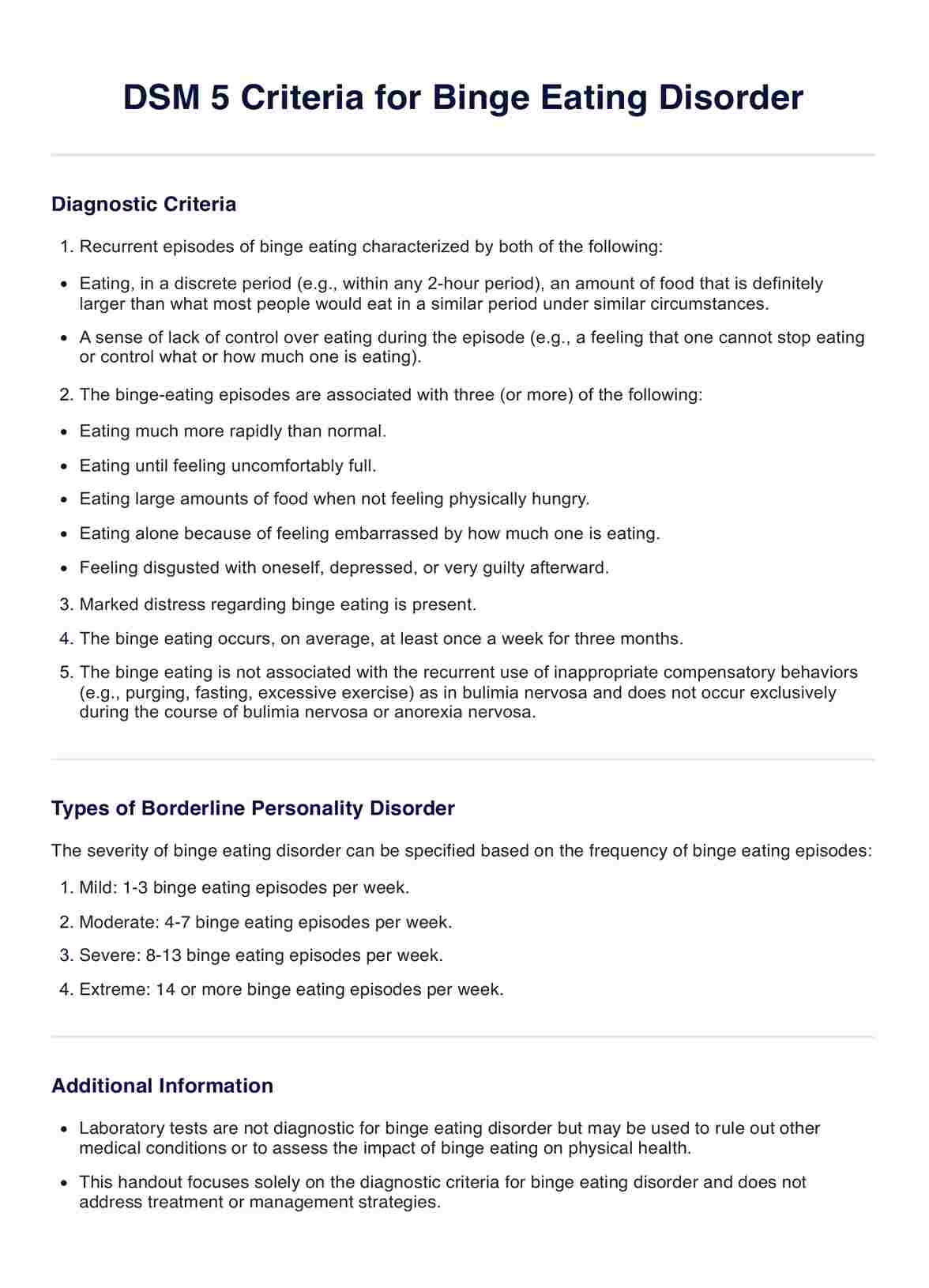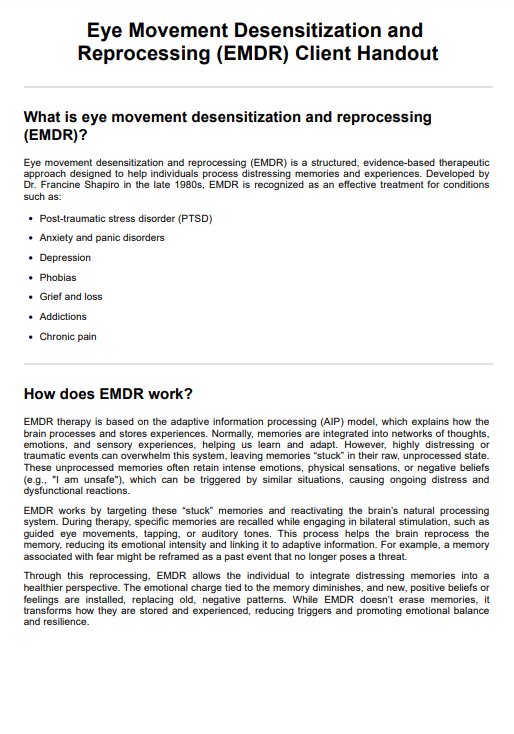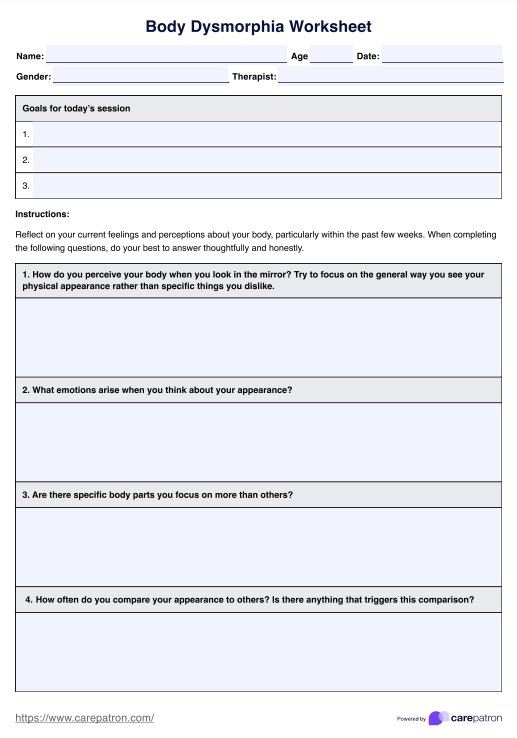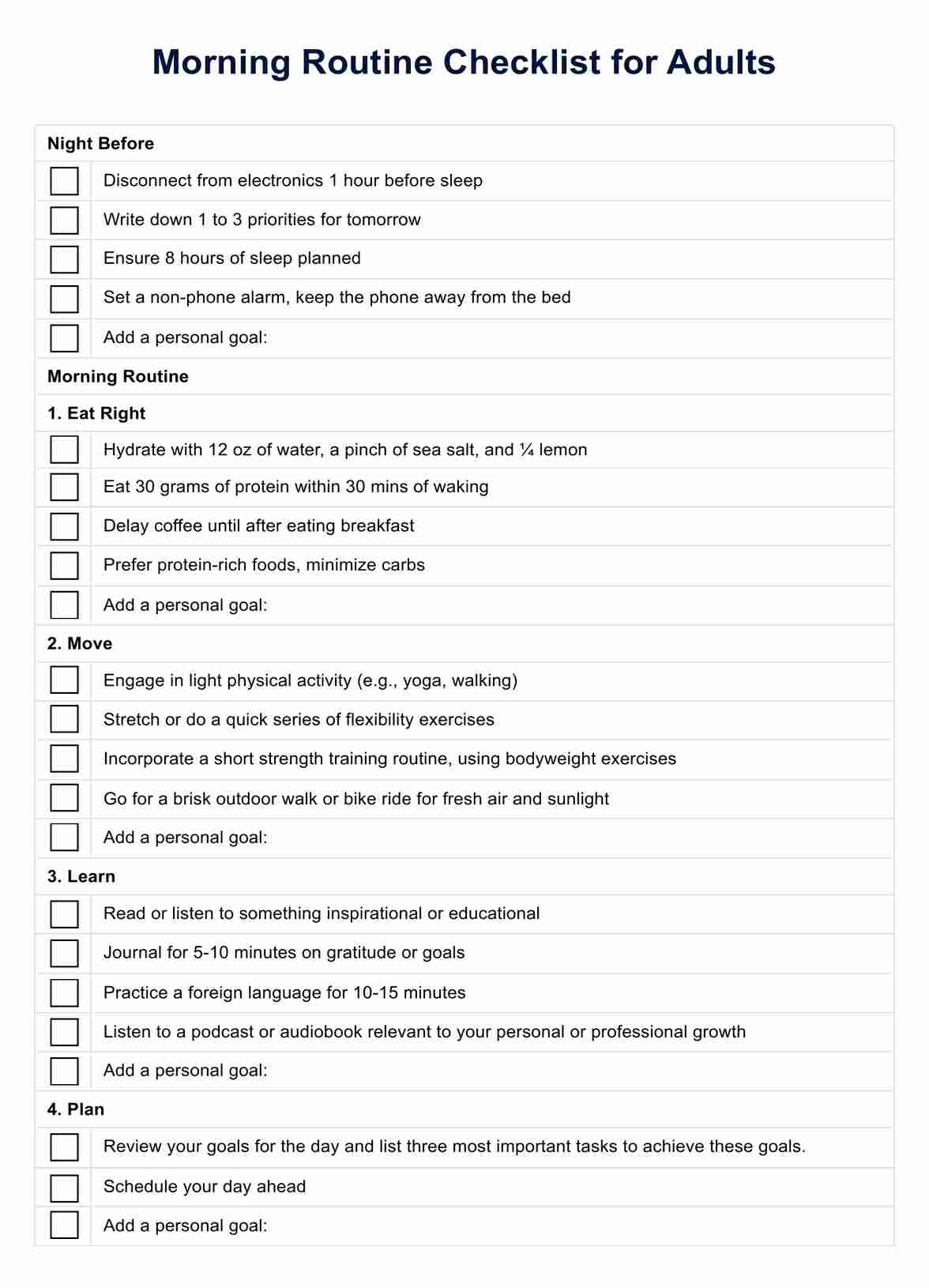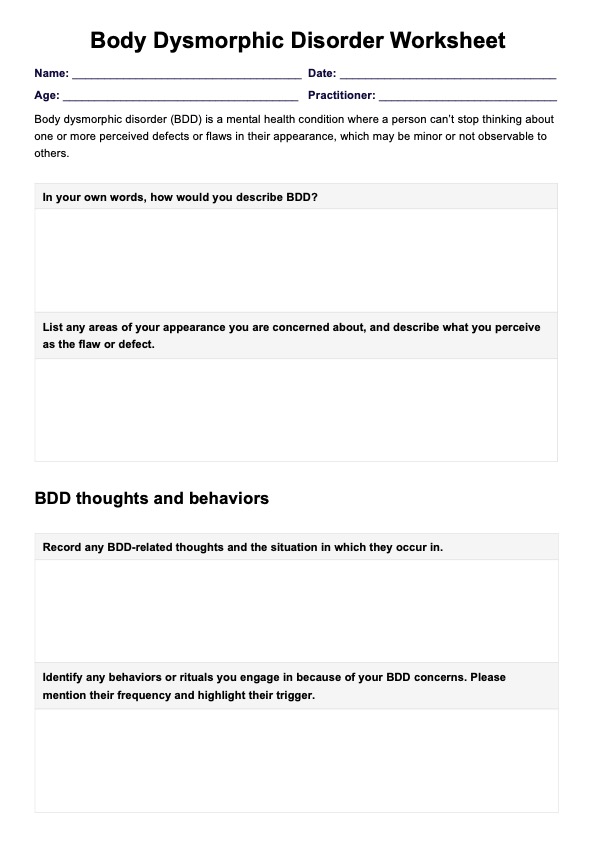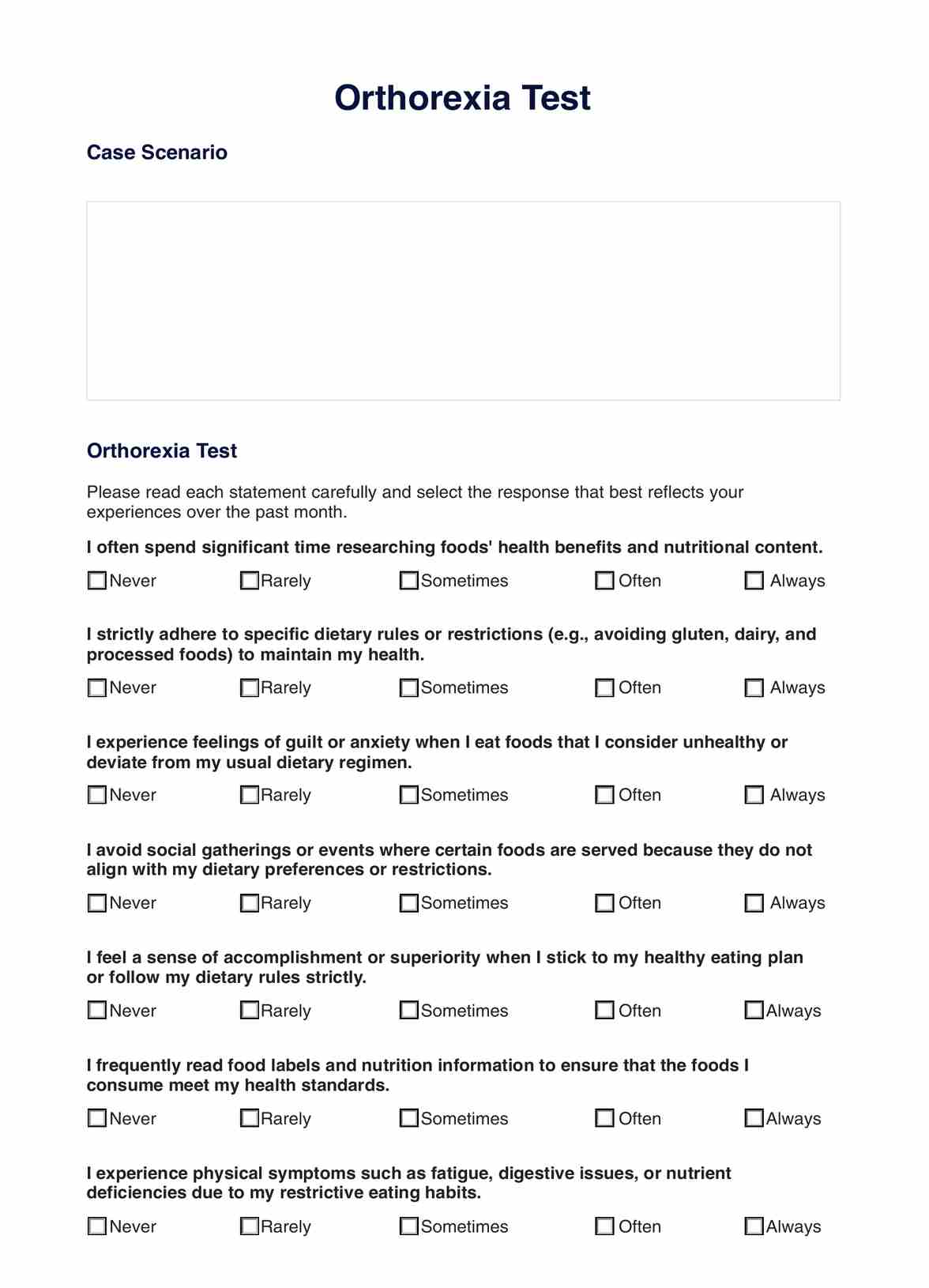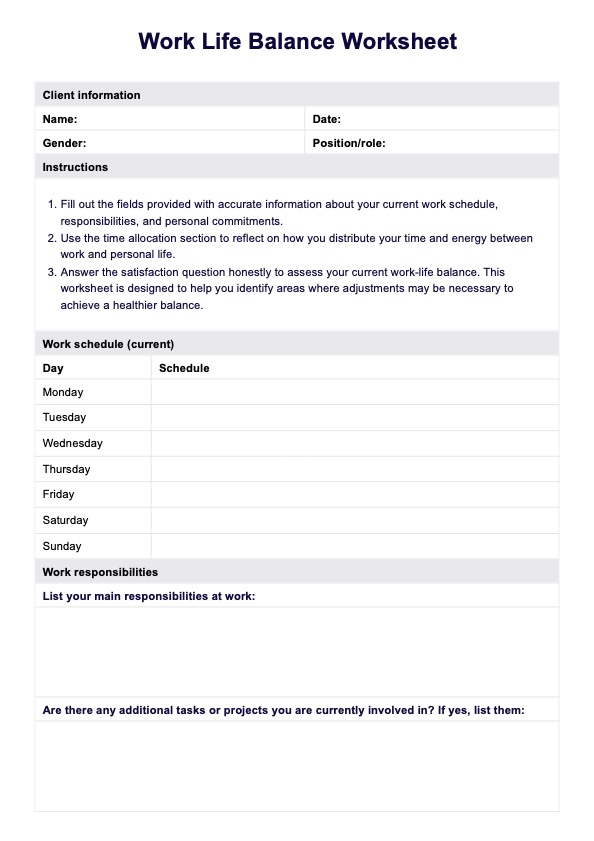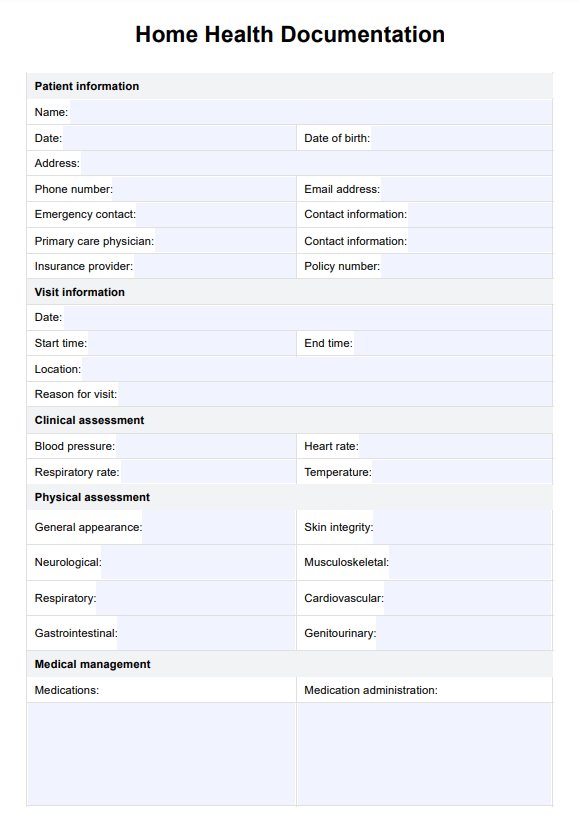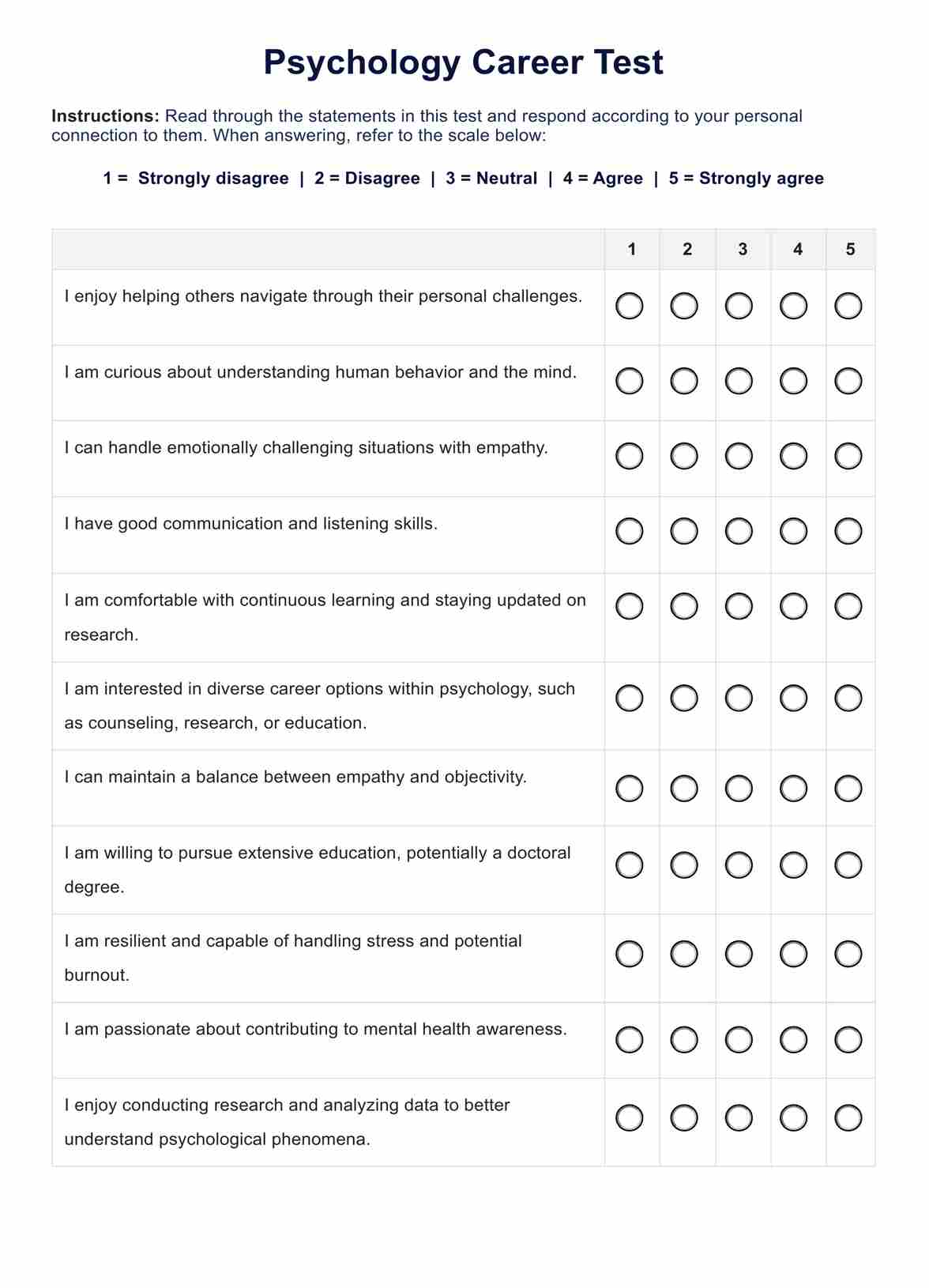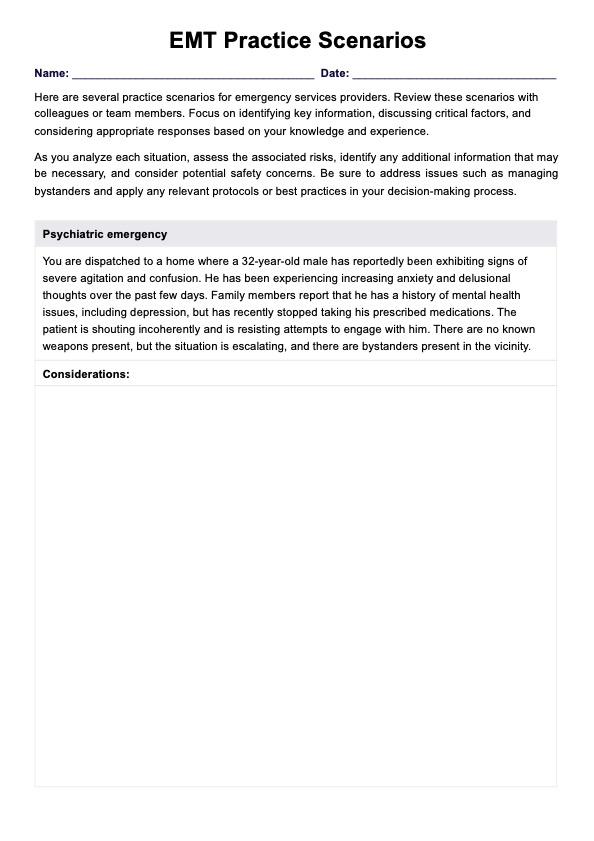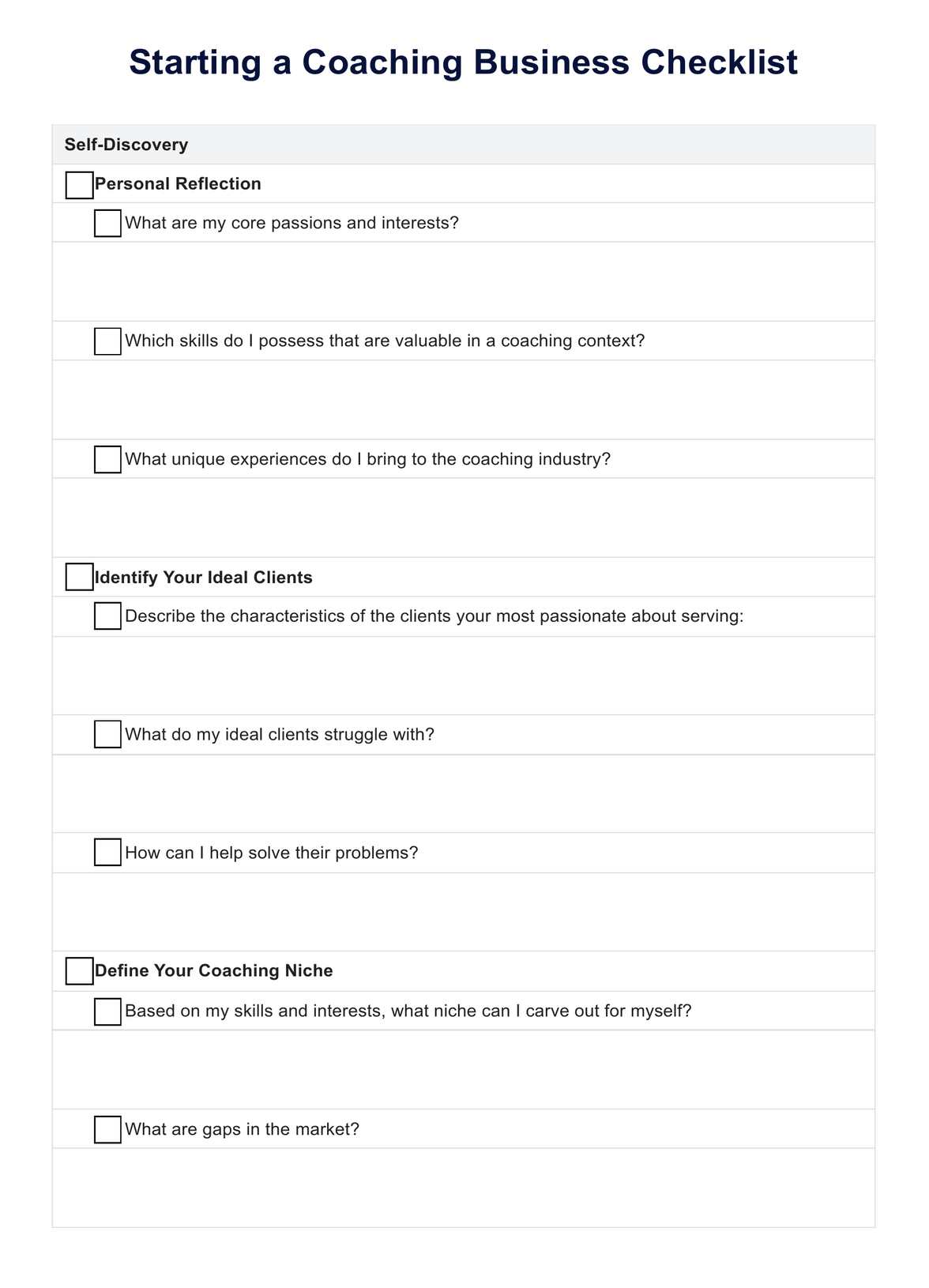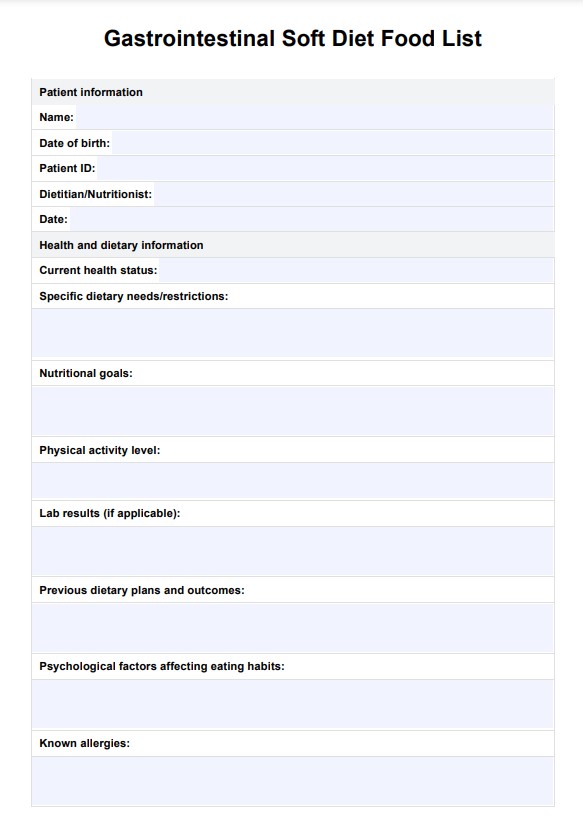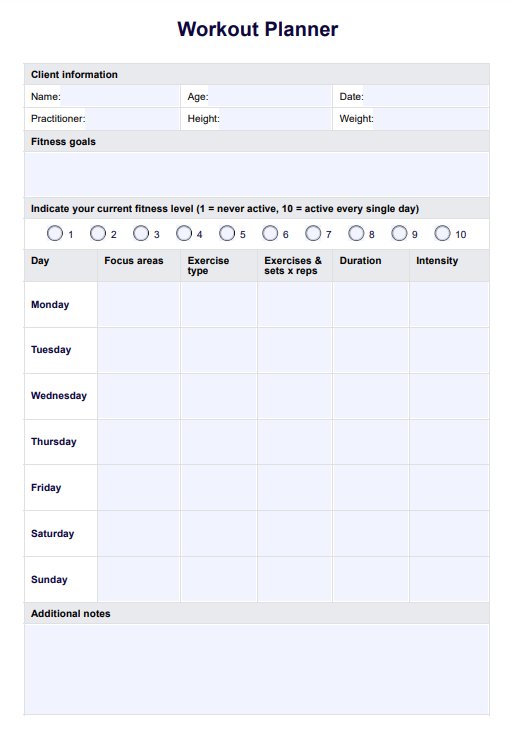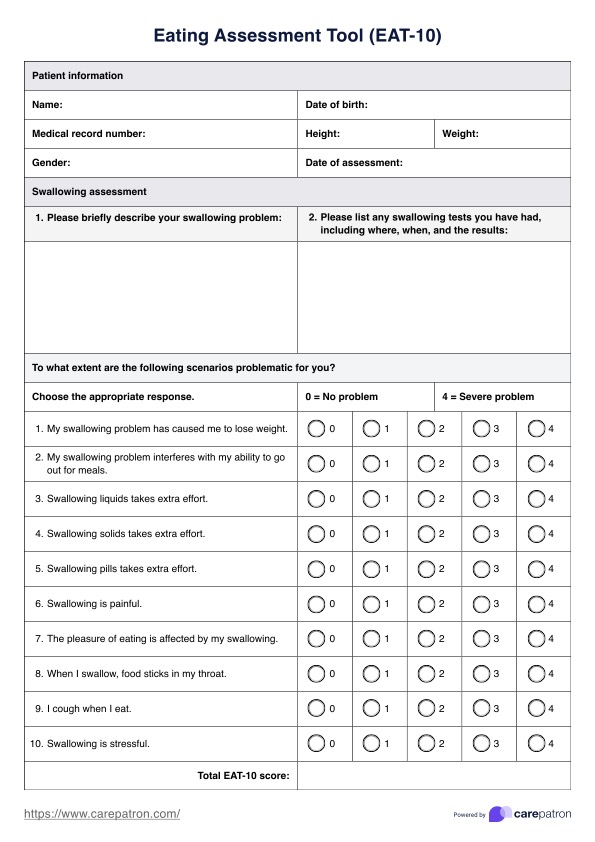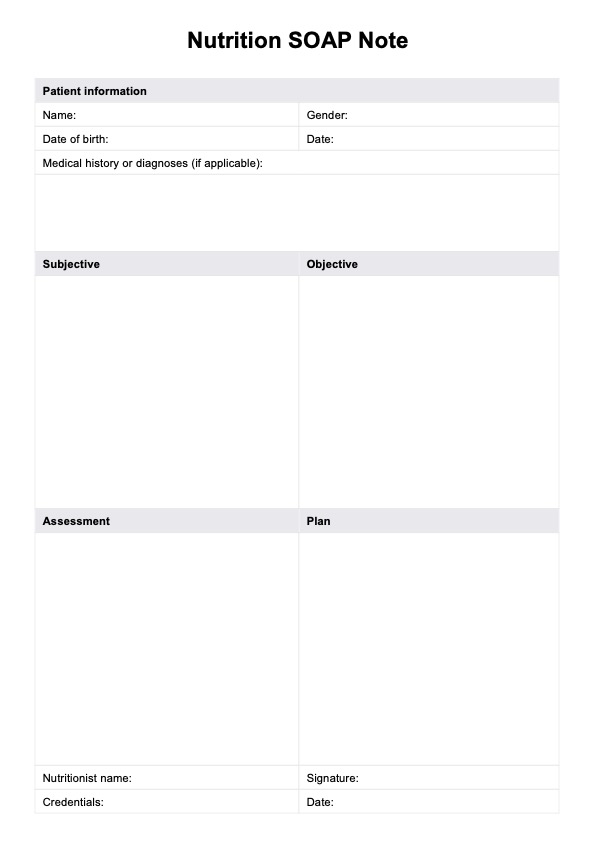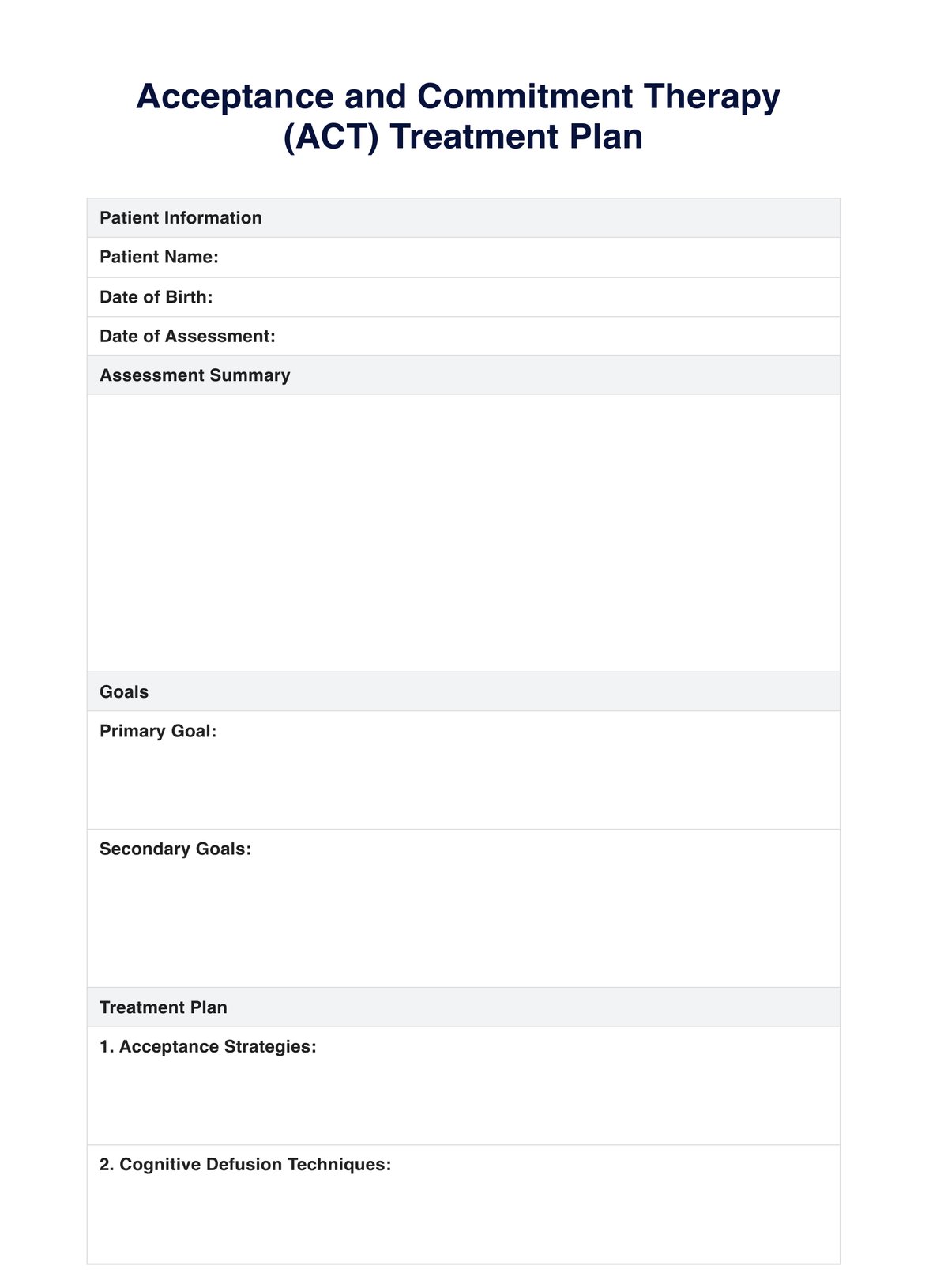Nutrition Tables Cheat Sheet
Unlock the secrets of nutrition labels with our Nutrition Tables Cheat Sheet, designed for health professionals and patients to make informed dietary choices.


What is a nutrient table?
A nutrient table, also known as a nutrition facts label, is a label found on packaged foods that provides detailed information about the nutritional content of the food. These food labels are mandated by regulatory authorities, such as the Food and Drug Administration (FDA) in the United States, to food manufacturers and food companies to help consumers make informed choices about their diet.
Nutrient tables typically include information about serving size, calories, and the amounts of various nutrients such as fat, cholesterol, sodium, carbohydrates, and protein. They also provide information about the percentage of daily values (%DV) for each nutrient. The daily value percentage is the amount the FDA recommends an adult consume daily. This helps consumers understand how a serving of food fits into their daily diet.
Nutrient tables promote public health by enabling consumers to compare different food products, manage their nutrient intake, and make healthier food choices. They are handy for people with specific dietary needs or health conditions, such as diabetes or heart disease, who need to monitor their intake of certain nutrients. By providing a clear and standardized overview of nutritional content, nutrient tables empower consumers to take control of their nutrition and make choices that support their health and well-being.
Nutrition Tables Cheat Sheet Template
Nutrition Tables Cheat Sheet Example
What is in a nutrition facts label?
As mentioned before, a nutrition facts label has a lot of information. It's not particularly easy to understand for people who are just getting started with tracking their nutrient intake, so let's look at each element in detail:
- Serving size: Indicates the amount of food considered a single serving, which is the basis for the nutritional information provided.
- Servings per container: The total number of servings in the entire package.
- Calories: Provides the total energy content in one serving of the food, measured in calories. This is important for managing energy intake and weight control.
On its right side, each nutrient has an actual amount and a corresponding %DV. This value indicates how much a nutrient in a serving of food contributes to a daily diet based on a 2,000-calorie diet. It helps consumers understand if a food is high or low in a particular nutrient without manually calculating it.
For example, if a serving has 50% DV of fat, eating one serving gives you 50% of the fat you should eat daily. For most of these nutrients, less than 5% DV is low, while more than 20% DV is high.
Nutrition label components
Here are the nutrients and nutrition information you will see on nutrition labels:
Total fat
Encompasses saturated fat, trans fat, and unsaturated fats. Fat is a vital nutrient that provides energy, supports cell growth, and helps absorb vitamins. However, consuming too much, particularly saturated and trans fats, can increase the risk of heart disease.
Cholesterol
A waxy substance found in animal products. It's necessary for building cell membranes and producing hormones, but too much cholesterol can lead to plaque buildup in arteries, increasing the risk of heart disease.
Sodium
Sodium, commonly found in salt, is crucial for maintaining fluid balance and nerve function. However, excessive sodium intake can lead to high blood pressure and increase the risk of heart disease and stroke.
Total carbohydrates
Includes sugars, starches, and dietary fiber. Carbohydrates are the body's primary energy source. Eating food with only a little total carbohydrate value can lead to energy deficiency, while eating those with too much, especially from added sugars, can contribute to weight gain and increase the risk of diabetes.
Dietary fiber
A type of carbohydrate that the body can't digest, which aids in digestion, helps regulate blood sugar levels, and can reduce the risk of heart disease and certain cancers. Low intake can lead to digestive issues, while high intake supports gut health.
Total sugars
Includes both added sugars and natural sugars found in foods. While natural sugars in fruits and dairy are part of a healthy diet, added sugars should be limited as they can contribute to obesity, diabetes, and heart disease.
Protein
A vital nutrient that's necessary for building, repairing, and maintaining tissues in the human body. It's also essential for immune function and hormone production. Inadequate protein intake can lead to muscle loss and weakened immune function, while excessive intake can strain the kidneys in some individuals.
Common nutrients like vitamin D, calcium, iron, and potassium are listed with their actual amounts and %DV. Only the five most abundant nutrients in processed foods are listed on the label with their amounts.
How to use the Nutrition Cheat Sheet template?
The Nutrition Tables Cheat Sheet template is a valuable tool for health professionals to educate their patients about understanding nutrition labels. Here's how to use it effectively:
Step 1: Access the template
First, access the Nutrition Tables Cheat Sheet template through the Carepatron app. This ensures you have a standardized and comprehensive tool for educating patients.
Step 2: Explain the template
Introduce the cheat sheet to your patients and explain its purpose. Highlight how it can help them interpret nutrition facts labels and make healthier food choices.
Step 3: Guide patients through the sections
Walk your patients through each section of the cheat sheet. Explain the significance of serving size, calories, and the listed nutrients. Discuss the importance of %DV and how to use it to assess the nutritional value of food products.
Step 4: Provide other examples
Apart from the included sample nutrition label in the cheat sheet, use other real-life examples of nutrition labels to demonstrate how to apply the information and ensure understanding. Show patients how to compare different products and choose the one that best fits their dietary needs.
Step 5: Encourage practice
Encourage patients to use the cheat sheet when shopping for groceries or planning meals. Offer to review their selections in future appointments to reinforce their understanding and application of the information.
By following these steps, health professionals can effectively use the Nutrition Tables Cheat Sheet template to empower patients with the knowledge and skills to navigate nutrition labels and choose foods that let them avoid adverse health effects.
What are the benefits of using our Nutrition Tables Cheat Sheet?
Using the Nutrition Tables Cheat Sheet offers several advantages for patients and health professionals alike:
- Enhanced understanding: It simplifies complex nutrition labels, making it easier for patients to understand the nutritional content of their packaged food.
- Informed food choices: Patients can make healthier food selections that align with their dietary goals by quickly referencing essential nutrients and their %DV.
- Improved health outcomes: Better food choices can improve overall health, including better weight management, reduced risk of chronic diseases, and enhanced well-being.
- Empowered patients: The cheat sheet allows patients to take control of their nutrition, fostering a sense of autonomy and confidence in their dietary decisions.
- Efficiency: For health professionals, educating patients about nutrition is a time-efficient tool, allowing more time to focus on other aspects of patient care.
The Nutrition Tables Cheat Sheet is valuable for promoting healthier eating habits, improving patient nutrition literacy, and ensuring a balanced food supply. If you want to further educate your patients and clients about nutrition, consider using our Nutrition Charts and Nutrition Worksheet.
Commonly asked questions
A nutrient table, also known as a nutrition facts label, provides detailed information about the nutritional content of a food product, helping consumers make informed dietary choices.
The seven vital nutrients are carbohydrates (energy), proteins (tissue repair and growth), fats (energy and cell function), vitamins (various bodily functions), essential minerals (bone health and enzyme function), fiber (digestive health), and water (hydration and bodily functions).
The nutrition label has been updated to include added sugars, updated serving sizes, and a larger font for calories to reflect new scientific information and make it easier for consumers to understand.
Most countries have some form of nutrition labeling on food packaging, but the specific requirements and format can vary from one country to another.


